Apple : Google paid $40 million for mystery Fossil smartwatch tech |
- Google paid $40 million for mystery Fossil smartwatch tech
- LG G8 release date, news, price and leaks
- The Nvidia GeForce GTX 1660 Ti is reportedly in the works
- Samsung Galaxy S10 in-display fingerprint scanner reportedly blocked by screen cover
- Huge collection of user data leaked online
- New iPhone 11 rumor hints at a 10MP selfie camera, but no USB-C port
- Best Portable DACs: the best external DACs to replace your phone's awful amp
- Amazon's new AI, robotics and space conference promises a glimpse of the future
- Most anticipated games 2019: upcoming titles for PS4, Xbox One and Nintendo Switch
- Premier League live stream: how to watch all the football online from anywhere
- New iPad Mini and entry-level iPad expected for early 2019
- Google hikes G Suite prices
- The best Android games
- The best Nintendo Switch prices, bundles and deals in the January sales 2019
- Today’s best deals: $16 Bluetooth earbuds, $25 off the Amazon Echo, 4K TVs and more
- The best free photo editor 2019
- Best free Android apps of 2019: 100 you must download
- Windows 10 users are baffled as rereleased patch fails to install
- Best travel camera 2019: 10 compact models perfect for your vacation
- Top Tech Conferences: The Ultimate B2B tech events and show guide for 2019
| Google paid $40 million for mystery Fossil smartwatch tech Posted: 17 Jan 2019 02:03 PM PST If we needed further proof that Google remains committed to wearables, here it is: the tech giant just paid Fossil Group $40 million (about £31m, AU$55m) for unspecified smartwatch intellectual property (IP) that the company had been developing. As part of the deal, some of Fossil Group’s R&D team that had been supporting the tech IP will join Google, according to a press release. The latter company won’t be making off with everyone, the release noted: Fossil will still have 200 R&D employees on the books. The acquisition is intended to help the wearables space as a whole, TechRadar gathered after reaching out to Google, though the company wouldn't specify further. The tech isn't related to any Fossil smartwatch currently on the market, A Fossil Group spokesperson confirmed to TechRadar. What we do know: Google and Fossil Group will coordinate to develop this new technology in the form of a new kind of product. “What we’re doing here is bringing a new category of product out there that’s not out there yet,” Fossil Group Executive Vice President Greg McKelvey told Tom's Guide. “This product isn’t on the market for us yet and we think it’s going to be an attractive incremental offering.” But the tech could be based on something Fossil had itself acquired several years ago. Misfit lineage?The deal will lead to the launch of "a new product innovation that's not yet hit the market," McKelvey told smartwatch site Wareable in a separate interview. According to McKelvey, this new product line will be based on tech Fossil developed from what it acquired when it bought Misfit in 2015 for a reported $260 million. Misfit is known for its stylish and uniquely-designed fitness trackers and smartwatches, like the Shine 2, a pod-shaped tracker you could pop out of its wristband to attach anywhere on your clothes using an included clip. Fossil Group aims to release multiple devices across its brands that will integrate the new tech, McKelvey added. It seems like Fossil will get first crack at new products before the new tech is opened up to the greater Wear OS product community. The latter point was echoed in comments Stacey Burr VP of Product Management at Wear OS made to Wareable. "We saw some technology that they were developing that we thought could be brought out in a more expansive way if Google had that technology, and was not only able to continue to use it with Fossil but bring it to other partners in the ecosystem," Burr said "It's about bringing great features to the widest numbers of on-the-go consumers." Burr wouldn't elaborate on whether this tech would be used for Google's much-rumored Pixel Watch. The company's smartwatch hardware was thought to be timed with the Pixel 3 and Pixel 3 XL launch event, but never made an appearance in 2018. Considering the new tech is coming to all of Wear OS, though, it conceivably would come to Google's hypothetical wearable. The transaction is expected to close sometime this month, according to the press release.
This posting includes an audio/video/photo media file: Download Now |
| LG G8 release date, news, price and leaks Posted: 17 Jan 2019 12:35 PM PST Update: The LG G8 launch date is speculated late February and it may include a second screen option and a new type of speaker technology previously reserved for high-end TVs. The LG G8 release date will be announced at MWC 2019 in late February, but we're already hearing about the smartphone's new features and price ahead of time. New LG G8 ThinQ leaks suggest that LG is making a flagship handset with a second screen attachment. How the two screens attach, and if it's a feature truly intended for the LG G8, remains a mystery as of today. This is supposedly LG's take on the soon-to-be-trendy foldable phone idea that will take off in 2019. However, it should prove to be cheaper than something like the Samsung Galaxy X that uses a single display that flexes down the middle. Cut to the chase
Other LG G8 rumors suggest it'll abandon the traditional speaker grille in favor of the Sound on Display technology seen in some LG televisions. This means the audio would come out of the screen through vibrations. The LG G8 release date is poised to be much earlier in 2019 (the LG G7 came out in May 2018) and make its debut in Korea before anywhere else. Since we don't know a lot about the LG G8, we've also outlined features it could really use in the year-over-year upgrade. LG G8 release date and price
The LG G8 is poised to be unveiled in February The LG G8 is being readied for a late February launch event at MWC 2019, according to what we've heard from leaks. That's just nine months after last year's flagship. This may not be the only LG smartphone in attendance at the mobile conference. That's why we're unsure if the LG G8 will be the one with the leaked second screen attachment, or if that feature will come to a separate phone. Since MWC starts on February 25, you can expect LG to make its announcement by then. Usually, press conferences are held the day before the start of major events. Since Korea is usually the first location in which LG phones launch, you can expect the LG G8 to release in late March. LG usually takes a month from the date of the announcement to roll its phone out to the US and UK. Rumors about the price come from a report out of South Korea that suggest it'll be in line with current premium-tier flagship phone pricing. The LG G7 ThinQ cost $749 / £619 / AU$1,099, so prices for the G8 may be similar. LG G8 news and rumorsThe LG G8 isn't destined for a foldable phone future, according to the latest leaks out of South Korea, but it may get a unique second screen attachment. That's coming to at least one LG phone at MWC 2019. This said to be an effort to rival the Samsung Galaxy X without ballooning the cost of the phone for price-hike-weary smartphone consumers. Additional LG G8 leaks may happen between now and MWC. At least that's what has happened historically. It may get an audio boost, too. A source claims that LG use ‘sound-emitting displays’ in its phones from early 2019, essentially allowing the earpiece to be built into the screen. Currently the earpiece is one of the main components that prevents a truly bezel-free phone, so with this solved it’s possible that the LG G8 will have no bezel and no notch, though that’s just speculation for now. A separate report from OnLeaks has also suggested the phone itself won't include a speaker grille as it adopts Sound on Display technology. That's tech that debuted in LG's range of TVs at CES 2018, and that uses the display itself to vibrate to make sound rather than a traditional speaker. We’ve also heard from leaker @UniverseIce that the LG G8 will have a 4K LCD screen. That’s up from a 1440 x 3120 LCD screen on the LG G7 ThinQ and would be more in line with the likes of the Sony Xperia XZ2 Premium if true. While the resolution boost would be appreciated it’s unlikely to be that noticeable outside of VR – which may therefore be a focus for the G8. However, it’s disappointing that the phone is apparently sticking with LCD, given that OLED is generally considered to be better and is increasingly being used by high-end phones, including the LG V35 ThinQ. The only other rumor so far states that the LG G8 will have a teardrop notch and a front-facing camera with 3D skills. However, the same source says the phone won't support 5G. We can also guess that the LG G8 will probably have a Snapdragon 855 chipset. This chip has been announced by Qualcomm and is likely to be used in many of 2019's phones. It should be an improvement in a lot of ways - it's made on a smaller 7nm process than the 10nm Snapdragon 845 and could offer up to 45% improved performance. One report has said the phone won't be capable of 5G despite sporting the super-fast internet compatible Snapdragon 855 chipset. We don't know many specifics about the camera, but a leak from Korean site ET News has said the phone's shooter will feature 3D technology. We expect that'll be to improve augmented reality experiences as well as a few general upgrades to normal shooting performance. What we want to seeWhile we wait for more rumors about the LG G8 to roll in, here’s a list of what we hope the phone will offer. 1. Exciting innovations
The LG G7 ThinQ played things a bit too safe More than anything, we hope that the LG G8 will have some innovative features that we’ve not seen before. LG has done this in the past with the likes of its rear keys on older handsets and the modules it launched for the LG G5, but the LG G7 ThinQ is fairly safe and ordinary in comparison. It gets many of the basics right, but for the LG G8 to stand out from the crowd it’s going to need to do more than that, so we want LG to surprise us. 2. A big batteryOne disappointing aspect of the LG G7 is its small 3,000mAh battery, a battery which can last the day but won’t go beyond that for most users. That’s roughly in line with many other phones, but they in many cases have much bigger batteries so we’d love to see what LG could do with a big one of say around 4,000mAh. 3. Stereo speakers
Two speakers are better than one The LG G7 already has a very good speaker, but the key word there is ‘speaker’, not ‘speakers’. For the LG G8 we’d like to see all the fancy Boombox tech return, but for it to be used in a pair of speakers rather than one, so it can offer stereo sound and is less in danger of being accidentally covered. 4. A lower priceThe LG G7 ThinQ is an expensive phone, but oddly in the US it’s a very expensive phone, launching at a higher price than even the Samsung Galaxy S9. That’s a tricky position for LG to be in, because it’s not as big a name in phones as Samsung, so it can’t really afford to price its handsets higher, at least, not unless they offer a drastically better experience, which the LG G7 ThinQ doesn’t. So for the LG G8 we want a lower starting price, particularly in the US, but keeping it as low as possible everywhere will make it more widely appealing. 5. No notchWe see notches as something of a stopgap before phones eliminate bezels altogether. But some handsets, such as the Vivo Nex and Oppo Find X, are already getting very close to doing that, and with LG rumored to be building the earpiece into the screen for the G8 it’s not out of the question that the phone could have no notch and virtually no bezels. 6. A braver design
The LG G7 ThinQ is a fairly plain phone The LG G7 ThinQ has a premium but slightly plain build, lacking the curves of the Galaxy S9 or the striking finish of the Huawei P20 Pro or HTC U12 Plus. We’d like to see a bolder, braver look from the LG G8, making it a phone that can stand out even at first glance. If the Honor 10 can pack a color-changing back that light dances across for half the cost of most flagships then LG should be able to come up with something. 7. OLED rather than LCDEarly rumors suggest the LG G8 will have an LCD screen, with the company likely keeping OLED for the V range, but we hope that’s not the case, as with OLED offering superior contrast among other benefits it’s something we’d like to see offered by all flagship phones.
This posting includes an audio/video/photo media file: Download Now |
| The Nvidia GeForce GTX 1660 Ti is reportedly in the works Posted: 17 Jan 2019 09:55 AM PST We’ve heard plenty of rumors that Nvidia plans to announce a new GTX 11-series of graphics cards, but this is the first time we’re hearing about GeForce GTX 1660 Ti. Apparently, such an oddly-named card is indeed in the works and it’ll feature a TU116 GPU with 1,536 CUDA cores and 6GB of GDDR6, according to three sources that spoke with Videocardz. This GTX 1660 Ti is also said not include any RTX cores – there’s no word on whether Tensor Cores have been cut as well – as a costcutting measure for users who don’t want to spend the premium on raytraced graphics. Around the launch of the Nvidia GeForce RTX 2060, there was heated speculation that a Geforce GTX 1160 card would also be announced, so there suddenly being this rumored GTX 1660 seems a bit odd. We’re also taken aback by how few CUDA cores it has compared to the 1,920 count found on the Nvidia RTX 2060, but it would still technically be an upgrade over the Nvidia GTX 1060 and its 1,280 CUDA Cores Although this rumor seems to be standing on shaky ground, it seems certain that Nvidia will have to announce more affordable graphics cards to replace its outgoing 10-series Pascal graphics cards. Whether it takes shape in a RTX-less 11- or 16-series or the hotly anticipated RTX 2050 (Ti) remains to be seen.
Via Wccftech This posting includes an audio/video/photo media file: Download Now |
| Samsung Galaxy S10 in-display fingerprint scanner reportedly blocked by screen cover Posted: 17 Jan 2019 09:55 AM PST One of the most anticipated rumored features coming to the Samsung Galaxy S10 is an in-screen fingerprint scanner. Unfortunately, noted case maker Armadillotek has claimed that its screen cover can block the phone from reading fingerprints. Conceivably, this might also apply to other translucent coverings separating the display from fingerprints, from thin screen shields to thick see-through covers in protective cases. Until we hear back from other sources, it's unclear if this applies to any layer between display and finger or just certain ones of meet a minimum thickness or made from particular materials that interfere with Samsung's rumored ultrasonic technology. It may not be a materials issue: when reached for comment, Armadillotek said it tested tempered glass and PET (polyethylene terephthalate) covers – and both blocked the fingerprint sensor. Consequently, Armadillotek said in its tweet, the company will forgo the screen protector on its signature Vanguard case. Construction conflictsThe issue could lie with how the scanner reads fingers. Unlike fingerprint scanners in other phones that use light to scan skin surface (like in the OnePlus 6T), the one on the Samsung Galaxy S10 will allegedly use ultrasonic waves. This won’t be a problem for every new Samsung phone: the standard Galaxy S10 and Galaxy S10 Plus are slated to get an in-display ultrasonic fingerprint scanner, while the one on the S10 Light will allegedly have an older-style fingerprint scanner mounted on the phone’s side.
This posting includes an audio/video/photo media file: Download Now |
| Huge collection of user data leaked online Posted: 17 Jan 2019 09:25 AM PST Security researcher Troy Hunt, who runs the service Have I Been Pwned, has discovered almost 773m unique email addresses and around 22m unique passwords hosted on Kim Dot Com's cloud service MEGA. In a blog post, he revealed that the collection contained over 12,000 separate files and more than 87GB of data. The data, which Hunt refers to as Collection #1, is a set of email addresses and passwords totalling 2,692,818,238 rows on a spreadsheet that has allegedly come from numerous sources. Hunt provided more details on his discovery in his blog post, saying: "What I can say is that my own personal data is in there and it's accurate; right email address and a password I used many years ago. In short, if you're in this breach, one or more passwords you've previously used are floating around for others to see." Collection #1Some of the passwords included in the dataset have been dehashed and appear as plain text in the files including Hunt's own password. He first began investigating the data stored on MEGA when multiple people reached out to him and Collection #1 was also discussed on a hacking forum. As of now, the collection has been removed from the cloud service but the passwords and email addresses stored within it are likely still floating around on the internet. Hunt's service Have I Been Pwned is an excellent resource to see if you or your family's passwords have been leaked online. Via ZDNet
This posting includes an audio/video/photo media file: Download Now |
| New iPhone 11 rumor hints at a 10MP selfie camera, but no USB-C port Posted: 17 Jan 2019 09:22 AM PST The iPhone 11 may introduce a significantly better front-facing camera, as a new leak indicates that Apple is upping its TrueDepth camera to 10MP. This is sizable jump from the 7MP camera in the iPhone XS and iPhone XR to a 10MP camera, as reported by CompareRaja. It could improve selfie photos, Face ID, and Animoji in the next-generation iPhone. There's also news about the previously leaked iPhone 11 triple-lens camera, with the new report suggesting there will be 14MP and 10MP sensors in two of the three cameras. The third camera sensor resolution remains to be unknown. Given that Apple has traditionally made its telephoto lens the same MP size as the standard lens, the last camera could also feature a 14MP sensor as well. To USB-C or not to USB-C? That is the questionApple will reportedly stick with a Lightning port on the iPhone 11, even though the iPad Pro 11 and iPhone Pro 12.9 switched to USB-C. USB-C has been predicted for the iPhone 11, but CompareRaja said it had "different information" via notable smartphone leaker Steve Hemmerstoffer. This particular iPhone prototype is said to show a traditional Lightning connection. Of course, between now and the expected iPhone 11 launch in eight months Apple could start using USB-C. Also, since the company is expected to have three new iPhones for 2019, we could see more more advanced models, like the iPhone 11 Max, get USB-C.
This posting includes an audio/video/photo media file: Download Now |
| Best Portable DACs: the best external DACs to replace your phone's awful amp Posted: 17 Jan 2019 09:15 AM PST So, why do you need a portable DAC or headphone amp? Ideally, when you press play on your phone or speaker, the sound that comes out is crisp, clear, and sounds just as the artist intended. Sadly, that's not usually the case. There is a ton of work that goes into reproducing sound the way it should be heard – whatever that might mean. From the way the music is recorded to how it's stored, from what headphones or speakers you use to the source's DAC and amplifier, every step in the journey to your ears can affect how the music sounds. That being said, if your music isn't sounding quite as spectacular as it should – and the only thing you've changed recently is the source – it's likely that your new device (a new laptop, desktop, phone or tablet) has a poor quality DAC. A DAC, or Digital-to-Analogue Converter, is the device that takes the bits and bytes stored in a digital music file and converts it into something a headphone or speaker (analogue devices) can play back.
The advantages of using an external DACThe first advantage of using an external DAC rather than the DAC that comes built into your device, is that an external system will usually be better than the one Simply put, external DACs will usually perform much better than those that come built in to your smartphone or equivalent playback device – usually because that aspect of the hardware usually isn't the priority in all-round media devices like phones or tablets. The second reason to shell out for a better system is the fact that some of the more premium headphones on the market are 'high-impedance' headphones, which require more power through the headphone jack on your music source in order to work properly. (Impedance, for the record, is measured in a unit called ohms, and less than 50 ohms is considered to be low-impedance.) The general consensus is that the harder a pair of headphones is to drive, the better they will eventually sound when paired with the right equipment. An external DAC helps with these headphones as it can work as a headphone amp to provide the extra power needed to drive a high-impedance pair of 'phones. Now that you know how the technology works, let's talk about which devices you can get your hands on to amp up your audio. What is the best DAC?
It’s a close race between the xDSD and the Chord Mojo, but one thing's for sure: iFi's distinctive take on the DAC brings plenty of new ideas to the table. The iFi xDSD is certainly eye-catching, with a ribbed metal casing and glossy finish giving a smartly premium look. Out of the box you’ll also get a velvet carry pouch and even some strips of velcro (remember velcro?) to strap the DAC to the back of your smartphone, if you're into that. The optional Bluetooth connection is hugely practical, utilizing an aptX compression format to stream wirelessly without needlessly impacting the audio quality. The Type-A USB is also much friendlier than micro USB for connecting to either Android or Apple devices. (iFi's cheaper sister product, the iFi xCAN, offers much the same specs but as a dedicated headphone amp without the USB port.) You'll get the most benefit when using the fancier audio formats out there. Unlike Mojo, the xDSD supports the hi-res MQA (Master Quality Authenticated) format found on Tidal's Masters tier and the like. It's able to play both DSD and PCM audio in their native formats, rather than converting one to the other – and risking further loss – before it reaches your ears. Using the DAC gives a sense of a careful control, aided by an analog volume wheel and numerous other settings to truly fine-tune your music, with separate settings for optimized mids (Listen) or frequency-agnostic (Measure) output. There are even options to gently boost the bass, or turn on the '3D+ Matrix' for a live performance feel – widening the soundstage for a sense of scale and presence beyond usual stereo. Some will love the level of control and experimentation this affords them, though others may prefer 'one setting' DACs that don't require as much interference. The Chord Mojo (below) is still probably the natural choice for those wanting an industry-standard portable DAC that does the job in as few steps as possible.
The Mojo is one of the larger DACs we've tested as a result of the onboard battery that needs to be charged before you can use it with your iPhone. Having to charge an extra device – even if that charge lasts for 10 hours – before listening to music out and about is hardly ideal, but that's the price you have to pay for the Mojo's more power-hungry innards. Thankfully the Mojo puts that power to good use, delivering a much rounder sound than the stock iPhone jack. Without the Mojo the treble and bass frequencies tend to take over, but introduce the external DAC into the mix and the mids are much more present and full. The device's size means it's a bit cumbersome, and not exactly an inconspicuous accessory. I ended up carrying the Mojo in my front pocket (where I could easily access the device's volume controls), with the USB cable leading to my phone in my back pocket. This probably won't be your ideal setup, and that might mean leaving the Mojo behind when you're going out on the town. Using the device at work, where I'm able to leave both my phone and the DAC on the desk, is a lot more user-friendly. Other features include a second headphone output and a cool lighting feature whereby the volume buttons change colour based on the quality of the music file being received.
Don't be mistaken by the M-DAC Nano's diminutive stature – this is a powerful, pocketable piece of audio excellence. A portable headphone DAC and amplifier at an affordable price, it'll boost the audio performance of any device that sends sonics via a Bluetooth connection. It's about as simple as this sort of device can get – simply connect the M-DAC Nano to your smartphone or Bluetooth playback device of choice, plug a pair of wired headphones into the Audiolab unit and away you go. From here your headphones have a "wireless" connection to your phone, with a dedicated volume wheel on the M-DAC Nano. An "F" button on the unit enables 32bit / 384kHz upscaling, adding critical clarity and depth to your source. You'll get 8 hours of playback with general use, but a respectable 6 hours with the upsampling mode turned on too, driving headphones spec'd to 3000ohms with 7.5mw of power. Supporting Bluetooth V4.2 (with aptX, aptX Low Latency and AAC codecs accounted for) it's about as good a sound as you're going to squeeze from a mobile. With the headphone jack going the way of the dodo and smartphone amplifiers improving, but not to the standard an audiophile would appreciate, the M-DAC Nano is an affordable upgrade for the on-the-go muso in your life at a mere £149 (around $190).
It's a close call between the Chord Mojo and the RHA Dacamp L1. While the Mojo offers a more compact form factor, the Dacamp caters to iOS users with a dedicated USB input. That being said, the Dacamp is a bit longer than the Chord Mojo and a fair bit heavier if you're the kind of person who doesn't mind hauling their audio gear around with them. While it definitely fights for space in our already overcrowded backpacks, we genuinely love the Dacamp – it makes playback sound smooth even when playing music from some less-than-ideal sources and the adjustment knobs on the side allow you to do simple, subtle tweaks to the sound. The knobs might not offer the most robust of changes (moreso than a software EQ, for example) but we appreciate their existence all the same. It comes in a very close second here, but RHA's Dacamp L1 is one of the better DACs to cross our desks and comes highly recommended.
Audioquest basically invented the USB DAC with the original Dragonfly back in 2012, but until now the device's power demands limited it to desktop use, thanks to the iPhone's 100mAh limit on power draw through its lightning port. But Dragonfly's latest devices completely change that. By using an all-new USB microcontroller, Audioquest's Dragonfly Red/Black's DACs now consume closer to 25mA, and can now be used happily with any iOS device. This makes the Dragonfly a pretty compelling iPhone DAC. With a total size smaller than most USB sticks the Dragonfly fits easily into a pocket alongside an iPhone. Dragonfly Red is the more premium offering. It contains a better DAC chip, and outputs 2.1 volts of power as opposed to the Black's 1.2 volts. That mean the Red is a better choice for driving high-impedance headphones. With my headphones plugged directly into my iPhone I was comfortable listening to music with the volume set halfway, but with the Red I could listen at just a quarter and with the Black this was strangely reduced to just one volume bar. In effect this means that you have a lot less control over the listenable volumes – turning the Black up just one volume notch meant that music was too loud, and turning it down one muted the iPhone completely. Both versions, however, added a good amount of heft to the bass without sacrificing the clarity of mid frequencies. A playthrough of Daft Punk's Get Lucky didn't shimmer in the same way without the DAC than with it. Whether you'll want to pay extra for the Red version depends entirely on how difficult your headphones are to drive – there's far more of a difference with power-hungry over-ears than budget in-ears. Neither the Dragonfly Red or Black can match the refinedness of the Chord Mojo, but their budget price and much more practical form-factor make for a far better portable listening experience.
Creative Labs is a name you've heard before. It was the company that started the sound card craze in the late '90s and became king of the audiophile crowd for a short period of time. In the time since, Creative has been hard at work crafting extraordinary triple-driver in-ear headphones and an 11.2.4 soundbar while simultaneously working on a portable DAC for more ... uh, affordable price points. The result of all that hard work is the Creative Sound Blaster E5 - the middle child in a large line-up of DACs that offers wireless connectivity options for those of us that can't be bothered with a cord. While the idea of wireless is a great one, it's not without its limitations - Bluetooth can't transmit music at CD-quality without the help of more advanced codecs like LDAC or aptX HD. Because of that limitation, music over wireless just sounds OK. Sure, Creative can upscale it after it's been received, but it never sounds quite as good as native Hi-Res audio. Still, if wireless convenience is what you're looking for to power those powerful headphones in your closet, the E5 is far from the worst choice you could make.
This posting includes an audio/video/photo media file: Download Now |
| Amazon's new AI, robotics and space conference promises a glimpse of the future Posted: 17 Jan 2019 09:14 AM PST Amazon is launching a new conference dedicated to AI, robotics and automation, with demonstrations, talks and workshops on the future of technology. The conference is a follow-on from the company's MARS (Machine learning, Automation, Robotics and Space) event – an expenses-paid, invite-only affair where industry leaders could share their visions of the future over a glass or two of bubbly. In fact, MARS was so discreet, it was almost completely secret until CEO Jeff Bezos decided to admit a small handful of reporters in 2018. Science fiction to factThe rebranded event, re:MARS, will be open to the public, with speakers from MIT, UC Berkeley, NASA and, of course, Amazon. Sign ups are now open here. “We’re at the beginning of a golden age of AI," said Amazon CEO Jeff Bezos in a statement on the new event's site. "Recent advancements have already led to invention that previously lived in the realm of science fiction – and we’ve only scratched the surface of what’s possible." The new event, which will take place at the ARIA resort and casino in the Nevada desert on 4-7 June 2019, is designed for engineers, developers and business leaders, though Amazon adds in a footnote that astronauts will still get in free. Via The Verge This posting includes an audio/video/photo media file: Download Now |
| Most anticipated games 2019: upcoming titles for PS4, Xbox One and Nintendo Switch Posted: 17 Jan 2019 09:04 AM PST
This posting includes an audio/video/photo media file: Download Now |
| Premier League live stream: how to watch all the football online from anywhere Posted: 17 Jan 2019 09:00 AM PST You can't say that the 2018/19 Premier League season has been boring. From Liverpool's ascent to the top of the table, to Manchester United's collapse and rebirth to - quite simply - Neil Warnock, it's so far proved yet another unmissable campaign. And to make sure that you don't miss a minute, we've made this guide to help you live stream every single Premier League game. Even all those 3pm Saturday kick-offs are being shown somewhere. So what will happen next? In line with many predictions, Man City and Liverpool have set the pace during the first half of the season and it's beginning to look like a two-horse race (although Spurs may have something to say about that). And you never know, if Ole Gunnar Solskjær's Man U keep up their winning streak, could they possible pose a challenge, too!? They'll need to leapfrog above Arsenal and Chelsea first. In the lower reaches of the division, it's some of the more established sides that have struggled the most. Burnley, Crystal Palace and Southampton are all still battling to clear themselves from the relegation mire, along with new boys Cardiff City and Fulham. And the dream might just be over for Huddersfield. While the likes of West Ham, Wolves and Bournemouth have been the surprise packages. Whatever happens in the coming months, we're here to help you catch all the games via a live stream wherever you are in the world, so keep scrolling down for all the Premier League live stream info.
Use a VPN to watch Premier League football from anywhereIf you're in a country that's not showing your Premier League match of choice, or if you're not by a TV come kick-off time for the big games – don't sweat. With numerous online channels and, crucially, the option of a VPN, you can tune into those fixtures no matter where you are in the world without resorting to some dodgy feed on Reddit. And best of all, it's really easy to do: Virtual Private Networks have some pretty nifty other uses in addition to letting you to watch sport and TV from other locales. For starters, their encrypted nature means that the information you exchange on a daily basis online is kept safely away from prying eyes. And they also help to get around website blocking in certain offices, schools and even countries.
How to stream the Premier League live in the UKSubscription services Sky Sports and BT Sport are once again the networks bringing Premier League football to viewers in the UK, with the free-to-air BBC limited to highlights via Match of the Day. Sky continues to dominate the coverage, with the rights to show 126 games in the 2018/19 season, while BT has 42. If you're looking to stream one of these televised games, a Sky Sports subscription enables you to watch on mobile, tablet and PC via the Sky Go service. For BT Sport subscribers, the BT Sport app or BTSport.com is where you need to go for mobile or PC streaming. You can also stream live via NOW TV, which offers attractive weekly passes for Sky Sports starting at £7.99 per day. If you find yourself outside the UK and want to watch one of the televised Premier League games, don't worry about geo-blockers on your account – simply grab a VPN and follow the instructions above to live stream the action.
How to watch the EPL: US live streamsIn the US, NBC has retained the rights to show live Premier League matches, which will see 230 games televised across either NBC SN, USA Network, TELEMUNDO and NBC Universo - yep, the lucky Americans get more live matches than the Brits! The network will also be showing 150 games solely behind its paywalled NBC Sports Gold service, which is available on iOS, Android, Apple TV, Amazon Fire TV, Chromecast, and Roku, if you stump up the extra cash for a subscription. For those sticking to the main NBC channels but keen to stream on a PC or mobile device, you can tune in watch via another subscription service such as DirectTV, Sling and Fubo - each of which has a free trial.
How to live stream the Premier League in CanadaFor the 2018/19 season, live Premier League matches will be shared between cable channels SportsNet and TSN for those looking to watch the action in Canada. TSN offers live streaming to its subscribers via its TSN Go app, and if want to stream the SportsNet fixtures, the channel is available on Chromecast, Xbox One and Apple TV. Not got cable? Don't be disheartened. Instead, scroll this page upwards and check out how to use a VPN to live stream Premier League coverage from another location.
How to live stream Premier League soccer in AustraliaGood news for Premier League fans down under – free-to-air channel SBS is showing one game every weekend during the 2018/19 season. You'll need its The World Game app, if you want to watch away from the TV. But for those needing more than just one fixture a week, subscription service Optus Sport can give you a LOT more, having secured rights to show every single Premier League fixture live – yep, all 380 of them. Those braving the unsociable kick-off times can stream Optus Sport coverage via their mobile, PC or tablet, and can also access the service on Fetch TV, Chromecast or Apple TV. For the first time, those who aren't already signed up to the Optus telecommunications network can take advantage of monthly subscriptions to Optus Sport and watch all these games live. The service is available for AUS$15 per month and can be accessed via Google Play or the App Store. If you're outside Australia and want to tune in to Optus Sport, you can use one of our favorite VPNs above and watch the coverage from another nation.
How to watch the Premier League in New ZealandThe official broadcaster of the 2018/19 Premier League season in New Zealand is subscription service BeIN Sport. Like Optus Sport in Australia, they'll be showing every single game live. BeIN Sport is available as an upgrade for Sky subscribers who will also be able to stream each match on their PC or mobile device via BeIN Connect. Handily, you can still subscribe to BeIN Connect without a Sky contract, with monthly packages priced at NZ$19.78 per month or N$197.80 per year. A two-week free trial is available for both offerings. If you've read the rest of this article, you probably know the alternative route by now. You could give a VPN a try as per the instructions above.
How to live stream EPL football in IndiaStar Sports subscribers in India join those who are able to watch every single game of the Premier League season live. Either the Star Sports Select 1 or 2 channels will be showing each game from the 2018/19 season. For subscribers wanting to live stream games on the move via a mobile device, the Hotstar app is the platform you need, available via the web, Android, iOS, and Apple TV.
This posting includes an audio/video/photo media file: Download Now |
| New iPad Mini and entry-level iPad expected for early 2019 Posted: 17 Jan 2019 08:57 AM PST Early 2019 is now expected to hold not just one but two new iPad announcements from Apple, thanks to a new DigiTimes report. The Taiwanese outlet claims to know that the next iPad Mini and entry-level iPad are due out early this year. "Apple reportedly plans to launch two entry-level tablets in the first half of 2019," DigiTimes writes, "including a fifth-generation iPad mini and another entry-level iPad model, said the sources." Specifically, this would mark the launch of the iPad Mini 5 as well as what would technically be the seventh standard iPad of its kind, or the iPad 7. Apple hasn't updated the former in almost four years; the latter, on the other hand, was just refreshed in March 2018. Actually, today you can still buy the 7.9-inch iPad Mini 4 for a higher price than the latest 9.7-inch iPad with Apple Pencil support. So, yes, Apple sorely needs to update the Mini line at the very least. And yet, we have a hard time seeing how else the 9.7-inch iPad can be improved – especially for its basically unbeatable price. Color us excited to see what Apple has cooked up for iPads in 2019.
Via LaptopMag This posting includes an audio/video/photo media file: Download Now |
| Posted: 17 Jan 2019 08:46 AM PST Google has announced that it is raising the prices of its G Suite Basic and G Suite Business productivity suites for the first time since they were released. The price for G Suite Basic will be raised from $5 per user per month to $6 while G Suite Business will see a similar increase from $10 per user per month to $12. The enterprise edition of Google's productivity suite, G Suite Enterprise will not be affected by the price increase and will remain priced at $25 per user per month. G Suite is the company's direct competitor to Microsoft's Office 365 which follows a similar pricing model. Microsoft's Office 365 Business Essentials is $5 per user per month with a yearly subscription while Office 365 Business is $8.25 a month and Office 365 Business Premium costs $12.50 a month. Google's G Suite prices will increase worldwide and the change will go into effect on April 2. G Suite price increaseThe company defended the price increase by arguing that it has tripled the value of its product by adding artificial intelligence (AI), new tools and apps as well as other additional features. It is worth noting that customers on annual contracts will see their prices go up when G Suite renews. Google's new pricing structure also applies globally though there will be local market adjustments for certain regions. Customers that have licensed G Suite through a reseller will be contacted by them regarding the price increase. Google's decision to raise the price of G Suite shows just how much pricing power cloud providers have and the move will certainly pay off for the company as the product is estimated to make up half of its cloud revenue. Via ZDNet
This posting includes an audio/video/photo media file: Download Now |
| Posted: 17 Jan 2019 08:44 AM PST There are loads of great games available for Android, but how can you pick out the gems from the dross, and amazing touchscreen experiences from botched console ports? With our lists, that’s how! We cover the best titles on Android right now, including the finest racers, puzzlers, adventure games, arcade titles and more. We've tried these games out, and looked to see where the costs come in - there might be a free sticker added to some of these in the Google Play Store, but sometimes you'll need an in app purchase (IAP) to get the real benefit - so we'll make sure you know about that ahead of the download. Check back every week for a new game, and click through to the following pages to see the best of the best divided into the genres that best represent what people are playing right now. Android game of the week: Chuchel ($4.99/£4.49/AU$6.99)
Chuchel is an exploratory puzzler that when played comes across like you’re watching a series of a distinctly weird cartoon. The titular protagonist, a ball of fluff, wants nothing more than to get a cherry – but it’s cruelly snatched away the second he gets near. Each single-screen challenge therefore tasks you with finding the convoluted route to Chuchel’s goal. Packed with the heart, humor, and animated smarts evident in previous Amanita Design games, Chuchel is a joy to watch as you tap hot-spots, make decisions, and watch events play out. Some canned animations are lengthy, and logic isn’t always prized, which means it can sometimes get tedious to trudge through a section until you nail the precise sequence to finish it. Still, this is more than offset by a game that frequently surprises and delights. The best racing games for AndroidOur favorite Android top-down, 3D and retro racers.
Horizon Chase (free + $2.99/£2.79/AU$4.09 IAP)If you're fed up with racing games paying more attention to whether the tarmac looks photorealistic rather than how much fun it should be to zoom along at insane speeds, check out Horizon Chase. This tribute to old-school arcade titles is all about the sheer joy of racing, rather than boring realism. The visuals are vibrant, the soundtrack is jolly and cheesy, and the racing finds you constantly battling your way to the front of an aggressive pack. If you fondly recall Lotus Turbo Esprit Challenge and Top Gear, don't miss this one. (Note that Horizon Chase gives you five tracks for free. To unlock the rest, there's a single £2.29/US$2.99 IAP.)
Need for Speed: Most Wanted ($4.99/£4.99/AU$7.99)Anyone expecting the kind of free-roaming racing from the console versions of this title are going to be miffed, but Need for Speed: Most Wanted is nonetheless one of the finest games of its kind on Android. Yes, the tracks are linear, with only the odd shortcut, but the actual racing bit is superb. You belt along the seedy streets of a drab, gray city, trying to win events that will boost your ego and reputation alike. Wins swell your coffers, enabling you to buy new vehicles for entering special events. The game looks gorgeous on Android and has a high-octane soundtrack to urge you onwards. But mostly, this one’s about the controls – a slick combination of responsive tilt and effortless drifting that makes everything feel closer to OutRun 2 than typically sub-optimal mobile racing fare.
Riptide GP: Renegade ($2.99/£2.99/AU$3.99)The first two Riptide games had you zoom along undulating watery circuits surrounded by gleaming metal towers. Riptide GP: Renegade offers another slice of splashy futuristic racing, but this time finds you immersed in the seedy underbelly of the sport. As with the previous games, you’re still piloting a hydrofoil, and racing involves not only going very, very fast, but also being a massive show-off at every available opportunity. If you hit a ramp or wave that hurls you into the air, you’d best fling your ride about or do a handstand, in order to get turbo-boost on landing. Sensible racers get nothing. The career mode finds you earning cash, upgrading your ride, and probably ignoring the slightly tiresome story bits. The racing, though, is superb – an exhilarating mix of old-school arcade thrills and modern mobile touchscreen smarts.
Mini Motor Racing ($2.99/£3.19/AU$4.49)Mini Motor Racing is a frenetic top-down racer that finds tiny vehicles darting about claustrophobic circuits that twist and turn in a clear effort to have you repeatedly drive into walls. The cars handle more like remote control cars than real fare, meaning that races are typically tight – and easily lost if you glance away from the screen for just a moment. There’s a ton of content here – many dozens of races set across a wide range of environments. You zoom through ruins, and scoot about beachside tracks. The AI’s sometimes a bit too aggressive, but with savvy car upgrades, and nitro boost usage when racing, you’ll be taking more than the occasional checkered flag.
Need for Speed: Hot Pursuit ($4.99/£4.99/AU$7.99)Need for Speed: Hot Pursuit exists in a world where the police seem to think it’s perfectly okay to use their extremely expensive cars to ram fleeing criminals into submission. And when they’re not doing that, they belt along the streets, racing each other to (presumably) decide who pays for the day’s doughnuts. It’s a fairly simple racer – you’re basically weaving your way through the landscape, smashing into other cars, and triggering the odd trap – but it’s exhilarating, breezy fun that echoes classic racers like Chase H.Q. And once you’ve had your fill of being one of the nitro-happy fuzz, you can play out a career as the pursued as well, getting stuck into the kind of cop-smashing criminal antics that totally won’t be covered by your car manufacturer’s warranty.
Final Freeway 2R ($0.99/79p/AU$0.99)Final Freeway 2R is a retro racing game, quite blatantly inspired by Sega’s classic OutRun. You belt along in a red car, tearing up a road where everyone’s rather suspiciously driving in the same direction. Every now and again, you hit a fork, allowing you to select your route. All the while, cheesy music blares out of your device’s speakers. For old hands, you’ll be in a kind of gaming heaven. And arguably, this game’s better than the one that inspired it, feeling more fluid and nuanced. If you’re used to more realistic fare, give Final Freeway 2R a go – you might find yourself converted by its breezy attitude, colorful visuals, and need for truly insane speed.
Rush Rally 2 ($1.49/99p/AU$1.99)Rush Rally 2 is a curious rally racer, in part because it at first comes across as an unforgiving and simulation-oriented affair. It initially feels too easy to crash, and you too often find yourself pointing the wrong way or rather inconveniently having embedded your car in a tree. As ever, though, Rush Rally 2 is about clicking with the feel of the game. Slow down a bit and take a touch more care and you’ll figure out how the physics works, and the layout of the courses. The game will reveal its fun side – an arcade edge that won’t allow you to zoom along without ever using the brake pedal, but that nonetheless is quite happy for you to use other cars in rally cross skirmishes for slowing down instead. For the tiny outlay, it’s a bargain.
Motorsport Manager Mobile 3 ($3.99/£3.99/AU$6.49)Motorsport Manager Mobile 3 is a racing management game without the boring bits. Rather than sitting you in front of a glorified spreadsheet, the game is a well-balanced mix of accessibility and depth, enabling you to delve into the nitty gritty of teams, sponsors, mechanics, and even livery. When you’re all set, you get to watch surprisingly tense and exciting top-down racing. (This being surprising because you’re largely watching numbered discs zoom around circuits.) One-off races give you a feel for things, but the real meat is starting from the bottom of the pile in the career mode, with the ultimate aim of becoming a winner. It’s all streamlined, slick, and mobile-friendly, and a big leap on from the relatively simplistic original Motorsport Manager Mobile. The best Android adventure gamesOur favorite Android point and click games, RPGs, narrative stories, choose your own adventures and room escape games.
The Wolf Among Us (free + IAP)Telltale has made a name for itself with story-driven episodic games and The Wolf Among Us is one of its best. Essentially a hard boiled fairy tale, you control the big bad wolf as he hunts a murderer through the mean streets of Fabletown. Don't let the fairy tale setting fool you, this is a violent, mature game and it's one where your decisions have consequences, impacting not only what the other characters think of you but also who lives and who dies. Episode One is free but the remaining four will set you back a steep £9.59 / $14.99 / around AU$18. Trust us though, you'll want to see how this story ends.
80 Days ($4.99/£3.99/AU$5.99)Of all the attempts to play with the conventions of novels and story-led gaming on mobile, 80 Days is the most fun. It takes place in an 1872 with a decidedly steampunk twist, but where Phileas Fogg remains the same old braggart. As his trusty valet, you must help Fogg make good on a wager to circumnavigate the globe in 80 days. This involves managing/trading belongings and carefully selecting routes. Mostly, though, interaction comes by way of a pacey, frequently exciting branched narrative, like a Choose Your Own Adventure book on fast-forward. A late-2015 content update added 150,000 words, two new plots and 30 cities to an adventure that already boasted plenty of replay value — not least when you've experienced the joys of underwater trains and colossal mechanical elephants in India, and wonder what other marvels await discovery in this world of wonders.
Her Story ($2.99/£2.69/AU$3.99)In Her Story, you find yourself facing a creaky computer terminal with software designed by a sadist. It soon becomes clear the so-called L.O.G.I.C. database houses police interviews of a woman charged with murder. But the tape's been hacked to bits and is accessible only by keywords; 'helpfully', the system only displays five search results at once. Naturally, these contrivances exist to force you to play detective, eking out clues from video snippets to work out what to search for next, slowly piecing together the mystery in your brain. A unique and captivating experience, Her Story will keep even the most remotely curious Android gamer gripped until the enigma is solved.
Oceanhorn (free + $5.49/£4.99/AU$6.99 IAP)There’s more than a hint of Zelda about Oceanhorn, but that’s not a bad thing when it means embarking on one of the finest arcade adventures on mobile. You awake to find a letter from your father, who it turns out has gone from your life. You’re merely left with his notebook and a necklace. Thanks, Dad! Being that this is a videogame, you reason it’s time to get questy, exploring the islands of the Uncharted Seas, chatting with folks, stabbing hostile wildlife, uncovering secrets and mysteries, and trying very hard to not get killed. You get a chapter for free, to test how the game works on your device (its visual clout means fairly powerful Android devices are recommended); a single IAP unlocks the rest. The entire quest takes a dozen hours or so – which will likely be some of the best gaming you’ll experience on Android.
Milkmaid of the Milky Way ($4.49/£3.39/AU$5.99)Initial moments in point-and-click adventure Milkmaid of the Milky Way are so sedate the game’s in danger of falling over. You play as Ruth, a young woman living on a remote farm in a 1920s Norwegian fjord. She makes dairy products, sold to a town several hours away. Then, without warning, a massive gold spaceship descends, stealing her cows. Fortunately, Ruth decides she’s having none of that, leaps aboard the spaceship, and finds herself embroiled in a tale of intergalactic struggles. To say much more would spoil things, but we can say that this old-school adventure is a very pleasant way to spend a few hours. The puzzles are logical yet satisfying; the visuals are gorgeous; and the game amusingly provides all of its narrative in rhyme, which is pleasingly quaint and nicely different.
Samorost 3 ($4.99/£3.99/AU$6.49)Samorost 3 is a love letter to classic point-and-click adventure games. You explore your surroundings, unearth objects, and then figure out where best to use them. Straightforward stuff, then (at least in theory – many puzzles are decidedly cryptic), but what sets Samorost 3 apart is that it’s unrelentingly gorgeous, and full of heart. The storyline is bonkers, involving a mad monk who used a massive mechanical hydra to smash up a load of planetoids. You, as an ambitious space-obsessed gnome, must figure out how to set things right. The game is packed with gorgeous details that delight, from the twitch of an insect’s antennae to a scene where the protagonist successfully encourages nearby creatures to sing, and starts fist-punching the air while dancing with glee. Just two magical moments among many in one of the finest examples of adventuring on Android.
Love You To Bits ($3.99/£3.79/AU$5.99)Love You To Bits is a visually dazzling and relentlessly inventive point-and-click puzzler. It features Kosmo, a space explorer searching for the scattered pieces of his robot girlfriend, bar the lifeless head that’s still in his clutches. Which is a bit icky. Don’t think about that too much, though, because this game is gorgeous. Through its many varied scenes, it plays fast and loose with pop culture references, challenging you to beat a 2D Monument Valley, sending up Star Wars, and at one point dumping you on a planet of apes. Now and again, you’ll need to make a leap of logic to complete a task, and puzzles mostly involve picking things up and using them in the right place – hardly the height of innovation. But this game’s so endearing and smartly designed you’d have to be lifeless yourself to fail to love it at least a little.
Thimbleweed Park ($9.99/£8.99/AU$13.99)Thimbleweed Park is an adventure that sends you back to the halcyon days of 1987. Mainly because that’s when it’s set, in the titular Thimbleweed Park, and there’s been a murder. But also, this game recalls classic PC point-and-clicker Maniac Mansion, in everything from visual style to interface. That doesn’t mean this is a crusty old relic. Industry veterans Ron Gilbert and Gary Winnick have written a winning script (which gets increasingly weird as you play), and come up with dozens of cunning, tricky puzzles to keep your brain fizzing throughout the game’s 15-to-20-hour length. Now and again, it perhaps gets a bit too obtuse. But mostly, this is a game that knows it’s a game - and that also wants you to know it’s a take-no-prisoners puzzle title. One that features plumbers who are also paranormal investigators, dressed as pigeons. (We did say it was weird.)
Bury Me, My Love ($2.99/£2.99/AU$4.99)Bury Me, My Love is another game in the Lifeline mold – a branching narrative akin to a Choose Your Own Adventure book, which plays out in real time. What’s different is this game’s narrative draws from the real-life stories of Syrian refugees. You play Majd, whose wife Nour is trying to reach Europe. She contacts you via a messaging app, and you respond with advice – which may have a very big impact. This kind of adventure can be tense, leaking into your real life as you await responses, but Bury Me, My Love takes this to the extreme – for example, when it’s been 24 hours since you heard from Nour, who was heading to a heavily armed border. This kind of topical subject matter won’t be for everyone, but if you want a game that will make you think a bit, it comes recommended.
Superbrothers Sword & Sworcery ($3.99/£3.49/AU$5.49)Superbrothers Sword & Sworcery is an adventure game that’s about discovery and exploration. It’s a relentlessly beautiful experience, with rich retro-infused artwork and a lush soundtrack. The game encourages you to breathe everything in, take your time, and work at your own pace. Unlike most adventures, which tend to be obsessed with inventories, Sworcery is mostly concerned with puzzles that are confined to one screen. Solutions are frequently abstract, involving manipulating your environment or even time itself. You may free woodland spirits with musical prowess, or discover a solution requires playing at set points during the lunar calendar. It might come across as a bit worthy at times, and there are some missteps, such as the awkward, ungainly combat, but Sworcery is evocative and expressive, and full of pay-offs that tend towards the magical, unless you happen to be dead inside.
Minecraft ($6.99/£6.99/AU$10.99)Minecraft on Android is the hugely popular sandbox PC game based around virtual blocks, right in the palm of your hand. Sort of. In effect, it’s a stripped-back take on the desktop version, although you still get different ways to play. In creative mode, you explore and can immediately start crafting a virtual world. With survival mode come the added complications of gathering and managing resources during the day – and then battling against enemies during the night. Although it’s a mite more limited than the full desktop release, Minecraft on Android still gives you plenty to do, and the randomly generated nature of the world provides potentially limitless gaming experiences. It’s certainly more than just a load of blocks.
The Room: Old Sins ($4.99/£4.99/AU$8.49)The Room: Old Sins finds you investigating the disappearance of an engineer and his wife. The trail leads you to a spooky attic. On getting the lights working, you see a strange dollhouse, which then sucks you inside. You discover the toy is in fact a full reconstruction of a mansion, with a side order of Lovecraftian horror. Unraveling the mystery at the heart of the game and its impossible world then happens by way of devious, complex, tactile logic puzzles. Old Sins looks and sounds great, and moving around is swift – there’s none of the dull trudging you find in the likes of Myst. Of course, if you’ve played The Room, The Room Two, and The Room Three, you’ll know all this already. If you haven’t, grab Old Sins immediately – and its predecessors, too. They’re some of the finest games on Android. The best arcade games for AndroidOur favorite Android arcade titles, fighting games, pinball games and retro games.
Power Hover (free + IAP)There's a great sense of freedom from the second you immerse yourself in the strange and futuristic world of Power Hover. The robot protagonist has been charged with pursuing a thief who's stolen batteries that power the city. The droid therefore grabs a hoverboard and scythes across gorgeous minimal landscapes, such as deserts filled with colossal marching automatons, glittering blue oceans, and a dead grey human city. In lesser hands, Power Hover could have been utterly forgettable. After all, you're basically tapping left and right to change the direction of a hoverboard, in order to collect batteries and avoid obstacles. But the production values here are stunning. Power Hover is a visual treat, boasts a fantastic soundtrack, and gives mere hints of a story, enabling your imagination to run wild. Best of all, the floaty controls are perfect; you might fight them at first, but once they click, Power Hover becomes a hugely rewarding experience. (On Android, Power Hover is a free download; to play beyond the first eight levels requires a one-off IAP.)
Forget-Me-Not ($2.49/£2.39/AU$3.89)At its core, Forget-Me-Not is Pac-Man mixed with Rogue. You scoot about algorithmically generated single-screen mazes, gobbling down flowers, grabbing a key, and then making a break for the exit. But what makes Forget-Me-Not essential is how alive its tiny dungeons feel. Your enemies don't just gun for you, but are also out to obliterate each other and, frequently, the walls of the dungeon, reshaping it as you play. There are tons of superb details to find buried within the game's many modes, and cheapskates can even get on board with the free version, although that locks much of its content away until you've munched enough flowers. If there was any justice, Forget-Me-Not would have a permanent place at the top of the Google Play charts. It is one of the finest arcade experiences around, not just on Android, but on any platform - old or new.
Captain Cowboy ($0.99/£1.09/AU$1.39)Coming across like a sandbox-oriented chill-out ‘zen’ take on seminal classic Boulder Dash, Captain Cowboy has your little space-faring hero exploring a massive handcrafted world peppered with walls, hero-squashing boulders, and plenty of bling. Much like Boulder Dash, Captain Cowboy is mostly about not being crushed by massive rocks – you dig paths through dirt, aiming to strategically use boulders to take out threats rather than your own head. But everything here is played out without stress (due to endless continues) and sometimes in slow motion (when floating through zero-gravity sections of space). The result feels very different from the title that inspired it, but it’s no less compelling. Tension is replaced by exploration, and single-screen arcade thrills are sacrificed for a longer game. As you dig deeper into Captain Cowboy’s world, there are plenty of things awaiting discovery, and even tackling the next screen of dirt and stones always proves enjoyable.
Edge ($2.99/£1.99/AU$2.99)There’s a distinct sense of minimalism at the heart of Edge, along with a knowing nod to a few arcade classics of old. Bereft of a story, the game simply tasks you with guiding a trundling cube to the end of each blocky level. Along the way, you grab tiny glowing cubes. On reaching the goal, you get graded on your abilities. This admittedly doesn’t sound like much on paper, but Edge is a superb arcade game. The isometric visuals are sharp, and the head-bobbing soundtrack urges you onwards. The level design is the real star, though, with surprisingly imaginative objectives and hazards hewn from the isometric landscape. And even when you’ve picked your way to the very end, there’s still those grades to improve by shaving the odd second off of your times. Still not sure? Try out the 12-level demo. Eager for more? Grab Edge Extended, which is every bit as good as the original.
Super Samurai Rampage ($1.99/£1.69/AU$2.79)Super Samurai Rampage is a manic swipe-based high-score chaser, featuring a samurai who has - for some reason - been provoked into a relentless rampage. Said rampage is dependent on you swiping. Swipe left and you lunge in that direction, slicing your sword through the air. Swipe up and you majestically leap, whereupon you can repeatedly swipe every which way, fashioning a flurry of airborne destruction akin to the most outlandish of martial arts movies. Along with dishing out death, you must ensure you don’t come a cropper yourself. And attack is your only form of defense, because when you’re moving, you’re also deflecting incoming projectiles. You’re also likely racking up quite the body count, which accumulates in bloody retro-pixel form at the foot of the screen. It’s of course entirely absurd, and without much nuance; but Super Samurai Rampage is an arcade thrill that’s entertaining, and where repeat play is rewarded with gradual mastery – or at least lasting a few seconds longer before your inevitable demise.
Part Time UFO ($3.99/£3.99/AU$5.99)Part Time UFO is a physics-based stacking game featuring a cute UFO that has crash-landed on Earth and now has to eke out a living. That’s right – in this era, aliens aren’t sent to Area 51, and instead scour job ads to earn some cash. Fortunately, this little UFO is made of stern stuff and has a massive claw to pick things up. This proves handy for part time jobs, doing everything from stacking deliveries on a truck, to assisting a circus elephant’s grand finale – balancing on a tightrope, with five animals precariously plonked on a pole. Since Part Time UFO embraces the frustration of claw machines, it can infuriate – not least when you topple a structure as the clock ticks down. Mostly, though, this is a charming and very silly game that’s loads of fun.
Pumped BMX 3 ($3.99/£3.49/AU$5.49)Pumped BMX 3 might initially give you the wrong impression. Colorful visuals and basic controls have it initially come across as a casual take on a BMX trials outing. But pretty rapidly, it bucks any complacency from the saddle and leaves it a shattered mess on the floor. Whereas Pumped BMX 2 (also recommended) went for a more relaxed take on hurling a BMX into the air with merry abandon, this sequel is all about mastery. Try to wing it and you’ll be crushed, but properly learn course layouts and timings, and you’ll gradually work your way through each level. That’s rewarding enough, but with confidence you can start peppering your runs with stunts to boost your scores, with routines that would make even seasoned BMX pros break out in hearty applause.
Holedown ($3.99/£3.99/AU$5.99)Holedown is an arcade shooter that has you blast strings of balls at numbered blocks. When blocks are hit enough times, they blow up, allowing you to dig deeper. Some blocks hold up others, and should be prioritized – as should grabbing gems that allow you to upgrade your kit (more balls; new levels; a bigger gem bag) when you run out of shots and return to the surface. The mechanics are nothing new on Android – there are loads of similar ball bouncers. What is new is the sense of personality, polish and fun Holedown brings to this style of game. This is a premium title and a labor of love. There’s still repetition at its core, but Holedown feels hypnotic and encouraging, rather than giving you the feeling that it’s digging into your wallet – in contrast to its freebie contemporaries.
Osmos HD ($2.49/£2.19/AU$3.39)Osmos HD is a rare arcade game about patience and subtlety. Each unique level has you guide a ‘mote’, which moves by expelling tiny pieces of itself. Initially, it moves within microscopic goop, eating smaller motes, to expand and reign supreme. At first, other motes don’t fight back, but the game soon immerses you in petri dish warfare, as motes tear whatever amounts to each-other's faces off. Then there’s the odd curveball, as challenges find you dealing with gravity as planet-like motes orbit deadly floating 'stars'. It’s a beautiful, captivating game, with perfect touchscreen controls. And if you can convince a friend to join in, you can battle it out over Wi-Fi across six distinct arenas.
PAC-MAN Championship Edition DX ($1.99/£1.79/AU$3.09)Since Pac-Man graced arcades in the early 1980s, titles featuring the rotund dot-muncher have typically been split between careful iterations on the original, and mostly duff attempts to shoe-horn the character into other genres. Championship Edition DX is ostensibly the former, although the changes made from the original radically transform the game, making it easily the best Pac-Man to date. Here, the maze is split in two. Eat all the dots from one half and a special object appears on the other; eat that and the original half's dots are refilled in a new configuration. All the while, dozing ghosts you brush past join a spectral conga that follows your every move. The result is an intoxicating speedrun take on a seminal arcade classic, combined with the even more ancient Snake; somehow, this combination ends up being fresh, exciting and essential. The best endless runners for AndroidOur favorite Android games where you hoverboard, jump, sprint, or even pinball to a high score – or a sudden end.
Boson X ($2.99/£1.92/AU$3.66)Boson X is an endless runner that features scientists sprinting at insane speeds inside particle accelerators in order to generate the high-speed collisions required to discover strange new particles. And if you’re thinking that’s probably not entirely scientifically accurate, that’s true; fortunately, Boson X gets away with this by virtue of being breezy and intoxicating fun. It comes across like Canabalt in 3D, mixed with Super Hexagon, as you leap between platforms, rotating the collider to ensure you don’t plunge into the void or smack into a wall. From the off, this isn’t exactly easy, but later colliders are truly bonkers – abstract and terrifying contraptions that shift and morph before your very eyes. Brilliant stuff.
ALONE... ($1.99/£1.49/$2.63)People who today play mobile classic Canabalt and consider it lacking due to its simplicity don't understand what the game is trying to do. Canabalt is all about speed — the thrill of being barely in control, and of affording the player only the simplest controls for survival. ALONE… takes that basic premise and straps a rocket booster to it. Instead of leaping between buildings, you're flying through deadly caverns, a single digit nudging your tiny craft up and down. Occasional moments of generosity — warnings about incoming projectiles; your ship surviving minor collisions and slowly regenerating — are offset by the relentlessly demanding pressure of simply staying alive and not slamming into a wall. It's an intoxicating combination, and one that, unlike most games in this genre, matches Canabalt in being genuinely exciting to play.
Doug Dug ($0.99/83p/AU$1.39)This one's all about the bling - and also the not being crushed to death by falling rocks and dirt. Doug Dug riffs off of Mr Driller, Boulder Dash and Dig Dug, the dwarf protagonist digging deep under the earth on an endless quest for shimmering gems. Cave-ins aren't the only threat, though - the bowels of the earth happen to be home to a surprising array of deadly monsters. Some can be squashed and smacked with Doug's spade (goodbye, creepy spider!), but others are made of sterner stuff (TROLL! RUN AWAY!). Endlessly replayable and full of character, Doug Dug's also surprisingly relaxing - until the dwarf ends up under 150 tonnes of rubble.
FOTONICA ($2.99/£2.59/AU$3.99)One of the most gorgeous games around, FOTONICA at its core echoes one-thumb leapy game Canabalt. The difference is FOTONICA has you move through a surreal and delicate Rez-like 3D vector landscape, holding the screen to gain speed, and only soaring into the air when you lift a finger. Smartly, FOTONICA offers eight very different and finite challenges, enabling you to learn their various multi-level pathways and seek out bonuses to ramp up your high scores. Get to grips with this dreamlike runner and you can then pit your wits (and thumbs) against three slowly mutating endless zones.
Impossible Road ($1.99/£1.49/AU$2.33)One of the most exhilarating games on mobile, Impossible Road finds a featureless white ball barreling along a ribbon-like track that twists and turns into the distance. The aim is survival – and the more gates you pass through, the higher your score. The snag is that Impossible Road is fast, and the track bucks and turns like the unholy marriage of a furious unbroken stallion and a vicious roller-coaster. Once the physics click, however, you’ll figure out the risks you can take, how best to corner, and what to do when hurled into the air by a surprise bump in the road. The game also rewards ‘cheats’. Leave the track, hurtle through space for a bit, and rejoin – you’ll get a score for your airborne antics, and no penalty for any gates missed. Don’t spend too long aloft though - a few seconds is enough for your ball to be absorbed into the surrounding nothingness.
Run A Whale ($0.99/99p/AU$1.49)Run-A-Whale is a sweet-natured endless runner. Well, endless swimmer, given that its protagonist is a friendly whale giving a lift/thrill ride to a shipwrecked pirate. There’s no tapping to leap here, though; in Run-A-Whale, you hold the screen to make the whale dive. When you let go and he breaks the surface, he soars (very) briefly into the air, before returning to the water with a splash. As ever, the aim in Run-A-Whale is survival – and that in itself isn’t simple. The game’s one failing is it sometimes makes it really tough to avoid hazards, which can include whale-stopping walls someone’s carelessly built beneath the waves. Mostly, though, this one’s a gorgeous romp through beautiful landscapes, grabbing coins, occasionally being fired into the sky by a cannon, and regularly fending off giant crabs and octopodes.
Super Hexagon ($2.99/£2.39/AU$3.79)Super Hexagon is an endless survival game that mercilessly laughs at your incompetence. It begins with a tiny spaceship at the center of the screen, and walls rapidly closing in. All you need to do is move left and right to nip through the gaps. Unfortunately for you, the walls keep shifting and changing, the screen pulses to the chiptune soundtrack, and the entire experience whirls and jolts like you’re inside a particularly violent washing machine. It seems impossible, but you soon start to recognize patterns in the walls. String together some deft moves, survive a minute by the skin of your teeth, and you briefly feel like a boss as new arenas are unlocked. And although complacency is wiped from your face the instant you venture near them, Super Hexagon has an intoxicating, compelling nature to offset its mile-long sadistic streak.
Ridiculous Fishing ($2.49/£2.49/AU$3.69)Ridiculous Fishing is appropriately named, in that it’s – vaguely – about fishing, and it’s certainly ridiculous. The game begins with you bobbing about in your open-topped boat, casting a line into the inky depths. You then tilt your phone to guide your hook, scooping up fish, and avoiding hazards. When you reel everything in, it’s hurled into the air, whereupon – for some reason – you blast it with a shotgun. It’s all very silly, and there’s a smart compulsion loop: over time, you buy longer lines, and higher-powered weaponry, and can therefore snag more fish. And the more you shoot, the more cash you make. Clearly, in this world there’s a big market for seafood that has been airborne and almost atomized. As we said: ridiculous! The best platform games for AndroidOur favorite Android platform games, including side-scrolling 2D efforts, exploration games and console-style adventures.
Spitkiss ($1.99/£1.99/AU$3.69)Spitkiss is a mashup of arcade shooty larks and platforming action, where you aim to get the bodily fluids of one Spitkiss to another. That might sound a bit grim, but this is actually a sweet-natured game played primarily in cartoonish silhouette. Even so, your emission, once it’s hurled through the air and gone splat on a platform, starts to gloop downwards. You can then make it leap again, and – several hops later – splatter on your intended love. Especially on larger screens, Spitkiss works really nicely. The visuals are vibrant, and the basics are easy to grasp. But as you get deeper into the game’s 80 levels, the twists and turns required to win get tougher to pull off – even when you hold down the screen for much-needed Matrix-style slo-mo.
HoPiKo ($1.99/£1.49/AU$2.09)If you've played Laser Dog's previous efforts, PUK and ALONE…, you'll know what you're in for with HoPiKo. This game takes no prisoners. If it did take them, it'd repeatedly punch them in the face before casually discarding them. HoPiKo, then, is not a game to be messed with. Instead, it feels more like a fight. In each of the dozens of hand-crafted tiny levels, you leap from platform to platform via deft drags and taps, attempting to avoid death. Only, death is everywhere and very easy to meet. The five-stage level sets are designed to be completed in mere seconds, but also to break your brain and trouble your fingers. It's just on the right side of hellishly frustrating, meaning you'll stop short of flinging your device at the wall, emerging from your temporary red rage foolishly determined that you can in fact beat the game on your next go.
Limbo ($4.99/£3.88/AU$6.85)The term 'masterpiece' is perhaps bandied about too often in gaming circles, but Limbo undoubtedly deserves such high praise. It features a boy picking his way through a creepy monochrome world, looking for his sister. At its core, Limbo is a fairly simple platform game with a smattering of puzzles, but its stark visuals, eerie ambience, and superb level design transforms it into something else entirely. You'll get a chill the first time a chittering figure sneaks off in the distance, and your heart will pump when being chased by a giant arachnid, intent on spearing your tiny frame with one of its colossal spiked legs. That death is never the end — each scene can be played unlimited times until you progress — only adds to Limbo's disturbing nature.
Leo's Fortune ($4.99/£4.89/AU$7.49)The bar's set so low in modern mobile gaming that the word 'premium' has become almost meaningless. But Leo's Fortune bucks the trend, and truly deserves the term. It's a somewhat old-school side-on platform game, featuring a gruff furball hunting down the thief who stole his gold (and then, as is always the way, dropped coins at precise, regular intervals along a lengthy, perilous pathway). The game is visually stunning, from the protagonist's animation through to the lush, varied backdrops. The game also frequently shakes things up, varying its pace from Sonic-style loops to precise pixel-perfect leaps. It at times perhaps pushes you a bit too far — late on, we found some sections a bit too finicky and demanding. But you can have as many cracks at a section as you please, and if you master the entire thing, there's a hardcore speedrun mode that challenges you to complete the entire journey without dying.
Rayman Fiesta Run ($2.99/£2.79/AU$4.09)There are varied mobile takes on limbless wonder Rayman's platform gaming exploits. The 1995 original once existed on Android, but was ill-suited to touchscreens and has mercifully vanished from Google Play; and Rayman Adventures dabbles in freemium to the point it leaves a bad taste. But Rayman Jungle Run and Rayman Fiesta Run get things right. They rethink console-oriented platformers as auto-runners – which might sound reductive. However, this is more about distillation and focus than outright simplification. Tight level design and an emphasis on timing regarding when to jump, rebound and attack forces you to learn layouts and the perfect moment to trigger actions, in order to get the in-game bling you need to progress. Both titles are sublime, but Fiesta Run is marginally the better of the two - a clever take on platforming that fizzes with energy, looks fantastic, and feels like it was made for Android rather than a 20-year-old console.
Traps n' Gemstones ($4.99/£3.99/AU$4.99)Harking back to classic side-on platformers, Traps n' Gemstones dumps an Indiana Jones wannabe into a massive pyramid, filled with mummies, spiders and traps; from here he must figure out how to steal all the bling, uncover all the secrets, and then finally escape. Beyond having you leap about, grab diamonds, and keep indigenous explorer-killing critters at bay, Traps n' Gemstones is keen to have you explore. Work your way deeper into the pyramid and you’ll find objects that when placed somewhere specific open up new pathways. But although this one’s happy to hurl you back to gaming’s halcyon days, it’s a mite kinder to newcomers than the games that inspired it. Get killed and you can carry on from where you left off. More of a hardcore player? Death wipes your score, so to doff your fedora in a truly smug manner, you’ll have to complete the entire thing without falling to the game’s difficult challenges.
Chameleon Run ($1.99/£2.09/AU$3.09)You might have played enough automatic runners to last several lifetimes, but Chameleon Run nonetheless deserves to be on your Android device. And although the basics might initially seem overly familiar (tap to jump and ensure your sprinting chap doesn’t fall down a hole), there’s in fact a lot going on here. Each level has been meticulously designed, which elevates Chameleon Run beyond its algorithmically generated contemporaries. Like the best platform games, you must commit every platform and gap to memory to succeed. But also, color-switching and ‘head jumps’ open up new possibilities for route-finding – and failure. In the former case, you must ensure you’re the right color before landing on colored platforms. With the latter, you can smash your head into a platform above to give you one more chance to leap forward and not tumble into the void.
Super Mario Run (free + $9.99/£9.99/AU$14.99 IAP)Anyone who thought Nintendo would convert a standard handheld take on Mario to Android was always on a hiding to nothing. But that’s probably just as well – Nintendo’s classic platformers are reliant on tight controls, rather than you fumbling about on a slippy glass surface. Super Mario Run tries a different tack, infusing plenty of ‘Marioness’ into an auto-runner, where you guide the mustachioed plumber by tapping the screen to have him perform actions. You might consider this reductive; also, Super Mario Run is a touch short, and the ‘kingdom builder’ sub-game alongside the main act falls flat. Still, really smart level design wins the day, and completists will have fun replaying the world tour mode time and again to collect the many hard-to-reach coins.
iCycle ($2.99/£2.99/AU$4.49)Hero of the hour Dennis finds himself unicycling naked in this gorgeous platform game best described as flat-out nuts. In iCycle, you dodder left or right, leap over obstacles, and break your fall with a handy umbrella, all the while attempting to grab ice as surreal landscapes collapse and morph around you. The mission feels like a journey into what might happen if Monty Python’s Terry Gilliam were let loose on game design. One minute, you’re entering a top-hatted gent’s ear to find and kiss a ‘reverse mermaid’ on a levitating bike; the next you’re in a terrifying silhouette funfair that might have burst forth from a fevered mind during a particularly unpleasant nightmare. Some of the levels are tough, and there’s a bit of grinding to unlock new outfits. But if you want something a bit more creative on your Android, you can’t do much better than iCycle.
The Big Journey ($1.99/£1.89/AU$2.69)In platform adventure The Big Journey, fat cat Mr. Whiskers is on a mission. The chef behind his favorite dumplings has disappeared, and so the brave feline sets out to find him. The journey finds the chubby kitty rolling and leaping across – and through – all kinds of vibrant landscapes, packed with hills, tunnels, and enemies. The game comes across a lot like PSP classic LocoRoco, in you tilting the screen to move, the protagonist’s rotundness increasing over time, and several of the landscape interactions (oddball elevators; smashing through fragile barriers). But The Big Journey very much has its own character, not least in the knowing humor peppered throughout what might otherwise have been a saccharine child-like storyline about a gluttonous cartoon cat. As it is, The Big Journey isn’t terribly challenging, but it is enjoyable, whether you drink the visuals in and just dodder to the end, or simultaneously try to find every collectible and beat the speed-run time limits.
Mushroom 11 ($4.99/£4.89/AU$6.49)Mushroom 11 finds you exploring the decaying ruins of a devastated world. And you do so as a blob of green goo. Movement comes by way of you ‘erasing’ chunks of this creature with a circular ‘brush’. Over time, you learn how this can urge the blob to move in certain ways, or how you can split it in two, so half can flick a switch, while the other half moves onward. This probably sounds a bit weird – and it is. But Mushroom 11 is perfectly suited to the touchscreen. The tactile way you interact with the protagonist feels just right, and although your surroundings are desolate, they’re also oddly beautiful, augmented by a superb ethereal soundtrack. There are moments of frustration – the odd difficulty wall. But with regular restart points, and countless ingenious obstacles and puzzles, Mushroom 11 is a strange creature you should immediately squeeze into whatever space exists on your Android device.
Sonic Runners Adventure ($2.99/£2.99/AU$4.49)Sonic Runners Adventure tries to pull the same trick as Super Mario Run, distilling the essence of a much-loved traditional console platform game into a one-thumb auto-runner. The difference with Sonic is that he blazes along at breakneck pace, resulting in a colorful effort that has more in common with Canabalt than the precision leapy nature of Nintendo’s game. That’s not to say there’s no case for care and accuracy though. Sonic Runners Adventure features carefully designed multi-level landscapes, each with its own rhythm. Crack the choreography and you’ll grab the rings, bonk the monsters on the head and give the evil Dr Eggman a serious kicking. If not, you can at least take solace that this game’s mobile-friendly levels aren’t terribly expansive, and so are geared towards immediately having another go. The best puzzle games for AndroidOur favorite Android logic tests, path-finding games, match puzzlers and brain-teasers.
Persephone ($3.90/£3.60/AU$5.95)Persephone is a puzzle game set in tiny isometric worlds, packed with clockwork hazards, such as spikes and poison darts. Your aim in each is to reach the exit. Often, that involves triggering switches and pushing objects around. Persephone, though, has a rather unconventional take on how these things are achieved. If you get killed, your corpse remains on the screen and you are reincarnated at the most recently accessed restart point. You can have up to three corpses available at any one time, unceremoniously using them to cross spiked pits, or shoving them into switches so to avoid being shot by a nearby projectile. It’s an amusingly dark comic twist, and one that makes Persephone stand out among a slew of ostensibly similar puzzlers.
Threes! ($5.99/£5.49/AU$8.49)The sort of silly maths game you might've played in your head before mobile phones emerged to absorb all our thought processes, Threes! really does take less than 30 seconds to learn. You bash numbers about until they form multiples of three and disappear. That's it. There are stacks of free clones available, but if you won't spare the price of one massive bar of chocolate to pay for a lovely little game like this that'll amuse you for week, you're part of the problem and deserve to rot in a freemium hell where it costs 50p to do a wee.
Prune ($3.99/£3.79/AU$4.99)It's not often you see a game about the "joy of cultivation", and Prune is unlike anything you've ever played before. Apparently evolving from an experimental tree-generation script, the game has you swipe to shape and grow a plant towards sunlight by tactically cutting off specific branches. That sounds easy, but the trees, shrubs and weeds in Prune don't hang around. When they're growing at speed and you find yourself faced with poisonous red orbs to avoid, or structures that damage fragile branches, you'll be swiping in a frantic race towards sunlight. And all it takes is one dodgy swipe from a sausage finger to see your carefully managed plant very suddenly find itself being sliced in two.
You Must Build a Boat ($2.99/£2.39/AU$4.19)This is one of those 'rub your stomach, pat your head' titles that has you play two games at once. At the top of the screen, it's an endless runner, with your little bloke battling all manner of monsters, and pilfering loot. The rest of the display houses what's essentially a Bejeweled-style gem-swapper. The key is in matching items so that the running bit goes well - like five swords when you want to get all stabby. Also, there's the building a boat bit. Once a run ends, you return to your watery home, which gradually acquires new rooms and residents. Some merely power up your next sprint, but others help you amass powerful weaponry. Resolutely indie and hugely compelling, You Must Build a Boat will keep you busily swiping for hours.
A Good Snowman ($4.99/£3.99/AU$6.99)It turns out what makes a good snowman is three very precisely rolled balls of snow stacked on top of each other. And that's the core of this adorable puzzle game, which has more than a few hints of Towers of Hanoi and Sokoban about it as your little monster goes about building icy friends to hug. What sets A Good Snowman apart from its many puzzle-game contemporaries on Android is a truly premium nature. You feel that the developer went to great efforts to polish every aspect of the production, from the wonderful animation to puzzles that grow in complexity and deviousness, without you really noticing — until you get stuck on a particularly ferocious one several hours in.
Snakebird ($4.71/£3.74/AU$6.44)You probably need to be a bit of a masochist to get the most out of Snakebird, which is one of the most brain-smashingly devious puzzlers we've ever set eyes on. It doesn't really look or sound the part, frankly - all vibrant colors and strange cartoon 'snakebirds' that make odd noises. But the claustrophobic floating islands the birds must crawl through, supporting each other (often literally) in their quest for fruit, are designed very precisely to make you think you've got a way forward, only to thwart you time and time again. The result is a surprisingly arduous game, but one that's hugely rewarding when you crack a particularly tough level, at which point you'll (probably rightly) consider yourself some kind of gaming genius.
Human Resource Machine ($4.99/£4.59/AU$6.99)Some people argue programming is perhaps the best ‘game’ of all – and a brilliant puzzle. Those might be people you’d sooner avoid at parties, but Human Resource Machine suggests they could have a point. In this compelling and unique puzzle game, you control the actions of a worker drone by way of programming-like sequences. The premise is to complete tasks by converting items in your inbox to whatever’s required in the outbox – for example, only sending zeroes. Like much programming, success often relies on logic, with you fashioning loops, and using actions such as ‘jump’, ‘if’ statements, and ‘copy’. These are arranged via drag and drop on a board at the right-hand side of the screen. That might all sound impenetrable, but Human Resource Machine is in fact elegant, friendly, and approachable, not least due to developer Tomorrow Corporation’s penchant for infusing games with personality and heart.
Shadowmatic (free + $2.99/£2.99/AU$3.99 IAP)That game where you cast a shadow on the wall and attempt to make a vaguely recognizable rabbit? That’s Shadowmatic, only instead of your hands, you manipulate all kinds of levitating detritus, spinning and twisting things until you abruptly – and magically – fashion a silhouette resembling anything from a seahorse to an old-school telephone. The game looks gorgeous, with stunning lighting effects and objects that look genuinely real as they dangle in the air. Mostly though, this is a game about tactility and contemplation – it begs to be explored, and to make use of your digits in a way virtual D-pads could never hope to compete with.
Linelight ($1.99/£1.79/AU$2.89)Linelight is a gorgeous, minimal puzzler that pits you against the rhythmic denizens of a network of lines levitating above a colored haze. Your aim is simply to progress, inching your way along the network, triggering gates and switches, and collecting golden gems. Early puzzles are content to let you get to grips with the virtual stick (one of the best on Android). Soon, you’re faced with adversaries that kill with a single touch. But these foes aren’t merely to be avoided – they must also be manipulated into position to trigger switches that open pathways that enable you to continue. Now and again, new mechanics keep things fresh, as do abrupt changes in pace, such as a memorable several-screens-long pursuit/dance with an enemy towards the end of the game’s first section. In all, Linelight’s an enchanting, vibrant, superbly designed experience – an essential purchase for your Android device.
Monument Valley 2 ($4.99/£4.99/AU$7.99)Monument Valley 2 is the follow-up to landscape-bending puzzler Monument Valley. As in its predecessor, you fashion impossible pathways by manipulating Escher-like constructions in order to reach goals. This is a gorgeous game. The minimalist architecture is dotted with optical illusions. Imagination abounds throughout, and the color palette dazzles, half making you wish you could print every level out as a massive poster to stick on the wall. The actual puzzles are slight and the game itself has been criticized for being short, but thoughts of brevity evaporate when you’re confronted by one of Monument Valley 2’s many spectacular, beautiful moments, such as a side-on level that resembles modern art and a section where trees explode from pots when bathed in sunlight. In short, this is a mobile experience to savor.
Framed 2 ($4.99/£4.49/AU$7.49)Framed 2 follows in the footsteps of Framed – a puzzle game based around rearranging panels of an animated comic book. The story features a mysterious ship, smuggling, and quite a lot of sneaky spies. As you play a scene, something inevitably goes horribly wrong for the protagonist and you must swap frames around to make things play out differently. Like the original, this is all wonderfully tactile, but the puzzles are better this time around, with more emphasis on reusing panels. It’s even fun when it goes wrong. You don’t often get to be entertained when failing in a puzzle game, but here you’ll want to fail each level if you succeed first time, just to see what amusing japes Framed 2’s cast would have got into otherwise.
Zenge ($0.99/£0.59/AU$0.99)Zenge is a sliding puzzle game whose early levels almost insult your intelligence, merely asking you to slide a few shapes into place. Don’t be fooled, though – Zenge is devious in a way that should make even the most jaded puzzle game fan grin. At first, it’s just the cut of the shapes that thwarts efforts to shove them into place, but every now and again, new mechanics enter the mix, such as pieces that stick to each other, or buttons that flip shapes over. All this plays out within a no-stress environment. There are no timers, move limits, shops, points or stars - it’s just you and the puzzles. Zenge’s purity alone would make it interesting, but the quality of the puzzles makes it a must-have.
Hidden Folks ($3.49/£2.99/AU$6.49)Hidden Folks is a hidden object game with a soul. It’s reminiscent of those mass-produced posters where you scour a massive, cluttered scene, trying to find the one person with a silly hat. The difference is that everything here has been made with love and care, from the hand-drawn interactive illustrations to the amusing oral sound effects. The basics are admittedly much as you’d expect: scour the screen to find specific objects or characters, and move on when complete. We realize that might not sound like much, but there’s a charm and humor to Hidden Folks that sets it apart from any of its contemporaries. On a larger Android phone or a tablet, this is a particularly relaxing, absorbing game to lose yourself in for a few hours.
.projekt ($1.99/£1.59/AU$2.59).projekt is a relaxing and brilliantly designed minimal puzzler that twists your brain by forcing you to think in two and three dimensions simultaneously. At the center of the screen is a five-by-five grid, which you tap to build blocky structures from cubes. The aim is to have the shadows they project match patterns on two visible walls. At first, this is simple stuff, but .projekt subtly ramps up the challenge as you move through its levels. You’re forced to spin the canvas multiple times, and often to destroy your structure and rebuild as an approach turns out to be a dead end. Never does .projekt become a frustrating experience, however. You’re not on the clock, there are no move limits, and there are no IAP lurking. It’s just about you and the blocks, and imagining how an object looks from two points of view.
ELOH ($2.99/£2.99/AU$4.49)ELOH is a puzzle game that wants you to experiment. It’s based around a strict grid that features masks, loudspeakers that emit colored blobs, and goals. The idea is to get the blobs to the goals, ensuring they’re the right color by bouncing them off of relevant masks along the way. That might sound chaotic, but ELOH has a clockwork setup. Everything bounces at precise right angles, and shots are fired to the rhythm of a background soundtrack. But your approach to solving challenges can be like sculpting: set the blobs on their way and you can move puzzle pieces live, just to see what happens. ELOH is therefore a pressure-free but engaging title – there’s no clock, and there are no ads. It’s just you, over 80 puzzles, and some cracking visuals and audio.
Layton: Curious Village in HD ($9.99/£9.99/AU$14.99)Layton: Curious Village in HD (US/RoW) is a slice of gaming history. Originally released for the Nintendo DS, Curious Village was the first Layton game; it sold over 17 million copies, and launched what’s since become a beloved series. Lesser developers would have done a straight port to mobile and be done with it, but Level-5 acknowledges technology has moved on – and the clue is in the title. All of the game’s visuals have been spruced up for modern displays, and augmented with new animations. Of course, the puzzles remain the real draw – and even some of the early ones are proper brain-thumpers. Add to this an engaging story (despite the iffy voice work) and Curious Village is a superb update, one that you should take time with and savor.
In The Dog House ($3.99/£2.99/AU$5.49)In The Dog House is a sweet-natured puzzler featuring a ravenous pooch and a bizarre house with moving rooms, floors, and corridors. Unfortunately for the dog, its dinner’s on the other side of said house, and you need to figure out how to get over there. The mechanics of the game are a classic sliding puzzler, with a few twists. The house’s components can be slid and sometimes rotated, but you also need to use a bone to urge the dog toward the goal. The snag is any room the pooch is planted in cannot be moved. In The Dog House rapidly becomes quite the brain-smasher, and it’s irritating that there’s no level-skip option when you’re stuck. Still, perseverance reaps rewards, because after the more arduous tests you’ll feel like a champ when you reach that bowl.
Dissembler ($2.99/£2.99/AU$4.49)Dissembler is a match-three game with a difference. Instead of presenting you with a wall of gems that’s replenished when you make matches, Dissembler levels are akin to modern art – abstract creations comprising colored tiles. You still swap two elements to try and match three (or more), but here matches vanish. The idea is to end up with a blank canvas. At first, this is easy, but Dissembler soon serves up challenges where you end up isolating tiles unless you’re very careful. This shifts the game more heavily into strategic puzzling territory – and it’s all the better for it. You’ll feel like the smartest person around on figuring out the precise sequence of moves to clear the later levels. And even when you’ve finished them all, there’s a daily puzzle and endless mode to keep you occupied. The best shooting games for AndroidOur favorite Android FPS titles, twin-stick shooters, scrolling retro shoot ’em ups and artillery games.
Downwell ($2.99/£2.69/$4.19)A young boy hurls himself down a massive well, with only his ‘gunboots’ for protection. There are so many questions there (not least: what parent would buy their kid boots that are also guns?), but it sets the scene for a superb arcade shooter with surprising smarts and depth. At first in Downwell, you’ll probably be tempted to blast everything, but ammo soon runs out. On discovering you reload on landing, you’ll then start to jump about a lot. But further exploration of the game’s mechanics reaps all kinds of rewards, leading to you bounding on monsters, venturing into tunnels to find bonus bling, and getting huge scores once you crack the secrets behind combos. The game might look like it’s arrived on your Android device from a ZX Spectrum, but this is a thoroughly modern and hugely engaging blaster.
Arkanoid vs Space Invaders ($4.99/£4.99/AU$7.99)In the late 1970s, Space Invaders invited you to blast rows of invaders. In the mid-1980s, Arkanoid revamped Breakout, having you use a bat-like spaceship to belt a ball at space bricks. Now, Arkanoid vs Space Invaders mashes the two titles together – and, surprisingly, it works very nicely. Instead of a ball, you’re deflecting the invaders’ bullets back at them, to remove bricks and the invaders themselves. Now and again, Arkanoid is recalled more directly in a special attack that has you belt a ball around the place after firing it into action using a massive space bow. Increasingly, though, the game is laced with strategy, since your real enemy is time. A couple of dozen levels in, you must carefully utilize powerful invaders’ blasts and onscreen bonuses to emerge victorious – not easy when neon is flying everywhere and the clock’s ticking down.
No Stick Shooter ($1.99/£1.99/AU$2.89)No Stick Shooter is a single-screen shoot ’em up that marries the best of old-school retro blasters with modern touchscreen controls. As its name suggests, there are no virtual D-pads to contend with. Instead, as the aliens menacingly descend towards your planet, you tap their general location to fling something destructive their way. The key to victory doesn’t involve tapping the screen like a lunatic, though. Your weapons need time to recharge, and specific armaments work well against certain foes. In a sense, it all plays out like a strategy-laced precision shooter on fast-forward, with you clocking incoming hostiles, quickly switching to the best weapon, and tapping or swiping to blow them away. There are just 30 levels in all, but only the very best arcade veterans are likely to blaze through them at any speed – and even then, getting all the achievements is a tough ask.
Death Road to Canada ($9.99/£8.99/AU$14.99)Death Road to Canada is a zombie movie smashed into a classic retro game. Little pixelated heroes dodder about a dystopian world, bashing zombies with whatever comes to hand, looting houses, and trying to not get eaten. The road trip is staccato in nature. The game constantly tries to derail your rhythm and momentum. In Choose Your Own Adventure-style text bits, the wrong decision may find you savaged by a moose. Elsewhere, intense ‘siege’ challenges dump you in a confined space with zombie hordes, often armed only with a stick. Handy. These abrupt elements can grate – as can the slightly slippy controls that aren’t always quite tight enough; but otherwise this is an ambitious mash-up of RPG and arcade gaming, with generous dollops of black humor – and BRAIINNZZZ.
ATOMIK: RunGunJumpGun ($2.99/£3.19/AU$4.29)ATOMIK: RunGunJumpGun finds a nutcase blasting his way through corridors of extremely angry, heavily armed aliens, while he himself is only armed with a really big gun. That might sound fine, until you realize the gun is also his means of staying aloft. This means to go higher, he must blast downward, temporarily becoming vulnerable to incoming fire. If he shoots forward, he starts to plummet towards the hard, deadly ground. ATOMIK therefore becomes a manic, high-octane balancing act of finger gymnastics, with the potential to get killed very frequently. On every death, the game rewinds the level so you can try again, and wallow in your failure to complete challenges that are a mere 20 seconds long without dying dozens of times first. But when you crack one, you really do feel like a boss.
Super Crossfighter ($0.99/89p/AU$1.49)Super Crossfighter is essentially a neon Space Invaders played at breakneck pace. Your little craft sits at the foot of the screen, darting left and right, blasting the aliens above. But the foes you face aren’t doddering critters from 1970s gaming – they come armed to the teeth, hurling all manner of instant laser death and bullet hell your way. Fortunately, you’re not wanting for firepower either. Your speedy craft can leap from the bottom to the top of the screen, scooping up gems that can subsequently be used to upgrade the ship in an in-game shop. There’s no IAP, note, for extra cash – this intense blaster is all about the skill you have in your thumbs, and your ability to survive wave after wave of neon-infused shooty action.
Jydge ($9.99/£8.49/AU$14.99)Jydge riffs off of Robocop and Judge Dredd, having you control the titular cybernetic law enforcer, eradicating crime in the megacity of Edenbyrg. The game’s no-nonsense approach is typified by the ‘Gavel’ in this case being a massive gun. Jydge’s approach to dealing with bad guys mostly involves stomping about, shooting enemies, pilfering bling, and rescuing unfortunate hostages caught in the crossfire. Initially, something about the game’s visuals and approach may make you play as if entering a neon-soaked outing that’s escaped from stealth shooter master and X-Com creator Julian Gollop’s brain, but really Jydge mostly plays out like a frantic twin-stick shooter. Tactics only really enter the equation when you realize you can nip back to earlier missions and tackle them again with new kit or approaches, in order to meet tricky challenges. Either way, it’s ballsy fun.
Implosion - Never Lose Hope (free + $9.99/£9.99/AU$14.99)Implosion finds Earth having been given a beating by nasty aliens, leaving humans on the brink of extinction. As this is a videogame, humans have pinned all their hopes on you and your natty battlesuit. Fortunately, said suit can dish out serious damage. As you stomp about Implosion’s gleaming environments, you blast, slash, and dash your way through hordes of identikit alien drones. Occasional boss battles then shake things up in terms of pacing and challenge. Between levels, you customize your suit, to unlock new combos. The game’s creators call Implosion a AAA console-style title, and it looks superb and feels the part. Even the complex controls (for a touchscreen game) work well. A sticking point for some might be the price, but you can play six missions for nothing. If you then balk at a one-off IAP for a premium title, don’t subsequently wonder why we can’t have nice things.
Lichtspeer ($3.99/£3.49/AU$5.49)Lichtspeer is a trippy take on tower defense – like a single-lane Plants vs Zombies, only you’re fending off deranged futuristic Nordic and Germanic foes, are armed with an endless supply of glowing javelins (the titular Lichtspeer), and act under the watchful eye of an angry, demanding heavy metal god. So, yes, this one has a veneer of weird, but the underlying mechanics are straightforward enough: aim your spear Angry Birds-style, lob and repeat. Get in some headshots, and the game rewards you. Miss too often and the god’s wrath briefly freezes you, making you temporarily vulnerable. The main downsides to the game are repetition and brevity. However, gradually acquired special moves shake things up (and are a godsend on packed levels), and when you’re in the neon Lichtspeer zone, it has a focused, hypnotic quality – along with a pleasing dash of madness. The best sports games for AndroidOur favorite Android soccer, tennis, golf and management games.
Football Manager Touch 2019 ($19.99/£19.99/AU$30.99)Football Manager Touch 2019 is one of the most ambitious games on Android, aiming to cram as much of the desktop PC soccer management game into your device as possible. Although a streamlined take on the original computer game, this is still fully-fledged management, enabling you to delve into all kinds of leagues, teams, tactics and set-ups. There is a smattering of automation for people who can’t spend the equivalent of an entire soccer season playing the game; and pre-set tactical styles give you a leg-up to success. Make sure you examine the compatibility list prior to buying; if your device isn’t up to scratch, or you just prefer something simpler, be mindful the impressive Football Manager 2019 Mobile also exists.
Touchgrind Skate 2 (free + IAP)You might narrow your eyes at so-called 'realism' in mobile sports titles, given that this usually means 'a game that looks a bit like when you watch telly'. But Touchgrind Skate 2 somehow manages to evoke the feel of skateboarding, your fingers becoming tiny legs that urge the board about the screen. There's a lot going on in Touchgrind Skate 2, and the control system is responsive and intricate, enabling you to perform all manner of tricks. It's not the most immediate of titles - you really need to not only run through the tutorial but fully master and memorize each step before moving on. Get to grips with your miniature skateboard and you'll find one of the most fluid and rewarding experiences on mobile. Note that for free you get one park to scoot about in, but others are available via IAP.
Table Tennis Touch ($3.49/£2.99/AU$4.79)Table Tennis Touch brings the glory of ping pong to your Android device. You can partake in mini-games for training, or a full career mode, where you aim to smack a tiny white ball past the usual eerily floating bats of your opponents. Visually, the game’s a treat with its gorgeously rendered locations. Most importantly, it feels great, recreating the high-octane nature of the sport, even if you do perhaps eventually get to the point where many matches are won by smashing super-fast shots diagonally across the table. Even so, when you do get that winning point, at the end of a game where the lead’s shifted back and forth between you and an opponent, the game’s never less than invigorating.
Desert Golfing ($1.99/£1.39/AU$2.29)Desert Golfing is an almost brutally minimalist take on golf. You start out in a side-on landscape, featuring a ball and a hole. You drag to aim, let go to smack the ball, and hope your aim is true. One or more shots later, the hole becomes the next tee, and a new challenge is presented. That is basically the entire game. You get a score, although when you’re 50 holes in, it’s hard to know whether the number is meaningful. But the actual playing takes golf to a strangely relaxing and zen place. If you want realism or action, this one’s perhaps not for you; but if you fancy something golf-like to chill out with, Desert Golfing is great.
Football Manager Touch 2018 ($19.99/£19.99/AU$30.99)Football Manager Touch 2018 is an ambitious mobile title, in that it attempts to bring the full-fat Football Manager experience from PC to your Android tablet. (Sorry, phone users – you’ll have to make do with the cut-down Football Manager Mobile). The good news is that this is a hugely detailed, feature-rich game, enabling you to delve into every aspect of your team, watch matches, and get very angry when your team blows a two-goal lead deep into stoppage time. The bad news is that this is a game that will demand many hours of your time. After all, you’re not going to finish and win an entire league during a 30-minute bus ride. A single game in your ongoing campaign, however…
Kevin Toms Football * Manager ($3.49/£2.99/AU$4.89)Kevin Toms Football * Manager is what happens when the man who created the original Football Manager game (the one released in 1982 for computers with 16k of RAM) brings the same pick-up-and-play ethos to Android. It’s crude. It’s simplistic. It’s also – as it turns out – an awful lot of fun. Ultimately, the game mostly involves basic team selection/management, a smattering of tactics, and tense match highlights. It might seem prehistoric to anyone who cut their teeth on modern football management games, but it’s a delight for anyone hankering after immediacy from a management game, rather than something with so much depth it threatens to take over their life. The best strategy games for AndroidOur favorite Android real-time strategy and turn-based games, board games, card games and map-making games.
Twinfold ($3.99/£3.79/AU$5.99)Twinfold takes the basic tile-merging mechanic of mobile puzzling classic Threes!, adds a massive dollop of dungeon crawling, and then drops the result into a procedurally generated maze. This mixture shouldn’t work, but it’s fantastic. As you move, so do golden idols and enemies. Munch idols and they replenish your energy, but merge them and they grow in value – all the better for your XP when they’re finally eaten. But removing both in either case causes the entire maze to be redrawn. With regularly spawning monsters and the very landscape being upended on a regular basis, Twinfold certainly keeps you on your toes. And although it can grate when the randomness leaves you in a terrible position, the potential for devising strategies – not least when you roll in regularly supplied power-ups – and longevity is immense.
Lara Croft GO ($4.99/£3.99/AU$6.49)Lara Croft games have landed on Android to rather variable results. The original Tomb Raider just doesn't work on touchscreens, and although Lara Croft: Relic Run is enjoyable enough, it's essentially a reskinned Temple Run. Lara Croft GO is far more ambitious and seriously impressive. It rethinks Tomb Raider in much the same way Hitman GO reimagined the Hitman series. Croft's adventures become turn-based puzzles, set in a world half-way between board game and gorgeous isometric minimalism. It shouldn't really work, but somehow Lara Croft GO feels like a Tomb Raider game, not least because of the wonderful sense of atmosphere, regular moments of tension, and superb level design.
Concrete Jungle ($4.99/£4.79/AU$6.49)A massive upgrade over the developer’s own superb but broadly overlooked MegaCity, Concrete Jungle is a mash-up of puzzler, city management and deck builder. The basics involve the strategic placement of buildings on a grid, with you aiming to rack up enough points to hit a row’s target. At that point, the row vanishes, and more building space scrolls into view. Much of the strategy lies in clever use of cards, which affect nearby squares – a factory reduces the value of nearby land, for example, but an observatory boosts the local area. You quickly learn plonking down units without much thought messes up your future prospects. Instead, you must plan in a chess-like manner – even more so when facing off against the computer opponent in brutally difficult head-to-head modes. But while Concrete Jungle is tough, it’s also fair – the more hours you put in, the better your chances. And it’s worth giving this modern classic plenty of your time.
Mini Metro ($4.99/£4.29/AU$7.49)There’s a disarmingly hypnotic and almost meditative quality to the early stages of Mini Metro. You sit before a blank underground map of a major metropolis, and drag out lines between stations that periodically appear. Little trains then cart passengers about, automatically routing them to their stop, their very movements building a pleasing plinky plonky generative soundtrack. As your underground grows, though, so does the tension. You’re forced to choose between upgrades, balance where trains run, and make swift adjustments to your lines. Should a station become overcrowded, your entire network is closed. (So...not very like the real world, then.) Do well enough and you unlock new cities, with unique challenges. But even failure isn’t frustrating, and nor is the game’s repetitive nature a problem, given that Mini Metro is such a joy to play.
Hitman GO ($4.99/£3.99/AU$6.99)The original and best of the GO games, Hitman GO should never have worked. It reimagines the console stealth shooter as a dinky clockwork boardgame. Agent 47 scoots about, aiming to literally knock enemies off the board, and then reach and bump off his primary target. Visually, it’s stunning – oddly adorable, but boasting the kind of clarity that’s essential for a game where a single wrong move could spell disaster. And the puzzles are well designed, too, with distinct objectives that often require multiple solutions to be found. If you’re a fan of Agent 47’s exploits on consoles, you might be a bit nonplussed by Hitman GO, but despite its diorama stylings, it nonetheless manages to evoke some of the atmosphere and tension from the console titles, while also being entirely suited to mobile play.
Solitairica (free or $3.99/£3.49/AU$5.49)In the fantasy world of Solitairica, battles are fought to the death by way of cards. The foes barring the way to your quest’s goal set up walls of cards before them, which you smash through by matching those one higher or lower than the one you hold. Then there are spells you cast by way of collected energies. Meanwhile, the creatures strike back with their own unique attacks, from strange worm-like beings nibbling your head, to grumpy forest dwellers making your cards grow beards. In short, then, a modicum of fantasy role-playing wrapped around an entertaining and approachable card game. And on Android, you have the advantage of the game being free – a one-off IAP only figures if you want to avoid watching adverts, and have access to alternate decks to try your luck as a different character.
Card Thief (free + $2.99/£2.99/AU$4.99 IAP)If you never thought a solitaire-like card game was an ideal framework for a tense stealth title, you’re probably not alone. But somehow Card Thief cleverly mashes up cards and sneaking about. The game takes place on a three-by-three grid of cards. For each move, you plan a route to avoid getting duffed up by guards (although pickpocketing them on the way past is fair game, obviously), loot a chest, and make for an exit. Card Thief is not the easiest game to get into, with its lengthy tutorial and weird spin on cards. But this is a game with plenty of nuance and depth that becomes increasingly rewarding the more you play, gradually unlocking its secrets. It’s well worth the effort.
First Strike 1.3 ($1.99/£1.99/AU$2.69)First Strike is an oddball combination of territory-snagging board game Risk, and classic defense arcade title Missile Command. You pick a nuclear power and set about building missiles, researching technologies, annexing adjacent states, and – when it comes to it – blowing the living daylights out of your enemies. The high-tech interface balances speed and accessibility, although games tend to be surprisingly lengthy – and initially sedate, as you gradually increase your arsenal, and shore up your defenses. Eventually, all hell breaks lose, including terrifying first strikes, where enemies lob their entire cache of missiles at an unlucky target. If that’s you and your defenses aren’t strong enough, prepare more for ‘the end’ than ‘game over’ as the screen shakes amid all the destruction. It’s thoughtful and clever (and often chilling), but First Strike never forgets it’s a game – and a really good one for real-time strategy fans.
Miracle Merchant (free + $2.99/£2.99/AU$4.99 IAP)Miracle Merchant has you mix potions for thirsty adventurers, fashioned from stacks of colored cards. Each customer asks for a specific ingredient, and mentions another they like. Across 13 rounds, you must manage your deck to ensure everyone goes away happy. Fail once and your game ends. Decisions must be made carefully, because once cards are placed, they can’t be moved. Combinations prove vital for success: pairs of cards boost your score, as does matching cards to the colored icons found on those already in play. There are also ‘evil’ cards with negative values to overcome. The game doesn’t feel as refined as the developer’s own Card Thief, but we enjoyed its elegance. There’s no messing about with special powers and leveling up – it’s just you, cards, and a set of rules. There’s perhaps a touch too much reliance on card counting and luck, but Miracle Merchant’s nonetheless a simple, engaging, unique stab on solitaire.
Card Crawl (free + $2.99/£2.99/AU$4.39 IAP)Card Crawl mixes solitaire and dungeon crawling, and does an awful lot with a four-by-two grid of cards. In each round, an armor-clad ogre deals four cards, which may include monsters, weaponry, potions, and spells. Beneath sits your adventurer’s card, two spots for items to hold, and one to stash a card for later. To progress to the next draw, you must use three of the cards dealt to you. For example, you might grab a sword, use that to kill a demonic crow, and then quaff a potion. Getting through the entire deck requires strategy more than luck. For example, down health potions when you don’t need to, and you may not survive later when weaponless and battling multiple enemies. Generously, the basic game is free; but we recommend buying the one-off IAP to unlock the full set of cards and game modes.
Freeways ($3.99/£2.89/AU$4.49)Freeways is one of those games that doesn’t look like much in stills, but proves ridiculously compelling from the moment you fire it up. In short, it’s all about designing roadways for autonomous vehicles. It comes across a bit like a mash-up of Mini Metro and Flight Control. You link roads together, often by designing monstrous spaghetti junctions, only you’re armed with tools that make you feel like an urban planner drawing with chunky crayons while wearing boxing gloves. The game’s crude nature is part of its charm. It’s more about speed and immediacy than precision, a feeling cemented when you realize there’s no undo. When your road system gets jammed, your only option is to start from scratch and try something new. In truth, the inability to remove even tiny errors can irk, not least when roads don’t connect as you’d expect. Otherwise, Freeways is a blast.
Meteorfall ($2.99/£2.59/AU$4.09)Meteorfall is a ‘roguelike’ role-playing adventure masquerading as a card game. You choose a hero, and then set out on a semi-randomized journey, which largely involves hacking your way through a horde of monsters. Only instead of swiping a trusty sword, or moving about a turn-based grid, your actions, attacks and strategy all revolve around cards. With each card you’re dealt, you choose, Tinder-style, to swipe left or right. Each direction has its own outcome, which may involve smacking your foe in the face, or replenishing energy. Over time, you build up your deck, gradually increasing your strength and skills – until the moment you overstretch and are horribly killed. Given the simple interface, there’s loads of depth here. And with every game being unique, Meteorfall is an Android title that should keep you playing for months.
Reigns: Game of Thrones ($3.99/£3.79/AU$5.99)Reigns: Game of Thrones follows Reigns and Reigns: Her Majesty in marrying kingdom management with swipe-based interaction borrowed from Tinder. Only this time, there’s a massively popular TV show fused to its core. You plonk your behind on the Iron Throne, as one of several major characters from the TV series, and set about imposing your will on the Seven Kingdoms. As you swipe left and right to make decisions, your fortunes with the people, army, church and bank fluctuate. Fill or deplete any one meter, and your reign will come to an abrupt – and likely bloody – end. Given the basic interface, Reigns: Game of Thrones has surprising depth. It also has great writing, loads of content to find, and plenty of puzzles to solve, making it ideal mobile gaming fodder. The best word games for AndroidOur favorite Android games that involve anagrams, crosswords and doing clever things with letters.
Sidewords ($2.99/£2.89/AU$4.39)Sidewords is a rare word game that isn’t ripping off Scrabble or crosswords. Instead, you get blank grids with words along two edges. You must use at least one letter from each edge to make new words of three or more letters. Each selected letter blasts a line across the grid; where lines meet become solid areas filled with your word. The aim is to fill the grid. On smaller levels, this is simple, but larger grids can be challenging – especially when you realize a massive word (that on discovery made you feel like a genius) leaves spaces that are impossible to fill. Fortunately, Sidewords encourages experimentation, and so you can remove/replace words at will. It’s clever and a bit different; and if you tire of the main game, you can fire up mini-game Quads, which marries word-building and Threes!-style sliding tiles. Two for the price of one, then – and both games alone are worth the outlay.
Dropwords 2 ($0.99/69p/AU$1.25)Dropwords 2 mixes up well-based match games like Bejeweled and word games like Boggle. You’re faced with a grid of letters and must drag out words that snake across the board. When submitting a word, its letters disappear, and new tiles fall into the well to fill the gaps. As ever in this kind of game, speed is of the essence. But also, you can gain extra seconds by submitting longer words – something that becomes increasingly important as you get deeper into the game. Smartly, much of the game can be customized, including the board’s theme; and if you want to just chill, rather than be hassled by a relentless game-ending countdown, there are untimed modes too.
Blackbar ($1.99/£1.22/AU$2.23)Blackbar is fundamentally a game about guessing words. Yet it’s also a chilling commentary on the dangers of a dystopian surveillance society. The game begins with you receiving letters from a friend who’s started work at the Department of Communication. Anything from them considered controversial or negative is censored – a ‘blackbar’ – which you must correctly guess to continue. Over the course of a number of communications, the story escalates in a frightening manner, and you find yourself feeling like you’re beating the system (man), despite ultimately just tapping in words to best a basic logic test. If nothing else, this showcases the power of great storytelling; and filling in Blackbar’s blanks feels a lot more fulfilling than chucking more hours at a run-of-the-mill Scrabble clone.
Letterpress (free or $4.99/£4.59/AU$6.99)Letterpress merges Boggle-like finding words within a pile of letters with Risk-like land grabs. You and an opponent (an online human or computer players of varying skill levels) take turns to tap out words on the five-by-five grid. Letters you use turn your color – and those you surround cannot be flipped by the other player during their next turn. Winning therefore isn’t just about big words – not least if its letters are scattered about. Instead, you must carefully protect your territory and gradually eat into your opponent’s land. Battles can become tense and thrilling – not usually concepts associated with a word game. But then Letterpress is no ordinary word game – it’s much better than that.
Supertype ($1.99/£1.69/AU$2.79)Supertype is a word game more concerned with the shape of letters than the words they might create. Each hand-designed level finds you staring at a setup of lines, dots, and empty spaces in which to type. Tap out some letters, press the tick mark, and everything starts to move. The aim is to get the letters you type to the dots. In some cases, the solution may be fairly obvious – for example, placing a lowercase l on each ‘step’ towards an out of reach dot at the top of a staircase, then having a p at the start tip over to set everything in motion. More often, you’ll be scratching your head, experimenting, trying new approaches, and then grinning ear to ear on cracking a solution.
Typeshift (free + IAP)Typeshift rethinks word searches and crosswords. You get a tactile interface of jumbled letters within draggable columns. Your aim is to change the color of every tile – and tiles only change when they’re part of a word you make in the central row. The game occasionally heads further into traditional crossword territory, adding clues to the mix, which you must match to the words you find. Either way, it’s a brain-smashing touch-optimized word-game experience. There are joyful animated and audio touches throughout, too, and everything feels hand-crafted, rather than you being sent endless algorithmically generated puzzles. Naturally, such polish costs money – beyond the free download, you pay for packs of puzzles. But they’re worth every penny. This posting includes an audio/video/photo media file: Download Now |
| The best Nintendo Switch prices, bundles and deals in the January sales 2019 Posted: 17 Jan 2019 08:25 AM PST So you're into 2019 now and still haven't found a Nintendo Switch price to suit you? Well, let's see what we can do about that as we scour the net for the hottest Nintendo Switch bundle deals. We're listing all of the best Nintendo Switch deals right here and we'll be on the lookout for the best bundles with extra games, controllers and other accessories. We've just added a whole new batch of them to this guide. Scroll past the bundles on this page and we'll show you prices on extra Joy-Con and Pro controllers and Nintendo Switch memory cards too. If you want to play online multiplayer and get other benefits like free games you'll want to pick up a Nintendo Switch Online subscription deal. US bundles are small in number this week, but we've rounded up the best ones, including packs with extra controllers, Labo kits and Mario Tennis Aces. In the UK you can find plenty with the best Nintendo Switch games like Super Smash Bros Ultimate, Super Mario Odyssey, Pokemon: Let's Go Pikachu/Eevee, Mario Kart 8: Deluxe and more all with a decent discount too. You'll find all the best Nintendo Switch bundles from reliable retailers below. If you're looking for another dose of Nintendo's handheld happiness then maybe you want to consider a cheap 3DS deal too. We have a dedicated page of Nintendo Switch prices for our Australian readers too. The latest Nintendo Switch dealsWant to know where to buy a Nintendo Switch? Check out our comparison charts and the latest bundle highlights with extra games and accessories below for the best deals. Don't forget, on its own, the MSRP/RRP Nintendo Switch price is $299/£279, so you don't want to pay more than that unless you're getting some extras. We've highlighted our picks of the best Nintendo Switch bundles below. Just be aware that the game bundles don't really offer much of a discount over buying the items separately. We'll steer you clear of console bundles that actively charge you more than the regular combined RRP (not cool, guys!). The UK scene for discounted Nintendo Switch deals is quite competitive thanks to the large number of retailers trying to get your business. We usually find a strong selection of bundles every week nowadays, even in those quieter times of year not particularly known for sales. So take a look below for discounts on packages with games, hardware and accessories. As with any new console we imagine you're wanting to know a bit more about the console before you put any money down. So in addition to finding the best Nintendo Switch bundle deals, we're going to help bring in answers to the burning questions.
What are the Joy-Con controllers?The Joy-Con controller is actually a pair of controllers that attach to the sides the the Nintendo Switch when not in use or when playing in tablet form away from the TV. When playing the Nintendo Switch on the TV, you can remove them and play with one in each hand. The left hand gets a controller with an analogue stick and d-pad, the right hand handles the one with a second analogue and the usual A, B, X and Y face buttons. Or you and a friend can use one each in multiplayer games with the d-pad doubling up as impromptu face buttons. You get a pair with the console, but you might want to buy more to allow extra players to get involved in games like Mario Kart 8, FIFA 18 and many more. Or maybe you just fancy some different colors for your own use.
What's the Joy-Con Grip controller?The Joy-Con Grip is an additional accessory that joins the two Joy-Con controllers together, forming something something a bit more solid for you to hold thanks to the extended handles and plastic block between the two sides. The square dimension form-factor may remind older gamers of the Dreamcast controller, while everyone else will mainly be thinking how it resembles an odd-looking dog face. Nintendo is providing one in the box with the Nintendo Switch, so you won't have to buy one separately. This won't charge your controller though and doesn't have a battery pack.
Yes and it doesn't come with the console. But you won't actually need one to play any games, so don't feel pressured in to buying one. The Nintendo Switch Pro controller is a more traditional-style pad and launched alongside the Nintendo Switch. Prices aren't cheap though, starting around $69.99/£64.99. There's currently no sign of a Nintendo Switch Premium Edition console with one included. Do I need to buy extra controllers for multiplayer on Nintendo Switch?Possibly not! Remember how the Joy-Con controller splits in two? Turn them sideways and you get two basic controllers, each with their own analogue stick and face buttons - the d-pad acts as face functions on the left controller. So far we've seen 2K's NBA series, Snipper Clips and Mario Kart being used this way for local multiplayer in both docked and tablet modes. So you get multiplayer functionality straight out of the box with no additional purchase required. However, if you want to play four-player games, then you're going to need to invest in an extra pair of Joy-Con controllers or some Pro controllers. We'd buy the Joy-Cons as a pair (see our comparison chart above) as you'll save a bit of cash over buying them separately. Better yet, if your friends own a Switch, ask them to bring their controllers to the party! Super Mario Odyssey dealsThis has been one of the best games on the Nintendo Switch so far and an absolute must for Mario and platforming fans. Like Zelda below though, this being a first-party Nintendo title, it's taking forever to go down in price. It's slowly happening though, so we've rounded up the cheapest Super Mario Odyssey prices for you below. If you're not getting this game in a bundle, we'd strongly advise picking it up separately as soon as possible. The Legend of Zelda: Breath of the Wild dealsThe reviews have heaped huge praise upon this eagerly awaited launch title, making it an essential purchase for any Nintendo Switch buyer. As with any new console, the prices of the big games can be more expensive than usual. We've shopped around for you though and have found the best prices for The Legend of Zelda: Breath of the Wild on the Nintendo Switch. Take a look below. With only 32GB of internal storage, you'll be wanting to pick up a cheap memory card or two for your new Nintendo Switch for any digital purchases or the inevitable game-fixing patches. Don't fret though, they're actually surprisingly cheap, with even 64GB ones coming in at under £20/$25. What memory cards does the Nintendo Switch need? Those will be Micro SD cards also known as, depending on their size, as MicroSDHC (up to 32GB) or MicroSDXC (up to a huge 2TB soon). Nintendo will be releasing their own branded cards, but you'll be paying more, just for a label. So for now, we'd take a look at this range of cheap MicroSDXC Nintendo Switch-friendly cards. This posting includes an audio/video/photo media file: Download Now |
| Today’s best deals: $16 Bluetooth earbuds, $25 off the Amazon Echo, 4K TVs and more Posted: 17 Jan 2019 08:05 AM PST We've scoured the top retailers to find today's best online deals that we think are worthy of your time. The standout deals include the best-selling Amazon Echo smart speaker for $74.99, a 55-inch 4K Smart TV for $289.99, and the Amazon's Choice Conico Wi-Fi Smart Power Strip for $26.99. Shop more of today's top deals below. Today's top deals:
This posting includes an audio/video/photo media file: Download Now |
| The best free photo editor 2019 Posted: 17 Jan 2019 07:40 AM PST The best free photo editors can transform your snaps from 'OK' to 'amazing', but there are so many programs around it can be hard to know which is the best for you. That's why we've spent hours putting a huge range of photo editors to the test, and picked out the best ones for any level of skill and experience. From powerful software packed with features that give Photoshop a run for its money to simple tools that give your pictures a whole new look with a couple of clicks, there's something for everyone. Many free photo editors only offer a very limited selection of tools unless you pay for a subscription, or place a watermark on exported images, but none of the tools here carry any such restrictions. Whichever one you choose, you can be sure that there are no hidden tricks to catch you out.
GIMP (the GNU Image Manipulation Program) is the most powerful free photo editor around. It's packed with the kind of image-enhancing tools you'd find in premium software, and more are being added every day.
GIMP’s interface will be instantly familiar if you have ever used Photoshop or other premium photo editing software – especially if you select the single-window mode, which lays out all its toolbars and canvases in an Adobe-style layout. The photo editing toolkit is breathtaking, and features layers, masks, curves, and levels. You can eliminate flaws easily with the excellent clone stamp and healing tools, create custom brushes, apply perspective changes, and apply changes to isolated areas with smart selection tools. GIMP is an open source free photo editor, and its community of users and developers have created a huge collection of plugins to extend its utility even further. Many of these come pre-installed, and you can download more from the official glossary. If that's not enough, you can even install Photoshop plugins. This combination of power and flexibility make GIMP the best free photo editor you can download – whether you're using Windows, macOS or Linux.
Free photo editor Paint.NET is a little less intimidating than GIMP, and still has all the essential editing tools you need to make your pictures look great More is not, believe it or not, always better. Paint.NET's simplicity is one of its main selling points; it's a quick, easy to operate free photo editor that's ideal for trivial tasks that don't necessarily justify the sheer power of GIMP. Don't let the name fool you, though. This isn't just a cheap copy of Microsoft's ultra-basic Paint – even if it was originally meant to replace it. It's a proper photo editor, just one that lands on the basic side of the curve. Paint.NET’s interface will remind you of its namesake, but over the years, they’ve added advanced editing tools like layers, an undo history, a ton of filters, myriad community-created plugins, and a brilliant 3D rotate/zoom function that's handy for recomposing images. It might not have every feature you can dream of, but if your machine is a little underpowered we can't think of a better free photo editor.
Photo Pos Pro isn't as well known as Paint.net and GIMP, but it's another top-quality free photo editor that's packed with advanced image-enhancing tools. This free photo editor's interface is smarter and more accessible than GIMP's array of menus and toolbars, with everything arranged in a logical and consistent way. If it's still too intimidating, there's also an optional 'novice' layout that resembles Fotor's filter-based approach. The choice is yours. The 'expert' layout offers both layers and layer masks for sophisticated editing, as well as tools for adjusting curves and levels manually. You can still access the one-click filters via the main menu, but the focus is much more on fine editing. Photo Pos Pro also includes a clone brush for erasing unwanted blemishes, and there's extra support for batch-editing and scripts to help you save time when refining a whole folder of photos. The free edition of Photo Pos Pro only has one drawback: files can only be saved at a maximum resolution of 1,024 x 2,014 pixels, which might be too small if you're planning to have them printed professionally. If you want to remove this restriction, Photo Pos Pro Premium is available for a license free of £24.50/US$24.90/AU$41.89.
PhotoScape might look like a rather simple free photo editor, but take a look at its main menu and you'll find a wealth of features: raw conversion, photo splitting and merging, animated GIF creation, and even a rather odd (but useful) function with which you can print lined, graph or sheet music paper. The meat, of course, is in the photo editing. PhotoScape's interface is among the most esoteric of all the apps we've looked at here, with tools grouped into pages in odd configurations. It certainly doesn't attempt to ape Photoshop, and includes fewer features. We'd definitely point this towards the beginner, but that doesn't mean you can't get some solid results. PhotoScape's filters are functional and not at all beginner-like, so it's if good choice if you need to quickly level, sharpen or add mild filtering to pictures in a snap.
Fotor is more a photo enhancer than a full-fat manual editing tool. If there's specific area of retouching you need doing with, say, the clone brush or healing tool, you're out of luck. However, if your needs are simple, its stack of high-end filters that really do shine. There's a foolproof tilt-shift tool, for example, and a raft of vintage and vibrant colour tweaks, all easily accessed through Fotor's clever menu system. You can manually alter your own curves and levels, too, but without the complexity of high-end tools. Fotor's most brilliant function, and one that's sorely lacking in many free photo editors, is its batch processing tool – feed it a pile of pics and it'll filter the lot of them in one go, perfect if you have a memory card full of holiday snaps and need to cover up the results of a dodgy camera or shaky hand.
This posting includes an audio/video/photo media file: Download Now |
| Best free Android apps of 2019: 100 you must download Posted: 17 Jan 2019 06:27 AM PST It's been ten years since Android was first outed by Google, and back then it was hard to imagine the sheer number of apps we'd have today. There are apps for everything, and many of them are completely free, meaning you're just a few downloads away from supercharging your smartphone at no extra cost.
Admittedly, the huge quantity of apps doesn't mean they're all quality - far from it in fact, and finding the good ones can be tough. There are tools and techniques to help, with various lists in the Play Store providing you with Editor's Picks across a range of categories, new releases and even apps that are specifically recommended for you based on your previous installs. You can also hunt out apps that are similar to your favorites by searching for an app you have and seeing what else comes up. And checking out user reviews and ratings can save you from downloading a dud of an app. But even with all that, the sheer number of apps on Google Play means many of the best can often get lost, while weaker ones sometimes rise to the top. So to make sure you never install a duff app here's our selection of the best you should install right now - each one carefully chosen to ensure you'll have a whole suite of fun, engaging and, dammit, useful apps on your phone or tablet. New this week: Sticker Maker
If you use WhatsApp, you’re probably aware that the service has finally added support for stickers, so as well as emojis and GIFs you can now send larger emoji-like images. But while there are plenty of sticker packs to choose from there’s also – thanks to Sticker Maker – the option to make your own. The app first has you create a new ‘sticker pack’ which you can name, then simply load up an image on your phone and cut out the part of the image that you want to use as a sticker. You can do this freehand or use tools in the app to cut a perfect square or circle. You can also rotate the image if you want and then save it to your pack when you’re happy. Packs can contain up to 30 stickers, but need at least three. Once you’ve made at least three you’ll be able to send the pack to WhatsApp, where you can use your custom stickers just like any others. If you later want to add or remove stickers from the pack, you can do that. You can also make additional packs if you have more than 30 sticker ideas or just want to keep the packs themed. Sticker Maker is a slick app, and a useful one for anyone who likes WhatsApp stickers but just wishes they were more personalized. If you ever have trouble remembering people’s birthdays then Wishlist is for you, as it lets you create a list of important dates for the people you care about. Other apps do this too, but with Wishlist you can set a notification to go off in advance of the date, so you have warning that it’s coming up. That too can be handled by some other apps, but Wishlist does it automatically. Just set how many days before a date you want a notification and that setting will be applied to all dates in the app. Ideally, we’d like to be able to set multiple notifications – one in advance and one on the date, for example, but this is a good start. Wishlist isn’t just for dates, either. As the name suggests, it can also be used to build up lists - in this case of present ideas for people - so each contact saved to Wishlist can have their own list of potential presents. That means if you ever see something that you think someone might like, you won’t have to buy it months in advance of their birthday or hope you remember it, you can just add it to a list. There are fields for not just the name of a gift idea, but also website links, the price, any notes, an image, and a priority rating out of 10. Beyond all that you can also add a phone number to any contact you add to Wishlist and can then message or call them from the app. The idea is presumably for Wishlist to become your main dialer app, though we’re not convinced you’ll want to make that change right now as the interface is quite bare bones. But for its date and list features it could make a good companion to your existing apps. BBC Sounds brings all of the BBC’s live radio content and podcasts to one app, so you can listen live on your phone, and subscribe to and stream podcasts. BBC Sounds also lets you pick up where you left off on another device, so if you get halfway through a podcast on your phone, you’ll be able to start from that point on your tablet automatically. It can also recommend content based on what you’ve been listening to, so it’s a good way to discover new things. It’s basically iPlayer for radio (in fact the plan is for it to ultimately replace BBC iPlayer Radio) and if you listen to a lot of BBC content it’s arguably a smarter, better choice than listening on a radio or using another podcast app. At the moment the BBC Sounds app is UK-only, but given that the iPlayer Radio app is available globally we wouldn’t be surprised if BBC Sounds is one day too. SAFE (which stands for Security Assessment Framework for Everyone) shows you at a glance how secure your Android device is, giving it several scores out of five – one for its configuration settings, one for connectivity, one for applications and one for the operating system. Higher is better and it factors in all kinds of things, including whether your SIM card is locked, to whether you allow installation from unknown sources, and whether you allow notifications to show their content on your lock screen. As well as the overall score for each category you can see a list of all these factors, with ones in red being ones that aren’t secure (in the app developer’s opinion). You can tap on each of these things for more details as well as a guide to making them secure. You probably won’t be aiming for a perfect score, especially as some things that SAFE puts in red will be intentional things that you want or need. For example, it considers location services and Bluetooth to be insecure. Still, it’s a good way to quickly and easily assess the security of your device and tighten it up if you feel the need. SAFE might even end up highlighting some vulnerabilities that you didn’t know about or hadn’t considered, which should be enough to make it worth a download. If you ever use public Wi-Fi networks, then 1.1.1.1: Faster & Safer Internet is for you. That’s because public Wi-Fi is notoriously lacking in privacy and security. There’s a chance the provider will sell your browsing data and it also allows other people – if they have the skills – to snoop on your browsing data. But 1.1.1.1 helps stop either of those things from happening by changing your DNS resolver to one managed by Cloudflare (the company that makes this app). It promises never to sell your data or use it to target adverts, and by browsing through Cloudflare you’re also hiding your data from any other potential snoopers. As an added bonus, you might even get a speed boost, as Cloudflare’s DNS resolver is the fastest public one. The app is also completely free and easy to use – there’s just a single toggle to turn 1.1.1.1 on or off. That’s it. Scripts is a language-learning app focused specifically on learning to write and read in Chinese, Japanese or Korean. These languages are among the trickiest to learn as each one has a unique alphabet, but Scripts gives you a fighting chance. It does this by showing you letters from the language you choose to learn, and then taking you through short exercises which see you swipe across your screen to draw the letter yourself. Initially you’ll be swiping across an outline of the letter, but it quickly moves on to just showing the letter at the top of the screen or not showing it at all, so you really have to learn to progress. You’ll repeat the same letter a lot, but the exercises are all bite-sized, and so is your study, as you can only practice for five minutes each day unless you pay. That’s not necessarily a bad thing, as everyone should be able to fit in five minutes of learning, but if you do want more you can pay $10.99/£10.49 per month, with discounts if you commit to a year. That gives you unlimited time, removes adverts, lets you access Scripts offline and gives you full access to Drops. We’ve covered Drops previously but it too is a language learning app, but it’s broader, rather than just being focused on the alphabet. InboxIt doesn’t try to do everything. Rather, the app does one thing, but does it very well. That one thing is emailing things to yourself, be it photos, videos, URLs or text. You might not think that you need a separate app to send yourself an email, but InboxIt speeds up the process. Once you’ve set the app up you simply tap the ‘Share’ icon on the content you want to send, then select InboxIt and the content will automatically be emailed to you. No need to select an email address, type out a subject or anything else. And if you’re in the habit of emailing yourself reminders, you can do that from InboxIt too. Just launch the app, select ‘New reminder’, type one out and hit ‘Save’. You can set the free version of InboxIt to send things to a Gmail address, which will probably suit most people just fine. But if you want to use a different email you can pay $0.99/£0.99 to unlock premium features, which also include the ability to use Gmail labels and a custom email subject prefix. The Amazon Alexa app is essential if you have an Echo device, but previously it was an app you probably wouldn’t spend much time in. That’s all changed now though, thanks to an update that aims to make it the only app you need to control your smart home. It’s a similar overhaul to the one Google Home got, allowing you to turn lights on and off, control your thermostat and more. You can also control and set up aspects of Alexa from the app, of course, such as adding skills to it, managing timers and alarms and setting up Routines. The last of those is perhaps the most interesting, as these allow you to set a custom command that will cause Alexa to carry out a custom set of actions. For example, you could set the command “Alexa, time for bed” to turn off all your lights and turn down the thermostat. If you’re anything like us then you probably open Facebook or Twitter about 600 times a day on your phone, even when you know nothing has changed and that you should be doing something far more important. But if you’re anything like us then you’re also motivated by rewards, and Hold gives you them for not using your phone. Simply activate it and put your phone down, and you’ll receive 10 points for every 20 minutes that you resist the lure of your apps and messages. These points can then be exchanged for rewards. These change over time and depend on what country you’re in, but examples include free popcorn at the cinema and free contact lenses. You don’t have to bank very many points for some of the rewards either, with many being available for as little as 20 points. And if free and discounted stuff isn’t enough incentive to stay off your phone, how about a little friendly competition? You can link up with your pals in the app and compete to get the most points. Esports still have a long way to go before they’re as popular as conventional sports, and part of what’s holding them back is accessibility, but that’s something the Blizzard Esports app could help with. The app makes it easy to keep up to date with activity in Hearthstone, Heroes of the Storm, Overwatch, StarCraft, StarCraft II and World of Warcraft, offering schedules, scores, news and the option to set alerts reminding you to tune in when an event kicks off. When it’s time to tune in, you can do so via the Blizzard Esports app, so it’s a great companion for anyone into esports for the games above, or anyone who thinks they might want to get into them. Blizzard Esports is a little limited in that it only covers esports under the Blizzard banner. It won’t do much to help you understand the games being played if you’re completely new to them either, but for anyone with a bit of understanding and interest it’s a great addition to your app arsenal. There are various Android apps designed to help monitor or control your child’s smartphone use, but now finally one has come from a big name, specifically Google. Google Family Link is actually two apps. There’s Google Family Link for Parents, which you’d be installing on your device, and Google Family Link for Children and Teenagers, designed to be installed on the devices of family members under 13. Once both are installed and set up, you can use your device to view your child’s smartphone activity, choose which apps to allow, set screen time limits, lock their device, control in-app purchases and locate their device. Google Family Link is a useful set of tools for making sure your child isn’t accessing content they shouldn’t, using their phone when they shouldn’t, or spending money, or it can be used as more of a safety feature to locate them when they’re not with you. It’s also completely free. WikiDIY is a website that’s packed full of DIY projects, with guides for everything from making unicorn cupcakes to making a willow whistle. But it’s not all about making things, as WikiDIY also has guides for things like how to clean rubber on shoes or how to take good photos at night. All of these guides can now be found in its new DIY Projects app, and they come with step by step instructions, diagrams, and in some cases videos. The guides also have questions and answers supplied by readers, along with lists of what you’ll need and any warnings that it’s worth being aware of before you start. You can search for specific guides, browse by category, and bookmark your favorites. And while the app itself isn’t the best we’ve seen (it often feels like little more than a web wrapper) it’s hard to argue with the quality and quantity of the content. For years Pocket has been helping people find the time to read all the articles they find online that would otherwise go ignored. You know the situation: you’re idly browsing but don’t have much time or should be doing something else, when you happen across an article that looks interesting. Maybe you plan to read it later and then forget, maybe you just resign yourself to the knowledge that it will go unread. But with Pocket, you can save it to a reading list so it won’t be forgotten, and make it available both offline and on just about any device with an internet connection, so you can read it wherever and whenever. It’s a great app, but as of recently Pocket has got even better, as now you can also listen to articles you’ve saved, so you don’t even need to read them. Pocket’s look has also been updated in an attempt to make it more pleasant to read from for long periods. So if you’re not already using it there has never been a better time to start. Curator claims to be the first gallery app that organizes your photos using AI entirely offline, giving you the search power of something like Google Photos, without compromising on your privacy. It works well too. The first time you launch the app it will analyze and assign tags to all of your photos (which can take a long time), then if you search using a keyword, such as ‘beach’ or ‘cat’, it will show you every image containing that. Curator has a nice interface too, with two themes and the ability to view albums, all images, or all of the tags that have been assigned. Albums can be renamed and favorited, photos can be moved between albums and there are gesture controls, to help you navigate the interface faster. There are also new features on the way, such as private folders and shared albums. If you don’t care about the added privacy offered by Curator, then Google Photos is still the better app. Not least because it backs up your images and gives you access to them from other devices, but Curator is a strong alternative for those who prefer to keep their online presence to a minimum. Google Home isn’t a new app, but it has recently been overhauled, making it now perhaps the best solution for managing your smart home, particularly if you have smart home devices from a number of different brands. That’s because Google Home now lets you control them all from within the app. Or, at least, it does with most things. Inevitably some devices probably won’t be supported, but thousands are from hundreds of brands. You simply link them up to the Google Home app, then you can assign them to a room in your house, so that for example every smart device in your living room is grouped together. You can see all your devices from the main screen though, divided into these groups, and you can interact with some of them in a limited way from there (for example turning lights on or off) or tap on the device to do more with it (such as adjusting the brightness). You can also invite other members of your household to the app, so they can also manage smart devices from it, and the only real limitation is that some functionality isn’t supported. For example, with LIFX lights you can’t currently adjust the colors from Google Home, and with our Honeywell thermostat we can’t adjust schedules. But for the basics it’s a lot easier – and smarter - than jumping between multiple apps for all your smart devices. SW True-Fi Beta aims to maximize the potential of your headphones by tuning sound settings specific to the headphones you have plugged in. You do this by selecting yours from a long list of supported headphones, then True-Fi does the rest. But you can also adjust the sound according your age and make manual tweaks to aspects of it, such as the bass. The adjustments only work when playing music through the SW True-Fi Beta app, but that needn’t be a problem, as not only can it play local music files, it can also connect to Spotify and play music from there. Not all headphones are currently supported, which is the main limitation of the app, but if yours aren’t then you can contact the company to ask them to be added. Pexels is a database of photos that you can use for free for any purpose, including commercial uses, with no attribution needed (though it notes that attributions are still appreciated). You can search using keywords or browse trending images, while tapping the photographer behind a photo will show you their other work on Pexels and let you follow them, so you never miss anything new that they upload. You can also ‘like’ and collect photos within Pexels and if you want to take them outside the app you can easily share them with Instagram or other apps, save them as your wallpaper, or simply download them. But Pexels also lets you become one of the photographers, as you can upload any of your own photos to the app for other people to use. However you choose to use Pexels though, it’s a slick, beautiful app. Your Phone Companion is a companion app for a PC app called – you guessed it – Your Phone. The companion app itself doesn’t do much, other than allowing the main desktop app to do its job of showing your phone’s photos and SMS messages on your Windows 10 PC. Both can be browsed, photos can be downloaded, and messages can even be sent and received on your desktop, so you don’t have to keep turning back to your phone. While that’s ‘all’ the app does, those two features could be very useful for anyone who spends a lot of time at their computer, or who tends to email themselves photos to get them onto their PC. It’s worth noting that Google Photos does the photo part too, and is better at it, since it’s a full-featured gallery app, but this is a good alternative for anyone not already using that. Business cards are a somewhat dated concept but they still serve a purpose, so in an attempt to bring them into the 21st century, HiHello Contact Exchange makes them digital and even easier to share than the physical kind. The app lets you create multiple different cards containing different information. You might for example have a work card that contains your work email and job title, while a personal card could have your personal email and Facebook link. Lots of different things can be added to each card though, including your phone number, website, Instagram, Snapchat, LinkedIn, Twitter and more. To share a card you just launch the HiHello app, tap on the card you want to share, tap the share button to display a QR code and then the person receiving it simply points their phone camera at the QR code to get it. Alternatively you can email or text the card to someone, so unlike a conventional business card they don’t need to be physically present to receive it. And the card can be saved to their phone’s address book, meaning they don’t need the HiHello app themselves. 1lyrics is designed to show the lyrics to songs as you listen to them, but handily you don’t need to play the songs in 1lyrics itself, instead it supports numerous music players, including ones that use locally stored songs, and streaming players, such as Spotify. Just start listening to a track on your player of choice then open 1lyrics and it should show the lyrics to the current song. In some but not all cases it will even scroll them in time with the music. Lyrics that you’ve viewed in the past are saved, so you can access them at any time, even if you’re not currently listening to the song in question, and it’s quite an attractive app, pulling in artwork for the songs it provides the lyrics to. There are some caveats here. For one thing, it doesn’t currently work with all music players, though more are set to be supported over time. It also doesn’t have lyrics for every song, though we tried some semi-obscure stuff and it found lyrics without any issue, so you should be able to get lyrics for most things. Endomondo is one of the oldest Android fitness apps and it’s still one of the best, thanks in part to regular updates. It’s packed full of features, letting you track not just running, cycling and walking but also more than 60 other activities -, so if there’s a sport you do, chances are Endomondo has some tools to help you monitor it. GPS monitoring lets you track statistics such as distance and pace, but you can also manually log indoor workouts or anything else where GPS won’t be much use. Additionally, Endomondo can be paired with other accounts and wearables, such as the Fitbit app and heart rate monitors, allowing it to sync data with them. With custom goals, challenges (that in some cases even have prizes) and the ability to compete with friends, there’s a lot to keep you motivated and the app itself is slick and easy to use. All of these features are free, but you can unlock various extra tools such as personal training plans and advanced statistics if you subscribe to Endomondo Premium, which costs £9.99 (around $13) per month, though it’s only around a third of that price if you commit to a year. Photo Map is simply a world map that displays your photos over the parts of the world that you took them in. Zoom out and you’ll likely just see a single thumbnail of one of your images over each country that you’ve snapped shots in, but zoom further in and you will see photos grouped into much smaller areas too. The thumbnails also have a number on them, telling you how many photos are in that gallery. You can easily see them all and enlarge them with a tap. There are a few options, such as the ability to change the look of the map or add terrain or satellite imagery to it, but mostly it’s just a great and simple idea – a visual way of separating your photos based on where they were taken. This is definitely one for those who like to travel! Photo Map is free to use, but a one-off $1.49/£1.29 IAP will get rid of adverts. When was the last time you sent a letter? It’s probably been a while. It’s probably been even longer since you sent one that wasn’t a birthday card! That’s probably by choice – after all, why would you when texts and calls are so much faster? But there is something potentially appealing about the simple act of waiting for a letter to arrive. It helps make them feel less disposable and more important. Slowly aims to replicate that. It doesn’t see you putting pen to paper, but it does make you wait when sending and receiving messages. The result – if you’re anything like us – being that you value them and look forward to them more. Slowly isn’t really for sending messages to people you already know though. Rather, it’s for getting to know new people. It lets you send messages either to a random recipient, or to ones filtered based on metrics such as age and interests. Once you send a message, the amount of time you’ll be waiting for them to receive it depends on where in the world they are. It’s not quite as slow as snail mail, generally taking between a few hours and a day, so it’s a nice middle ground between an old-fashioned letter and an instant message. Onedox describes itself as a digital P.A. for your household bills, and that’s fairly accurate. The app lets you link accounts for your household bills, such as gas, electricity, internet, Netflix, Spotify and more, then shows you details of each billing, all on one screen. The app also shows you renewal dates – so you’ll know when prices might be changing and when you can shop around for a new deal. Tapping on any account will show additional details, such as previous bills, price changes, and any notes you’ve added to the account. It makes staying on top of your bills a lot easier and ensures you can always have a clear idea of exactly how much you’re spending. The only downside – other than the fact that this is UK-only right now – is that not all accounts are supported. For example, some gas companies can’t currently be added. However, Onedox is adding new companies and categories of bill all the time, so one day you really will be able to manage all your bills from one screen. Right now you’ll have to make do with managing most of them, which is still pretty handy. Google’s official health and fitness app, Google Fit has been around for a while, but it’s now been overhauled and is better than ever as a result. At the heart of the overhaul there’s ‘Move Minutes’ and ‘Heart Points’. The former records your general movement throughout the day and aims to encourage you to make small changes, such as walking up stairs rather than taking the elevator. Heart Points reward you not just for the amount of time you’re active but for how much you raise your heart rate - a feature which really helps the app stand out. In line with most fitness apps, the core features are still available; you can track various workouts, monitor and adjust your goals, and even get some basic customized tips and coaching, based on the activity that you do. Datally is probably not one of Google’s best-known apps, but it deserves to be, especially if you have any interest in monitoring or conserving your data. The app lets you see how much data you’ve used in the last day, week or month, as well as telling you which apps are using the most data. It also has some clever extra features, two of which were added recently – so even if you’ve used Datally before it could be worth revisiting. There’s ‘Bedtime mode’, which disables data on your phone between two times that you set, which means that apps won’t be using data in the background while you sleep. Futhermore, ‘Emergency bank’ lets you set aside a portion of your monthly data allowance for emergencies. You decide how much and Datally will make sure you don’t use it accidentally. These join existing features such as the data saver mode, which blocks apps of your choice from using data when you’re not connected to Wi-Fi, plus you can view a list of nearby Wi-Fi networks, including information on whether you need a password for them. If you ever find yourself running low on data, then Datally is the app for you. Inware does one thing and does it well: it tells you about the device you’re running the app on. More specifically, it tells you just about every hardware detail, from the screen size and resolution, chipset, RAM amount and battery size, to far more in depth information, like the current speed each core is running at and the serial number. Inware can also tell you how much RAM is currently in use, how healthy the battery is, how hot the battery is, how much storage there is in total and in use, the build number, what security patch your device has, what GPU it has, the aspect ratio of the screen and plenty more besides. It goes way more in depth than your phone’s settings screen likely will, so if you’re ever curious about an aspect of your handset’s hardware or software, this is the app for you. Visual impairments are one of many things that technology has made slightly easier to live with, and Envision AI is a prime example of how tech can help. Point your phone’s camera at whatever’s in front of you, press a button, and the AI will examine it and say out loud what it thinks it’s seeing. Descriptions can be moderately detailed, taking in multiple objects in a scene (for example a computer monitor and the desk it’s sat on). With common objects it all seems quite accurate, though testing it on more unusual things, such as a wooden sculpture of an elephant, led to more mixed results. As well as scenes, Envision AI can also read out text, even if it’s handwritten (though unclear handwriting will again lead to mixed results). So it’s not perfect, but Envision AI could make a big difference to anyone who struggles to see or read on their own. There are all sorts of apps designed for journaling your travels, but Polarsteps can do much of the work automatically. The app will track where you’ve been and add photos from your travels, giving you a map and gallery of all your trips, simply by having the app running in the background on your phone. You can make trips manually and add any photos it missed, but creating trips automatically means you’ll have at least a partial record of your adventures without doing anything. This might sound like it would hammer your phone’s battery, but in fact Polarsteps is designed to only use around 4% each day and it doesn’t even need to be connected to the internet, which is ideal if you’re traveling somewhere where data costs extra. You can keep your trips private or share them with friends and family, and by following people in the app you can see their journeys as they happen. Polarsteps is also nice to look at, easy to use and completely free, making it near essential for anyone who wants a visual record of their trips. Anchor is both an app for both listening to podcasts, and creating and sharing your own. It’s that second part that’s the most interesting. You can record audio straight from the Anchor app, or import recordings. You can also add friends to a recording, even if they’re elsewhere in the world, allowing you to have a recorded conversation that you can use as a podcast. You can add various sound effects, and rearrange and edit parts of the podcast, so you’re not limited to a single audio file. Once you’re done you can share your podcast, not just on Anchor itself, but also on the likes of Google Podcasts and Apple Podcasts. When it’s out in the world, you can use Anchor to track how many listeners it has, and which parts of the podcast are most played. If all you want to do is listen to podcasts then there are other apps that do the job just as well or better (Pocket Casts is always a favorite), but Anchor is a slick, simple way to get into podcasting yourself. If you love slathering filters all over your photos then there’s a good chance you’ll love Picai, as it makes the process a lot smarter than most apps. But this isn’t just a tool for sticking filters on photos you’ve already taken (though you can do that too). Rather, it’s a camera app. Simply point it at something you want to photograph and it will use AI to detect what you’re looking at, even going so far as to provide a text pop-up telling you what it sees. From there it will automatically choose filters that it thinks would be a good fit and overlay two of them on the viewfinder – one on the left half, the other on the right. That means you can see what a filter will look like before you even take a photo. If you’re happy with one, you can swipe horizontally across it to select it, or you can swipe up or down to cycle through filters. It’s a clever idea, well implemented and completely free. If you’re serious about your beer then you need Untappd on your phone. It not only has a database of beers for you to discover and rate, but also highlights nearby beer-related events and shows the beer menus in local bars. Add a venue to your favorites, and you’ll get alerts when it starts selling a new beer. There’s a social element too, which lets you follow friends to see what they’re drinking (and what they think of it). Whether you want to make a wish list to help you keep track of all the beers you want to try, keep a log of what you’ve already tried so you can remind yourself whether you liked something, or just keep abreast of all the beer-related happenings in the area, Untappd is for you. Google Clock (or simply ‘Clock’) is a fairly ordinary clock app in many ways, but it has the polish you’d expect from Google and is now better than ever, thanks to Spotify integration, meaning you can set a Spotify song or playlist as your alarm. That instantly gives it an advantage over many clock apps, and the fact that Google Clock is free doesn’t hurt either. Beyond that you get a timer, a stopwatch, the ability to create and save multiple alarms, and the option to view times for other parts of the world. Of course, it also has Wear OS integration, so all of your alarms and timers can be synced with your wrist, and there are several options to tailor the app to your preferences, such as being able to change the clock style and the snooze duration. Overdrop is yet another weather app, but it stands out more for its widgets than its forecasting skills. It has quite a lot of them, and many are beautifully designed, showing some combination of the weather, time, day, date and battery level. We’d be surprised if you can’t find one you like, and while some are reserved for the paid Overdrop Pro app, many are free. Beyond that, Overdrop is a perfectly accomplished weather app, with seven-day forecasts, nice animated illustrations, and information on things like cloud cover and humidity. Khan Academy Kids is packed full of games and activities designed to entertain and educate young children. From sorting objects based on their color, to selecting the right letter to complete a word, to drawing and a whole lot more, there are apparently thousands of activities in here, and while we haven’t tested that many, the ones we have tested are varied and well put together, with colorful drawings, songs and sound effects. Most of the interactions use simple tap and swipe gestures, so most children should be able to navigate the app comfortably. A colorful character sits in the corner, and can be tapped whenever help is needed. There’s a lot here, and Khan Academy Kids should be suitable whether you want something your kid can do on their own, or something they can play through together with you. Notes by Firefox is a very simple note-taking app, ideal if you just want to jot down basic notes without wrestling overbearing interfaces and unwanted options. The look is minimalist, with a mostly white screen housing all your current notes. You can tap on one to open and edit it, tap the plus button to make a new note, or tap the minus next to a note to delete it. There are a few formatting options – you can create bullet points or numbered lists, add headings and use bold and italics, but that’s about it. However, Notes by Firefox does have a few tricks up its sleeve, as it syncs between your Android device and the Firefox browser on your desktop, so you can access your notes from multiple devices, and they’re secured with end-to-end encryption. Other than that, this is a basic app, but if you’re not a power user it should be all you need, and it’s completely free. Emma helps you keep a close eye on your money. Link all your bank accounts (including credit cards) and you’ll be able to see all their balances in one place. But that’s just the beginning. Emma also tells you how much money you have in total across all your accounts, as well as how much debt you have, and how much money you gain or lose in total each month. It also lists all transactions and has a good stab at putting them into categories, such as shopping, transport or bills. This also means you can see at a glance how much you’re spending in each category, which is a good way to make you more aware of your spending and potentially reduce it. You can change any miscategorized spends, see a list of recurring payments, get a weekly breakdown of spending and income, and more. Of course, Emma is secure too. It uses SSL 256-bit encryption, supports fingerprint locking and doesn’t store your banking credentials. Emma is an essential app if you have accounts with more than one bank, but even if you don’t, chances are that it gives you a lot more insight into your money than your bank does. The only real downside is that it’s UK-only. There are a lot of language learning apps on Android, but when it comes to languages such as Japanese, Mandarin and Korean, which have different alphabet systems, most apps fall a bit flat in teaching you to read and write in the language. But that’s where LingoDeer excels, with various exercises designed to teach you the alphabet and grammar, as well as more conventional lessons focused on speaking and hearing the language. LingoDeer can feel a bit intimidating at times, especially if you’re a complete beginner, as these alphabets can look completely alien, but we’re not sure there’s any way around that. Learning one of these Asian languages is going to be hard, and LingoDeer is a good way to get started. There are so many words in the English language, including all sorts of weird and wonderful ones that you might never have come across. But how do you come across them? Browsing a dictionary is inefficient, so instead you could try Orphic, an app dedicated to the more unusual and interesting parts of English. The app contains hundreds of words and will highlight a new one for you every day, even sending you a push notification for it if you want, so you can constantly learn new words. You can also head into the app and explore its library of language at your own pace. For every word you can see definitions, example sentences and even hear an audio clip, so you can be sure you’re saying it right. You can also add words to a list of favorites, so you can easily return to them later, and Orphic promises to add new words regularly, so the app should get better over time. Space Nation Navigator is an oddity. Part game, part learning tool, part fitness app – the only thing uniting it all is a focus on space. There are various ‘missions’ including mini games, such as memorizing codes to repair a spacecraft, quizzes, and even physical exercises designed get you ready for an outer space adventure. There are also videos and articles that teach you more about space and the people exploring it, while leaderboards give you extra incentive to carry out the various activities. There’s the slightly annoying need to buy ‘coins’ or watch adverts if you want to replay missions, but otherwise Space Nation Navigator is an interesting app for anyone with even a passing interest in space. A bit more focus might help, but there’s a lot of content here. Mei: Messaging with AI promises a lot, but at the moment – at its core – it’s primarily an SMS app that can also analyze the messages you send and receive to show you a personality profile for you and the people who message you. It will tell you your top five characteristics, and assign a percentage score to your openness, emotional control, extraversion, agreeableness and conscientiousness. You can tap on any of these to dig deeper. For example, tapping on openness will show how adventurous, emotionally aware and imaginative you are in Mei’s opinion, among other things. You can also use the app to see how similar you are to the people you message and what traits you have in common. As well as standard SMS messages, if you’re talking to someone else who also uses Mei you get end-to-end encryption and free international messaging (due to messages then being sent over the internet), along with other tools such as expiring messages and the ability to unsend messages. The app’s in beta, and more features are coming, including additional AI abilities, such as the app being able to detect if you’re not texting as you normally would, perhaps because you’re in an unusual state of mind, and alerting you to that fact. Being in beta, Mei might not be totally bug-free, but it’s an interesting upgrade to your standard SMS app. Wherever you are, chances are there are hundreds of different plant species within walking distance, and most of us have no idea what all but the most common are called. PlantNet aims to make identifying them easier – simply snap a photo and the app will attempt to identify what kind of plant or flower you’re seeing using visual recognition software. Assuming you’ve taken an in-focus shot with just a single type of plant in it you’ll probably get one or more suggestions, complete with names and pictures. This is probably the main thing you’ll use PlantNet for, but you can also view pictures submitted by other users and browse plants by a number of categories, such as where in the world they’re found. In many cases there are also links to Wikipedia pages about the plants, so you can learn more about them. As an identification tool PlantNet isn’t perfect, but it’s a whole lot better than nothing, and even if it can’t always identify the plant you’re looking at with 100% accuracy, chances are it will highlight some other interesting species in the process of trying. There are plenty of podcast apps already but when Google makes one it’s worth paying attention, and Google Podcasts doesn’t disappoint, instantly reaching the heights of the best free ones. It’s got a minimalist design that’s light on color, but the app’s not light on features, as it automatically syncs podcasts across devices, so you can start listening on one and finish on another, it works with Google Home and you can launch straight into podcasts from Google Assistant and the Google Search app. Google Podcasts also gives you recommendations based on your listening history and preferences, so it’s a decent way to find new content, and there are other tools, such as the ability to change the playback speed. None of which would matter if it didn’t get the basics right, but it does, letting you subscribe to podcasts and highlighting new episodes on the main screen, letting you stream or download podcasts, and providing lists of the top podcasts in various categories. Quip is an office suite built for teams, as not only can you create documents and spreadsheets, you can also share them with others and work on them collaboratively. It supports real-time messaging too and while this app will mostly be of use for teams of people who work together it could also be used for other things, such as shared grocery lists and to-do lists. You can access it all from your phone, tablet or computer, so you’ll never be far from the work and information you need, and Quip is quite full-featured when it comes to actually creating documents and spreadsheets, as for example it supports over 400 spreadsheet functions. You probably won’t want to make much use of them from a phone, but if you’re on a tablet then Quip is a great way to work on the move, and even on a phone it can be good for reading, editing and commenting on work. If you like to have relaxed background music on while working, reading or anything else, then Loffee is definitely worth a download. The app contains a handful of curated playlists, all featuring lo-fi music that’s ideal for relaxing to or having on while you do something else. To our mind, the music choices are great, as well as often featuring little known bands and artists, so you’re sure to find things that you like and haven’t heard before. If you do, you can follow links to the artist’s Facebook, SoundCloud, Twitter and Instagram pages, while other tools in the app include a timer (which shuts the music off when it finishes counting down), and the ability to listen to songs offline. The Loffee app itself is also something you’ll want to spend time in, as each playlist has a custom illustration that’s almost as soothing as the music. You can’t cast music to other devices and the actual selection of songs is small, so this won’t replace your main music apps, but it could definitely complement them. Your phone might already have Google Lens built in, but if not you can now download it from the Play Store, and that’s worth doing. Once you’ve launched the app you can point your camera at almost anything and get information on it. Point it at a book and it will give you links to reviews of the book and places to buy it. Other products also produce store links, or if Google Lens can’t definitively identify something it will suggest similar products. You can also point it at a landmark to get information on it, at foreign text to translate it or at an event to add it to your calendar. You can even point it at plants or animals to identify them. The results aren’t perfect. In our experience Google Lens will regularly incorrectly identify something or fail to come up with any suggestions for what something might be, especially with more unusual items, but it works often enough to be genuinely useful, especially once you get used to the kinds of things it’s likely to work with – so you know whether to even bother booting it up. Starling Bank is more than just an app. In fact, it’s a bank account, but it’s a modern one that’s entirely app-based. That means there are no branches and there’s no web access. That could sound daunting, if the prospect of changing bank account isn’t already off-putting enough, but in fact having everything in an app keeps things simple, and there are some powerful tools here not offered by most conventional banks. For example, it has zero ATM withdrawal fees or transaction fees when using your card abroad, it lets you temporarily or permanently lock your card in-app, and you can enable or disable contactless payments, ATM withdrawals and online payments, for extra security. You can also send in-app requests to friends and family who owe you money (and who don’t need Starling themselves to pay you back), receive instant notifications for income and outgoings, and a whole lot more. As for changing your bank to take advantage of all this, well, you don’t necessarily have to. After all, there’s no real downside to having two bank accounts, but if you do decide you want to go all-in with Starling Bank that’s simple too, as there’s an account switching service that does all the hard work for you. This one’s for UK users only, but there are similar app-based banks elsewhere, such as Simple in the US. Today in History is exactly what it says on the tin, telling you what happened today in history, and as it turns out there’s usually a lot that happened. The Today in History app will tell you about events, births, deaths, holidays and just about everything else significant that ever happened on the current day, and it includes pictures, text and links to Wikipedia articles (which is where it pulls its data from). It’s an attractive app and even better if you use the widget, which shows you events from this day in history on your home screen. Today in History also lets you download content for offline use, get notifications and – for anyone who’s not a native English speaker – switch to one of 50 different languages, a switch which cleverly will also affect the events you see, with those relevant to the culture associated with that language being prioritized. Google News replaces Google Play Newsstand, and it’s a strong substitute. Throughout the day it will highlight the top five current stories that it thinks you’ll care about, based on the sources and topics that you tell the app you like, but if you keep scrolling down you can also see other news. The best bit about Google News though, might be the option to see ‘perspectives and context’. It’s a little button next to stories, which when tapped shows the same story as reported by various different sites and inevitably from various different perspectives, including some that you might never find on your own. As such it can give you a more rounded look at the news than you’d get if you’re always just using your preferred news source. Other features of Google News include the ability to filter headlines by subject or source, and subscribe to paid news sources with a single tap. Pet Care Diary is a fairly simple but potentially very useful app for keeping track of when your pet needs feeding, cleaning, walking or whatever else. Essentially, it’s like a calendar or to-do list, where you can set up events and reminders, but they’re all focused on your pet, and if you have more than one pet you can set up individual profiles for each, where you can see every upcoming event and reminder, as well as previous ones. You can also add comments to each reminder, as well as assigning a category, such as ‘food’ or ‘veterinary care’. Pet Care Diary is probably most useful if you have a high-maintenance pet or multiple pets with their own schedules and needs, but if you ever find yourself putting pet-related things in your calendar, or forgetting to do them, then it’s definitely worth having. The core app is free, but for US$2.99/£3.99 you can unlock the pro version, which removes adverts and lets you create an unlimited number of pet profiles, among other things. If more than one person in your household buys groceries, then Bring! is an app that you should really look into. It’s a grocery list app, as you might have surmised, but it lets you share and collaborate on lists, so everyone who might buy something can see the current list, and anyone else in the household can see it and add to it. Whenever someone does buy things from the list they can tick them off with a tap, so there’s no danger of the same thing being bought twice. Bring! also lets you add photos to each entry, which is handy if you want to add something very specific, such as a certain brand of item, or if you just want to add some color to the list. But Bring! also has its own database, with images for hundreds of items. You can create and share multiple lists if, for example, you have a general grocery list and another one for a party. There’s even a recipe section, designed to inspire you to cook, and making it easy to add all the ingredients to your shopping list. Technically there’s no reason you couldn’t use Bring! for other types of shopping lists as well, or even for to-do lists, but it’s designed for – and excels at – groceries. Privacy is increasingly hard to come by, especially if you live much of your life online, but Signal Private Messenger can at least ensure no one snoops on your messages. The app uses your normal phone number and address book, so as with WhatsApp, you don’t need to set up a separate account or anything, making it convenient to use. Signal is more secure than WhatsApp or most other messaging apps. Not only does it use advanced end-to-end encryption, but it’s also open source, meaning anyone can audit the code to verify how secure it is. Signal lets you set messages to delete anywhere from five seconds to one week after they’ve been seen – or you can have them remain forever if you’d prefer. The app also promises that its server never has access to your messages or any other data, plus it offers password or fingerprint protection and it’s not light on general messaging features, as it also supports group chats, voice calls and attachments. In all, it’s a decent enough messaging app that it could be a strong choice even if privacy and security are only of secondary concern. Steam Link allows you to stream your Steam games from your PC to your Android phone or tablet, so you can play them from anywhere in your house. You are limited to your house though, as your computer needs to be on and using the same Wi-Fi network as your Android device for this to work. No Steam streaming on the train, then, but it’s quite freeing if you’re usually tethered to a desk. You also need a fairly fast and stable internet connection and most games will need you to pair your phone with a Bluetooth controller, though some simpler ones can be controlled purely touchscreen. Still, if you’re big on gaming but wish you could play your ‘proper’ PC games from the couch, bed or bath, then Steam Link is well worth trying. Neverthink is an app that aims to give you interesting things to watch, without you ever having to think or decide on them for yourself. All you actually have to decide is the general category of content you’re in the mood for, be it learning something new, comedy, news, food videos, or one of dozens of other categories. Once you’ve selected one a relevant video starts playing. These are sourced from the internet and it’s all subscription-free stuff that you could find yourself, except now you don’t have to. There’s Chromecast support, and if you see something you like you can favorite it to return to later, and that’s about it. It’s worth noting also that the content is all hand-picked by actual people. There aren’t any algorithms here, and Neverthink promises that hours of new content is added every day, so there should always be so mething to watch. There’s a lot more to the weather than you’ll generally see in a typical forecast, and it can be a lot more interesting – and beautiful – than a simple temperature reading. Ventusky knows this, as it makes forecasts more engaging by including an attractive weather map and wind animation, complete with the current temperature shown on the map, so you can see exactly which areas are what temperature at a glance. Hourly forecasts let you see how the weather will change over the day and tapping on any hour or day will adjust the weather map accordingly. You can also view weekly charts of the temperature, precipitation and wind, so you can see how much it varies over time. Sunrise and sunset times are also available, so there’s a lot to sink your teeth into, but really Ventusky is all about that weather map and wind animation, which shows the motion and direction of the wind in a mesmerizing way. From the name you might think ChefsFeed is a recipe app, or maybe a social network for chefs, but while there’s an element of both it’s so much more than that. ChefsFeed, really, is for anyone who loves food. It has articles and videos about food and restaurants, and yes, some recipes, but most of it’s not so much about cooking your own dishes as it is about food culture, with articles titled ‘why restaurants are a refuge for the restless’, and ‘sourcing sustainably is a way of life’, for example. The app also helps you find new places to dine out, with a section highlighting interesting and recommended restaurants near you, complete with their opening hours and contact details. You can filter these suggestions by price, distance and type of food, among other things, and save your favorites, so you’ll never forget a place you planned to try. SketchBook isn’t a new app, but while many of the features used to cost money, it’s now completely free, making it worth revisiting. The features that are now free include more than 130 brush presets, customizable canvas sizes, various rulers, high quality image imports and more. And that’s on top of all the basic tools that were already free, such as a layer editor and pen mode, all of which combine to make this one of the most generous free sketching apps available on Android. Coming from Autodesk, the power of SketchBook should come as no surprise, but it’s an app that seemed worth the money previously and is now utterly essential if you’ve even toyed with the idea of digital sketching. Facebook Local is all about finding events and attractions nearby. It links to your Facebook account then shows a bunch of events listed on Facebook that are near your current or home location, or another place of your choice. Some of these will be from friends and pages that you follow, but it will also dig up other local public events, so you’re likely to discover things that you wouldn’t have found on your main Facebook feed. You can filter events and attraction by type, date, location or time, view them on a map and add them to your Facebook calendar, so it’s simple to control what you see and keep track of what you’re interested in. You can also add your phone calendar to the app, so you can see and manage everything in one place. More or less all of this stuff can be found on Facebook itself, but Facebook Local is a much more focused way to find out what’s going on around you, without all of Facebook’s many distractions, so it’s worth having on your phone even if you already have the main Facebook app. Ever wanted your own custom emoji and stickers that star you, rather than a generic face? Then you should definitely download Bitmoji. This lets you recreate your likeness in cartoon form, with loads of tools available to make the look as perfect as possible. Then you can choose an outfit and get access to dozens if not hundreds of stickers, each of which feature you. These can be shared to various chat and social apps, but Bitmoji has deeper integration with Gboard, letting you share its stickers direct from the keyboard. It can also be linked to your Snapchat account, making your Bitmoji your Snapchat avatar. You can alter the look of your Bitmoji at any time, so if you change your own hairstyle you can change theirs to match, or just give them a new outfit, and new stickers and customization options are being added over time, so you shouldn’t get bored. Opera Touch is a browser that’s designed to be used with one hand, with a ‘Fast Action Button’ that’s always visible and easy to reach at the bottom of the screen. Tapping it launches you straight into a web search, where you can type or speak your query. There’s even a barcode scanner here, so you can quickly look items up online without having to type their names. Gesture controls ensure you can navigate the rest of the interface with one hand, letting you switch to recent tabs, reload or close the current page or send it to your computer. That last one is powered by Opera Flow, which lets you share links, videos and the like between your phone and computer with a single tap or click – though of course to enable this you’ll also need to be running Opera on your PC. Opera Touch is also fairly secure, with features such as an ad blocker and even cryptocurrency mining protection, which reduces the risk of malicious sites using your phone to mine cryptocurrency in the background – an act that can drain your battery or even cause your phone to overheat. There are some missing features, most notably private browsing and a desktop mode. Hopefully they’ll be added at some point, but considering Touch’s focus on simplicity, they might not. Learning to code isn’t easy, but learning the basics is easier in recent years than it ever used to be, and that’s partially because apps like Grasshopper exist, guiding you through the first steps (of JavaScript, in this case) with exercises and quizzes. The exercises are often presented a bit like puzzles. For example, very early examples task you with completing flags of countries by selecting the right code in the right order. This can feel almost like a game, and is engaging and enjoyable as a result. Achievements can be gained to further motivate you, and while the app will never make you an expert it does aim to leave you with fundamental JavaScript skills, so you’re ready to take on something more advanced. You probably didn’t realize that you can save the world while browsing the net, but you can make a small difference by using Ecosia Browser, which uses its ad revenue to plant trees. Ecosia has already planted over 26 million trees thanks to its users, and for roughly every 45 searches you make another one will be planted. Beyond its environmental credentials, Ecosia is also a very competent browser. It’s based on Chromium so the look and feel is a lot like that of Google Chrome, meaning it’s likely to be familiar to you. It supports tabs, private browsing and bookmarks, lets you view your history, allows autofill of forms and has various privacy controls, so you don’t have to sacrifice a feature-packed browsing experience to help the Earth. PhotoDirector is one of the more powerful and polished photo editing apps available on Android. It’s got you covered for fun filters, frames and effects, but it gives you more control than some of its peers. For example, you can adjust the strength of effects and choose to apply them globally or selectively. You get a lot of control over the core image too, as you can adjust the white balance, saturation, hue, sharpness, tone and more. You can also rotate, crop or mirror the image, cut out sections, adjust the perspective, and if you’ve taken a portrait remove red-eye. There’s more here, too much to list, but suffice it to say, PhotoDirector is a comprehensive app. You’re not limited to just editing photos you’ve already taken either; there’s also a camera component, allowing you to take new shots and see how effects and filters will look before you’ve even taken a picture. PhotoDirector is free to download and use. There’s an optional subscription for £2.59 (around US$3.70) per month if you want to unlock additional tools, remove adverts and improve the output quality, but the core app is already far more generous than most free offerings. Seven – 7 Minute Workout Training Challenge promises to get you fit in just seven minutes a day, and while a longer workout might do you more good, we can’t deny that this got our hearts racing. There’s a wide variety of exercises and workouts, with an animated man or woman showing you how to do each one, along with an optional text explanation. So far, so standard, but Seven also doles out achievements, lets you add friends for some friendly competition and has specific training plans for different goals. For example, if you tell the app you want to lose weight, it will give you different workouts to if you want to increase your mobility. The exercises in Seven don’t require any equipment, so you can do them from home or even your office if you have a bit of space, and you can create your own workouts too if there are specific exercises that you like. Seven is partially free, but there’s an optional US$9.99/£9.99 monthly subscription which unlocks additional workouts, exercises and personalized workout plans. If you like the free version, it could be worth considering. ESPN has all the sporting news and scores you need (probably) all in one place. While not all sports are covered by the app, many are, including soccer, golf, tennis, basketball, F1, baseball and loads more, and you can select your favorite teams and leagues to have them highlighted by the app. You can see the latest scores, any breaking news, and drill down into more detailed stats for specific players, teams and games. There’s also video content, usually surrounding the latest news and results, which you can cast to a big screen. You can get push notifications sent to your device too, so you’re always up to date on the latest goals and wins. Drum Pads – Beat Maker Go is a drum machine which lets you easily make beats on the go. There are numerous sound packs split across various genres, such as dubstep, EDM and hip-hop, and once you select one you can get tapping on the drum pad. There are various effects that you can apply to your track, such as distortion and delay, you can create loops and save your finished pieces, then share them with friends. Drum Pads is accessible enough that beginners should be able to have fun with it (though some trial and error will be required), but there’s enough here to appeal to more advanced users too. Otter Voice Notes is a voice recorder, but that’s just the beginning. It also uses AI to automatically turn the recordings into written text so you can read them back rather than having to listen to them. The app also lets you search for keywords, so you can find exactly the piece of information you’re looking for in seconds, even in long recordings. This all makes it a great tool for recording meetings, lectures and the like, especially since Otter can be trained to recognize voices and you can tag who’s talking, so that even in text form you can see the true flow of a conversation. You can also create groups with other Otter users if you want to share recordings, and all of your recordings are saved in the cloud so you can access them anywhere and don’t have to store them on your Android device. The text transcription isn’t perfect (though Otter claims it will get better over time if it’s you talking, as it gets to know your voice better), but it’s reasonably accurate in our experience and you can always go in and make changes to the text manually. Just a Line is a simple example of the creative potential offered by AR (augmented reality). It lets you view the world through your phone camera and draw on scenes by touching the screen. You can see your drawings from multiple angles as you move the phone around, and you can film your creations to save them or share them with others. There’s not a whole lot more to it than that, and Google (which built the app) describes Just a Line as an experiment, so you should go in expecting a curiosity rather than a full-featured app, but it’s a fun introduction to AR that can be enjoyed by all ages. If your phone battery isn’t lasting as long as you’d like then deleting Facebook could help, as the app tends to use a lot of life, but what to do if you also want to keep using Facebook on your phone? Get Facebook Lite. This is a lightweight version of the Facebook app, with most of the core features, including your timeline, the ability to post status updates and photos, comments, events, notifications and more, but it uses a lot less power and a lot less data. Facebook Lite also works even if you only have a 2G connection, so you’ll be able to use Facebook in places that you wouldn’t have been able to before, and it takes up less space on your phone. The main downside to it is that the interface is much less attractive than on the standard Facebook app, but if you can get used to that it could be a worthy replacement. RememBear is a simple, surprisingly cute password manager full of bears. Simply add all your passwords to it, lock them behind a master password or fingerprint, and RememBear can auto-fill login forms with them so you never have to remember them or type them again. RememBear can also generate new secure passwords, so you won’t have to think them up, and the data is synced across devices, so if you don’t have your phone to hand you can access your logins from a computer or other device. You can also store credit card details, there’s end-to-end encryption and there’s a built-in browser for secure web browsing. RememBear lacks some features offered by rivals like LastPass, such as favorites, but more features are likely to be added over time. It’s also free to use on a single device, though there’s a paid version that you’ll have to upgrade to for $35.99/£32.49 per year if you want to access your account on multiple devices. It’s probably fair to say that most ringtones that come with phones aren’t very exciting, and while you can easily set a locally stored song as your ringtone, you won’t necessarily want the whole thing. That’s where Ringtone Maker & Music Editor comes in. First, you can get this app to scan your device for any stored audio files, sort them by track, album or artist, then select the one that you want to turn into a ringtone and you’ll be able to choose a start and end point – handy for cutting boring intros. You can type out exactly what point in the music you want to start and end the ringtone down to the millisecond, and you can also cut parts of the music, copy and paste parts, or even meld multiple audio files together. There’s also a basic recording feature built in, so you can record your own ringtones and then edit them. Once done, you can save your ringtone and assign it either system-wide or to a specific contact. Ringtone Maker is easy to use and supports various file types, including MP3, FLAC, OGG, WAV, AAC, M4A, MP4 and 3GPP/AMR, and the only real issue it has is the number of adverts, but there’s a pro version that gets rid of them for US$3.99/£3.29. Moovit is the only app you need to navigate public transport wherever you might be in the world. Simply enter a destination and it will tell you how to get there from your current location (or you can set a different start point). Moovit will give you various route options using different forms of transport by default, but you can tell it to only include certain kinds of public transport, or to minimize walking or transfers. Select a route to see full step by step instructions or get live navigation. The app will tell you exactly where to go and even alert you when you’re nearing your stop so you don’t need to stare at your phone screen the entire journey. There are also timetables for buses and trains and you can save your favorite destinations or transit lines to quickly get directions and timetables in future. Moovit also has widgets, offline maps, and transport information for thousands of cities in over 80 countries. We weren’t kidding when we said it’s the only public transport app you’ll need. Trips by Lonely Planet is a visually beautiful way to share your travel experiences or view those shared by others. It’s essentially a journaling app designed for globetrotters. Create a new trip in the app, give it a title, subtitle and cover photo, then add your choice of photos, text and maps. Your trips can be kept private or shared publicly, you can edit them after posting, and of course you can view and favorite other people’s. There’s a slight social element in that you can follow other users, so you’ll always see any new trips they post, but mostly this is just about seeing the world from your phone and sharing your own trips with the world. TouchPal is a truly feature-packed keyboard, and an enormously customizable one at that. Not only can you select from thousands of free themes, you can also create your own, picking a key color and adding a background image or color. All the usual settings are also available, letting you customize the keyboard height and width, change the key layout, enable or disable auto-correct and much more. There’s also a ‘Curve’ mode, which lets you swipe across keys to select them rather than tapping, and more uniquely a ‘Wave’ setting that builds on predictive text by putting AI-driven next word suggestions under the keys as you type. You can also access various emoji and GIFs from the keyboard, bring up a Google search and use voice typing. None of that would matter if TouchPal was slow or inaccurate, but in our tests it works well – just as long as you take the time to get it set up how you want it. Bandcamp is a service that highlights and sells music from numerous artists, mostly of the independent variety, and with the Bandcamp app you can access all of its content from your phone. As well as buying music, you can stream or download music you already own, and in many cases stream songs that you haven’t yet bought. You also get access to a weekly podcast that highlights music you might not have come across before, so it’s a good way to discover your next favorite musician. You can also search, browse, add things to your wishlist and comment on releases, sharing your thoughts with the wider Bandcamp community. It’s a handy app if you’re into music (and who isn’t?) and a great way to support up and coming artists. Zomato (formerly Urbanspoon) is probably all you’ll ever need to find and choose restaurants. From the main screen you can see a list of nearby restaurants, each of which has a user rating out of five. You can also search using filters, such as whether you can book, whether the place is currently open and whether it has Wi-Fi, then sort the results by distance, cost, rating or popularity. There’s also a tab for viewing collections, which are restaurants sorted into categories such as ‘newly opened’ or ‘romantic’. Tap on a restaurant and you can see photos and reviews added by other users, along with details about what it costs, opening times, an address and map and in many cases menus and lists of pros and cons. From here you can also call the restaurant or add your own photos or review. In some cases you can even book a table direct from the Zomato app. You can also bookmark your favorite restaurants and follow other users, so you can see where they’ve been and what they like. If you’re reading this then chances are you could probably stand to spend less time on your phone – we know we could. If so, THRIVE could be just what you need to stay focused and in the moment. The app lets you block all apps, notifications, calls and texts for a set duration, though you can set up a VIP list of people whose calls and texts will still get through, and you’ll always be able to call emergency numbers. That’s the default mode in THRIVE, though you can deactivate it if you decide you need to use your phone after all. If you really want help staying off your phone there’s also a ‘Super Thrive Mode’, which – short of rebooting your phone – can’t be deactivated before the allotted time runs out. If anyone tries to contact you while you’re using one of these modes, you can set an auto-reply message that will let them know when you’ll be available again. There’s also an App Blocking mode, which will block access to apps of your choice after you’ve used them for an amount of time that you can set. So, for example, it might block Facebook after you’ve used it for 30 minutes. You then can’t access it again until 12am the next day. THRIVE isn’t the only app designed to keep you off your handset but it could be one of the most useful, as while most try to incentivize you, THRIVE simply stops you. If you play an instrument then you probably sometimes need backing tracks, and Backing Track Play Music can provide them. It has thousands of backing tracks designed for guitarists, bassists, drummers, keyboardists and singers, and you can filter by instrument, genre, artist, or just perform a general search. The selection is decent and varied, covering many big hits from artists of various genres. You’ll also find lyrics and tablature for many songs, and the app claims new backing tracks are added every day. The core app is free, but if you want to get rid of adverts and be able to download backing tracks for offline use, you can grab Backing Track Play Music Pro for $1.49/£1.29. Your phone is probably your most used device, so it’s understandable if you get a bit bored of it sometimes and want a change. Rather than buying a whole new handset you could just change your launcher, and Microsoft Launcher is one of the best around. Formerly known as Arrow Launcher, it’s been around for a while and it keeps improving, most recently thanks to the addition of Cortana, which you can activate by tapping an icon or long-pressing the home button. Cortana isn’t any better than Google Assistant (or arguably even as good), but it’s a change and you can still use Google Assistant as well. The rest of the app has a lot to offer, including loads of customizable gesture controls. For example, you can open the app drawer with a two-finger swipe up, but if you’d rather that gesture launched your favorite app, you can set it to do that instead. You can also make Microsoft Launcher your own by customizing the theme, icons and accent colors, and if you’re not feeling inspired when it comes to wallpaper then you can set it to automatically change daily. Got your old home screen exactly how you like it? Then when setting up Microsoft Launcher you can choose to import the old layout, bringing all your folders with you. There’s also a clever unified search bar on your home screen that can search both the contents of your phone and the web. For the latter it uses Bing of course, but you can’t have everything. Yummly is a super customizable recipe app for picky eaters and cooks. It’s packed with over a million recipes, and you can add various filters to dictate which ones you see. These include basic dietary and allergy options, such as vegetarian, pescatarian and gluten-free, but you can also add specific disliked ingredients that you want to avoid, filter by taste such as sweet or bitter, choose the nutritional values you’re interested in (such as low-carb), and pick which cuisines you do or don’t want to see. There are also filters for prep time and techniques required, such as baking or blending, so you can tweak the requirements exactly to your liking, or those of your guests. All that aside, Yummly has many of the same features as other recipe apps, including a built-in shopping list, personalized recommendations, the ability to save favorites, and videos that teach you cooking techniques. Most Android users probably opt for Chrome as their web browser, and it’s a solid choice, but there are more interesting – if not necessarily better – options, such as Cake Web Browser. This attractive browser will instantly load the most relevant result when you search for something, which can save precious time if what it’s loaded is useful or slow things down if it isn’t. From that first page you can swipe left to get to the search results and pick a different site, or swipe right to instantly load the next result, then keep swiping right to keep moving through the results. You can customize and reorder the sources it uses for web, video, image, news and shopping searches to improve the accuracy of its search results, but this is otherwise a fairly basic browser – you can open multiple tabs, view your history, bookmark pages and the like, but if you want things like desktop sites or privacy and accessibility controls you should look elsewhere. Still, if you want a refreshingly different, stripped back browsing experience then Cake Web Browser is well worth a look. Two of the main reasons for using a VPN are accessing geo-restricted content and maintaining your privacy and security online. ProtonVPN can help with both of those, and costs a lot less than most rivals. In fact, the core service is totally free, and there are no bandwidth restrictions, so you can use it as much as you want. There are no ads either, because it’s fully funded by optional paid subscriptions (starting at around $5/£3.50 per month). These unlock higher speeds, VPN servers in more countries and the ability to use ProtonVPN on more than one device. But for free you still get access to VPNs in three countries, and a whole lot more security than you’ll have without a VPN, as your activity will be encrypted and protected by Swiss privacy laws, and it won’t be logged. If you’re a movie lover then you might already know about Letterboxd, and if you don’t you should. It lets you keep track of movies you’ve watched, add them to your list with a single tap, review them, give them a star rating, and say when you watched them. It also lets you keep track of what you want to watch, thanks to a comprehensive film database and the ability to add films to a watch list – again with a single tap. Letterboxd helps you discover films by highlighting what’s currently popular, and offering thousands of lists created by users of the app. These lists all have a theme, and while that’s sometimes as simple as someone’s favorite movies, usually it’s a lot more interesting than that, for example one list is titled “They aren’t films, they’re experiences”. Of course, you can also make lists of your own, and Letterboxd is a bit of a social network too, letting you follow other users and comment on their lists. Your calendar can already create reminders, but you need to be in the calendar to make them. With Remindee you can create a reminder from within almost any app, and not just within an app, but with the reminder itself linked to the content you’re viewing. For example, if you’re on a web page and want to read something later, you can use Remindee to remind you about it at a more convenient time. Or if you want to watch a YouTube or Netflix video when you get home, you can do the same for that. Hit the share button, select Remindee and a box pops up letting you set a time and date when you want to be reminded. The box is automatically populated with a link to the content you were viewing, but you can add additional details if you want. Head into Remindee itself and you can see upcoming and past reminders, and if you plan to use it a lot you can add a persistent Remindee option to the notifications dropdown. It’s a simple idea, but a useful one. Achieving the same with your calendar would mean first opening it and then copying the link across manually, so if your reminders tend to be content-focused then Remindee could be a slick alternative to whatever you’re using now. There are loads of filter apps and photo fixers on Android, but LightX Photo Editor is one of a much smaller number of comprehensive editing apps. It has plenty of filters, as well as tools for sharpening images and removing blemishes, and much more besides. You can tweak the hue, saturation and tone, adjust the focus, add a frame, sticker or text, merge images, create collages, flip, crop and rotate, draw on pictures and change the perspective. All of that is free, though there’s an optional IAP to remove adverts and add a few extra features. Whether you opt for the free or paid version, LightX is a powerful, feature-packed app that should suit most mobile photo-editing needs. While there’s still something to be said for keeping a paper journal, going digital gives you a lot more convenience, security and features, and Day One Journal is one of the best tools for the job. Having enjoyed years of popularity on iOS, it’s finally arrived on Android, bringing with it a slick interface that lets you see your journal entries by date, as a gallery of attached images, or on a map of the world with pins that take you to an entry made at each location. Making a new entry is as simple as tapping the big plus or camera icons on the main screen, depending on whether you want to start with a photo or text. Day One Journal adds the time and current weather to each entry automatically. You can also set reminders to help you get into the journaling habit, star your favorite journal entries to easily return to them, add tags, and get alerts for entries you made on this day in previous years, or at nearby locations. With optional fingerprint or passcode security, no unauthorized eyes will be able to access your memories. That’s all free, but there’s also an optional $24.99/£22.49 yearly subscription that lets you back everything up to the cloud, access your journal on multiple devices, keep multiple journals and more. It’s not cheap, but could be worthwhile if you get really into journaling. Exercise should be its own reward, but if it’s not then you might want to check out Winwalk Pedometer. As well as doing the important job of counting your steps, Winwalk also rewards you with a coin for every hundred you take. Save these coins up and you can ultimately cash them in for vouchers at the likes of Tesco and Starbucks. The rewards – which appear to be UK-only for now – do take a while to earn. You’ll need 9,450 coins for a £5 Starbucks voucher for example at the time of writing, but you can get a scratch card for just 65 coins, and these have a chance of unlocking the same vouchers. You can also top up your points faster by inviting friends to join Winwalk and completing ‘missions’, which tend to involve installing and using other apps. Rewards aside, Winwalk is a basic but competent pedometer. You can have it permanently visible on your lock screen or notification shade, showing how many steps you’ve taken and how far you’ve walked, and it will take a stab at estimating how many calories you’ve burned. Once you’ve used it for a while, Winwalk will also tell you your average seven-day and 30-day step counts, and how many steps you took on your best day. It seems reasonably accurate, but although you can set your gender, age and weight, you can’t set your stride length, so if it’s mis-measuring yours there’s not much you can do to fix it. Canva was a hit on iOS and now it’s arrived on Android, giving you a simple yet powerful way to create posters, collages, flyers, cards, Instagram posts, banners and headers for blogs or other social media, and more. It’s a graphic design app, and one that’s intuitive from the moment you launch it. Start by choosing the type of content you want to design, then take your pick from a wide selection of ready-made templates (or search for something specific). Once that’s done, you’re ready to get editing. You can tap on any part of a template to change it with context-sensitive tools. Tap on text, for example, and you can write something new, or change the font, size, color and spacing. Select an image to change the color, add a filter, adjust the brightness, contrast, saturation, or switch it for a different picture altogether – either one of the many in Canva or one from your gallery. You can also drag and rotate things, and there’s unlimited undo, so you can go back as many steps as you want if you make a mess of the whole thing. When you’re done, you can save your creation to your phone or share it online. It’s also saved in the ‘Your designs’ section of the app, which you can access from the web and other devices, so you’ll never lose a design you’ve made. Need more podcasts to listen to and not sure where to start? You could do a lot worse than Scout FM. This is a podcast discovery app with various ‘stations’ of podcasts focused on a particular theme, be it mindfulness, the latest news, entertainment, and many other topics. These stations work like playlists; rather than just giving you a list of podcasts in each category, it plays one automatically and lets you move to another with a swipe of your finger. You can pause with a tap, and there are options for skipping, changing playback speed. It’s a fairly basic player, but all the essentials are there. You probably won’t use Scout FM as your main podcast app – not least because you can’t actually choose a specific podcast to play – but if you’re open to hearing something new and just aren’t sure what to start with, it can help you find a whole new selection of favorites. Did you know that the best time to buy a car is at the end of the month, since salespeople have quotas to hit and are more likely to cut you a deal? Or that you can get gum out of hair by dipping it in coke? If you had Life Hacks you would. This appropriately named app has hundreds of hacks spread across various categories, such as ‘Money Savers’ and ‘Study Boosters’. Tap on a category and you’ll be shown a selection of cards, each of which has a life hack on it. The bottom of each card also has the option to favorite, copy or share it, so you can easily build up a library of useful hacks or share them with your friends. New hacks are also regularly added, so you won’t run out of things to learn. Some of the hacks are clearly aimed specifically at US users as they’re related to businesses like Walmart and Wendy’s, but most of them could be useful wherever you are. Smiling Mind is a meditation app for everyone, and when we say everyone, we really mean it, as there are meditations specifically designed for various age groups and situations, from kids of 7 through to adults, from office workers to athletes, from those new to meditation to those who’ve been doing it for years. There’s also resources for anyone trying to teach meditation in the classroom, and whatever your age or situation you’ll find meditations of varying lengths, from as little as around one minute, to around half an hour. The app will also keep track of how many meditations you’ve done, the total duration and on what days, and if you want to share the app you can set up sub profiles, so everyone has their own accounts. Unlike many meditation apps, Smiling Mind is also completely free. There’s no subscription, no in-app purchases and not even any adverts. While many of us have moved to streaming music, there is still a place for locally stored music on Android, and Phonograph is one of the better players. Phonograph puts aesthetics and ease of use first, so it’s always pleasant to operate. The app has a Material Design look that fits with Google’s vision of Android, but it’s also packed full of album art and color, so there’s never a dull screen. You can also customize the colors and overall theme and look of the app, while the color of the main ‘now playing’ screen will change based on the album artwork of the current track. The layout is simple too, with your music library sorted by song, album, artist or playlist, and you can switch between views with a swipe, while most other options are no more than a tap away. Although not as feature-packed as some players, Phonograph has a number of handy extras and toggles, like gapless playback, information and images pulled automatically from Last.fm, a sleep timer, widgets and lock screen controls. It’s not often that Google’s apps come to iOS before Android, but Motion Stills did, as it was designed to stabilize Live Photos, so they’d come out smoother. Now though it’s out on Android too, letting you shoot a short video clip which the app stabilizes. Clips that you shoot can be saved as a video or a looping GIF and then shared on social media, and Motion Stills also lets you use a ‘Fast Forward’ mode, which will condense up to a minute of footage into a shorter clip. This too is stabilized, to keep it smooth, and you can pick the playback speed. Motion Stills only works for new footage – so you can’t import and stabilize anything you’ve already shot (though if you just want to turn old footage into a GIF there are plenty of other apps that will do that). But for anything new you shoot Motion Stills is a great way to make a GIF or short video and ensure footage remains smooth. It’s fast too, as footage is stabilized in real time, so you don’t need to wait for it to process your clip, and it’s completely free. Timbre’s full name is ‘Timbre: Cut, Join, Convert mp3’, and that tells you almost everything you need to know about it: this is an app for cutting, joining and converting files. But the MP3 bit in the name rather undersells it, because Timbre can also work its magic on WAV, FLAC, M4A, AAC, PCM, AIFF, Ogg, WMA, ALAC, MP4, AVI, FLV, MOV, WebM, MKV and MPEG files. You can convert from one file type to another, which is handy if, for example, your music or video player doesn’t like a specific file type. You can also trim down audio and video files, or combine several files into one, which you might want to do if you’re editing together a video with multiple scenes, or making a mixtape. Those are the headline features of Timbre, but there are also tools to remove audio from a video file, split a single audio file into two parts, and change the bitrate of an audio file. All of these things are simple to do, with Timbre sporting a clear interface, and it’s completely free as well. Almost unavoidably there will be times when you have to hand your phone to someone else, be it to show them some pictures or let them make a call, but what you probably don’t want is the risk of them rummaging through your other apps. Or, equally, you might not be in the habit of handing out your phone, and not really want to have to unlock it every time you use it either, but still want security for your most sensitive apps. Either way, Norton App Lock can help, by, well, locking the apps of your choice, behind a PIN, pattern or fingerprint scan. The app itself is easy to use – just set up the security options you want, then tap the padlock next to any app you want to lock. Once done, you’ll get Norton’s lock screen whenever you (or anyone else) tries to launch the app. While Norton App Lock isn’t the only option for this it is the best we’ve come across, as it’s fast, loading the instant you tap on a secured app, rather than keeping you waiting. It’s also smart enough not to re-lock an app until you turn the screen off, and it has other handy features too, like one-tap locking of all the apps it thinks you should be securing. Your phone probably came with a calculator app, but we can almost guarantee that All-in-One Calculator is better. Not only does it have a basic calculator (which changes to a scientific one when you hold your phone in landscape orientation or swipe in from the right edge), it also has over 75 specialist calculators and unit converters. These cover everything from solving equations, to converting weights and lengths, to working out percentages, averages, density and more. There’s even a currency converter, which updates to offer the current exchange rates, and a BMI calculator. Most of these you’ll probably never need to use, but next time you need to calculate or convert anything All-in-One Calculator will ensure the answer is never more than a few taps away. Evernote is an excellent app for your Android device that lets you stash and sync all your text notes, voice memos and files on your phone and access them through a desktop computer. It's a brilliant productivity tool that lets you organize and search your notes so you always have exactly what you need at your fingertips. The paid premium version unlocks offline access and use on an unlimited number of devices, among other things, but for free you still get a vast, feature-packed digitial notebook that's easy to navigate. There are probably hundreds of photo apps around, but Google Photos stands out as it gives you unlimited storage for photos and videos, all for free. That's reason enough to jump on board, especially as it works not just on Android but on iOS and computers too. But with basic editing tools and the ability to make collages and albums this is more than just photo and video storage, it aims to be your first and last stop after taking a picture. To achieve that it will need a few more features, but it's well on its way. Arriving in a brand new city is always exciting but it can also be a little daunting, especially if you need to get around using public transport. Citymapper - Bus, Tube, Rail is a brilliant app that brings you real-time information on public transport for cities around the world. You can easily plan your route using all kinds of transport, from buses to ferries, and you can be kept up to date with real-time data, including any disruptions or cancellations. An essential app for any city-bound traveller. If you fancy learning a foreign language then make sure you download Duolingo: Learn Languages Free, as it's one of those rare apps that manages to be both educational and fun, ensuring that you'll keep coming back for more to brush up on your language skills, with bite-sized, genuinely useful lessons and tests. Spanish, French, German, Italian, Russian, Portuguese, Turkish, Dutch, Irish, Danish, Swedish, Ukrainian, Esperanto, Polish, Greek, Hungarian, Norwegian, Hebrew, Welsh, English, Swahili and Romanian can all be learned, it's mostly free and it's one of the best ways you can learn a new language with your Android device. This posting includes an audio/video/photo media file: Download Now |
| Windows 10 users are baffled as rereleased patch fails to install Posted: 17 Jan 2019 06:22 AM PST A patch has been rereleased for Windows 10 and it’s apparently causing problems on some PCs, as it's failing to install. KB4023057 is the patch in question and it has been pushed out to machines running Windows 10 April 2018 Update or earlier (so basically, everyone except those on the very latest October 2018 Update). The patch delivers reliability improvements for Windows Update itself, and can also free up disk space – by compressing files in your user directory – in order to make more room for Windows updates. And if it does indeed do the latter, it can be a lengthy affair. Still, that isn’t the issue here. Rather, the problem, according to reports on Reddit, Twitter, and indeed Microsoft’s own Answers.com support forum, is that KB4023057 is failing to install (with an ‘Error 0x80070643’), and informing the user that a newer version of the patch is already present on the system. That’s not surprising, because this particular update has been pushed out by Microsoft several times in the past. Although quite why an older version is arriving now is another question… Troubleshooting workaroundsAt any rate, if you’ve hit this stumbling block, one solution is to simply uninstall your current KB4023057 patch, and then the newly arrived one will successfully install, as suggested on Reddit. Either that, or one Microsoft advisor on Answers.com feels the best solution is to hide the freshly offered update. Neither of these seem like massively satisfactory solutions, and of course we would hope Microsoft will be looking into exactly why an apparently outdated version of a patch has been deployed to Windows 10 PCs – and that the company will fix things at its end, rather than leaving users to pick up the pieces.
Via Windows Latest This posting includes an audio/video/photo media file: Download Now |
| Best travel camera 2019: 10 compact models perfect for your vacation Posted: 17 Jan 2019 06:06 AM PST Packing big zooms into small bodies, here's our pick of the best travel cameras you can buy right now. While most smartphone cameras are fine for general snaps, they simply won't do justice to the things you see and experience when you're on your travels On the other hand, carrying a bulky DSLR is just too much of a hassle for a lot of people. This is why the 'travel camera' genre is so popular. These are pocket-sized compact cameras barely larger than a regular point-and-shoot model, but packing in massive 20x or 30x zoom lenses. That means you get the portability of a regular compact camera, but with much more scope for shooting different kinds of subjects. Whether you want to shoot, wide, expansive vistas or tightly cropped buildings and monuments, these cameras will let you do that. You're not going to get the same kind of quality you'd get from a DSLR or a mirrorless camera because the only way to make cameras with big zooms small enough to go in a pocket is to use a smaller sensor. But the picture quality is still pretty good, and perfect for sharing with friends and family, while some models now sport larger 1.0-inch sensors for improved image quality. These might not match results from a DSLR or mirrorless camera, but they're pretty close and considerably better than pictures from your smartphone. If you're still not sure this is the kind of camera you need, check our step by step guide: What camera should I buy? Alternatively, if you're going to be by the pool or on the beach, you might want something a bit more rugged, so take a look at our best waterproof camera and best action camera guides. Otherwise, keep reading, because here's our list of the top travel cameras you can buy right now.
Before we take a look at our best travel camera list, we wanted to highlight an alternative that doesn't quite fit in the travel zoom compact category, but is still worthy of consideration. The RX100 III from Sony is a couple of years old now and was originally selling for near $1,000/£1,000, but with new models (including the RX100 VI below), it's dropped massively in price. Downsides? Well, the zoom is pretty short compared to other rivals here, but otherwise there's a lot to like. There's a decent 20.1MP 1-inch sensor, and while the zoom range is pretty short, it features a fast maximum aperture of f/1.8-2.8. There's also a pop-up electronic viewfinder and 4K video, while it's packaged in a premium, metal body. Definitely worth a look if the zoom range isn't your main concern.
Best travel cameras in 2019
With the rise of high-end compacts like the excellent Sony Cyber-shot RX100 V stealing the thunder from compact travel zooms, Panasonic's response has been to keep the camera body about the same size as its earlier ZS/TZ-series cameras but to squeeze in a much larger sensor. We saw this with the Lumix ZS100 (known as the Lumix TZ100 outside the US), and Panasonic's continued this with the new Lumix ZS200 / TZ200. This physically larger sensor enables much better image quality, but the slight downside though is the zoom range lens isn't quite so extensive as some. That said, The ZS200 / TZ200 still sports a very versatile 15x zoom lens, while there's also a handy built-in electronic viewfinder. Not only that, there's the addition to 4K video recording and Panasonic's 4K Photo mode to help capture 8MP images of fleeting moments. The best travel zoom compact camera available, if a little pricey.
Until the Lumix ZS200 / TZ200 came along, the Lumix ZS100 / TZ100 was our pick of the travel zoom compacts. Like it's newer sibling, the ZS100 / TZ100 enjoys a large 1.0-inch sensor with a decent 20.1MP resolution, but the 10x zoom is one of the shortest available. Not let that put you off though, as the Z100 / TZ100 is a brilliant camera, with a built-in electronic viewfinder, large touchscreen, 4K video, Wi-Fi image transfer and easy-to-use controls. There's also more advanced manual features as well, including raw capture for those who like to edit their images at a latter date. It all adds up to be a powerful travel compact that should now be at an even more tempting price.
Sony revolutionised premium compact cameras with the original RX100 as it was the pocket-sized camera to feature a large 1.0-inch sensor. However, thanks to the pretty modest zoom lenses on previous models, they haven't really lent themselves as travel cameras. That all changes with the arrival of the RX100 VI, which packs in a decent 24-200mm zoom lens, which while shorter than a lot of rivals, features an impressive fast (variable) maximum aperture. On top of this, the RX100 VI features a stunning (if complex) autofocus system, the ability to shoot at 24fps and advanced 4K video recording. It can be a bit fiddly to use, and is expensive, but there's certainly nothing else that can touch it when it comes to performance.
The Cyber-shot HX99 features a 30x optical zoom range (identical to that of the Lumix ZS50 / TZ70 below) and a pop-up electronic viewfinder. This can be a big bonus in the glare of harsh, bright light, when regular LCD screens can be hard to see, but the EVF in the HX99 pops up out of the body when you need it. The downside is that the resolution is a light low, but it's certainly a handy feature to have. The 18.2MP sensor will capture better-looking photos than your smartphone can, but not by much. If you want better image quality you'll need to look for models with 1.0-inch sensors, but you won't find one with the same impressive 30x optical zoom. The addition of raw capture is welcome, giving you greater flexibility to tweak and adjust images post-capture though
Panasonic's ZS/TZ-series cameras kicked off the whole big-zoom travel camera genre, and they still lead the field. The Lumix ZS50 (Lumix TZ70 outside the US) might not be the newest model in the range, but with a big 30x zoom, auto and manual controls and the ability to shoot raw files – a big bonus for keen photographers who want the best quality from a small camera, there's little to fault for the price. The Lumix ZS50 even squeezes in an electronic viewfinder. Okay, it's not the largest EVF out there, but it can be really handy in bright light. It's the Swiss Army Knife of travel cameras, combining convenience, quality and control. There are lots of imitators, but this is the original.
You might be wondering why the Lumix ZS70 (Lumix TZ90 outside the US) comes lower down our list than the ZS50 / TZ70 - a camera now two generations old. The answer's simple - the jump from a resolution to 12MP to 20MP has seen image quality actually suffer in low light thanks to the increased pixel count. That said, there's the welcome addition of 4K video capture and a great a touchscreen interface. There's also a really good touchscreen that now flips out from the body for selfies and built-in EVF - this could be better, but some rivals at the same price don't even feature one at all.
The Canon PowerShot SX730 HS is something of a tale of two halves. The good news is that it exhibits a fine build and is generally pleasing to use, with good response across most aspects of operation. If you want a no-nonsense camera with a broad zoom range, and most of the decision-making left to it, the SX730 HS may just be what you’re after. The flipside of this is that the PowerShot SX730 HS lacks several of the features of its rivals, despite being one of the dearest options of its kind. 4K video, touch operation, an electronic level, even the option to move the focusing point; if you want any of these you'll have to look elsewhere.
Also consider...Going on vacation or further afield, but not fussed about size and weight? Then we've picked out three alternatives for you to consider - a DSLR, a mirrorless camera and a bridge camera. All have advantages over a dedicated travel zoom compact if you're prepared to have a slightly bulkier bag. Let's take a look...
Like the idea of an all-in-one camera with a quality sensor, but want an even longer zoom lens? Then a bridge camera is the answer and Sony's Cyber-shot RX10 IV is the best there is. Featuring a huge 24-600mm f/2.4-4 zoom lens, the RX10 IV builds on the RX10 III with an overhauled AF system that now does justice to the rest of the camera, while the 1-inch, 20.1MP sensor is capable of achieving excellent levels of detail. Handling is very polished, feeling like a DSLR in the hand and complemented by a large and bright electronic viewfinder. That's not forgetting the ability to capture video in 4K and shoot at up to 24fps. Impressive stuff.
Nikon's D3500 is our favorite entry-level DSLR right now. The large 24.2MP APS-C sensor will deliver superior images to those of a travel zoom compact camera, while the 1550 battery life is brilliant if you're on your travels. It's fair to say it's not loaded with features, but the D3500 is very easy to use (even if you've never picked-up a DSLR before) and it's pretty compact to. While the D3500 is most often bundled with a 18-55mm kit lens, this will be pretty limiting for your travels, so you'll want to invest in something like Tamron's 18-400mm f/3.5-6.3 Di II VC HLD superzoom lens. Thanks to the 1.5x crop factor of the APS-C sensor, this is equivalent to 27-600mm. This offers plenty of range to cover off most subjects, while you can always swap to a fast prime lens for more creative, shallow depth of field shots when on your travels.
Olympus has refined and tweaked one of our favorite mirrorless cameras to make it an even more tempting proposition for new users and enthusiasts alike. Featuring a Micro Four Thirds sensor format sensor (roughly half the area of APS-C), means image quality isn't quite a match for APS-C rivals like the D3400, but the effect on image quality is minor and they're still better than a travel zoom. It also means that the lenses are as compact and lightweight as the camera itself. Sporting a 5-axis image stabilization system, decent electronic viewfinder, an impressive 8.6fps burst shooting speed and 4K video, it's no toy – the E-M10 Mark III is a properly powerful camera. Pair it with a couple of neat Micro Four Thirds lenses and you've got a decent little travel set-up.
This posting includes an audio/video/photo media file: Download Now |
| Top Tech Conferences: The Ultimate B2B tech events and show guide for 2019 Posted: 17 Jan 2019 05:24 AM PST For information about adding your event to this list and featured listing opportunities please contact mike.moore@futurenet.com. Love it or loathe it, events and conferences are often where wheelers and dealers in the world of technology meet to decide on the future of the industry. Ironically, technology itself has accelerate the demise of some massive tech events (like CeBit) but the result is that the remaining ones are more focused, alive and bustling than ever before. TechRadar Pro and ITProPortal have joined forces with the tech B2B PR industry to curate a list of national and international technology events, conferences and happenings.
Blockchain Economic ForumJanuary 24th-26th, Davos BEF Davos 2019 gathers 100+ high profile economists, regulators, government officials, investors and bankers to discuss opportunities of the technological and potential structural change in the financial system, capital markets and states. Why attend? Top speakers from across the finance and investment industry discuss the key issues surrounding the growing influence of blockchain.
BETT 2019January 24th-27th, London Bett is the first industry show of the year in the education technology landscape, bringing together the global education community to celebrate, find inspiration and discuss the future of education, as well as the role technology and innovation plays in enabling all educators and learners to thrive. Why attend? Over 850 leading companies, 103 exciting new edtech start ups and over 34,700 attendees (131 countries represented) will all be present.
Mobile World Congress 2019February 25th - 28th Barcelona The world's biggest mobile trade show marks another year in Barcelona with a stellar line-up of speakers and exhibitors. Why attend? Over 2,300 exhibitors will gather in Barcelona to showcase the newest technologies and most innovative products available. Take your place among the companies that are shaping the connected future.
RSA Conference 2019March 4th-8th, San Francisco RSA Conference 2019returns to San Francisco - take this opportunity to learn about new approaches to info security, discover the latest technology and interact with top security leaders and pioneers. Why attend? Hands-on sessions, keynotes and informal gatherings allow you to tap into a smart, forward-thinking global community that will inspire and empower you.
Data Centre WorldMarch 12th-13th, London Data Centre World brings together the world's leading minds, from industry leaders & practitioners to share their extensive wisdom and discuss the latest topics and concerns surrounding the data centre industry. Why attend? For more than a decade Data Centre World has been delivering the future vision for the industry.
INDUSTRY EuropeApril 16th & 17th, Dublin Building world-class software products is hard. At INDUSTRY you will see how others manage product in different environments, from fast-paced startups to complex large enterprises. Why attend? Over 3 days, 400 attendees from over 30 countries will learn from renowned product leaders and share the latest methods, tools, and frameworks that they use to build, launch and scale world-class software products.
Blockchain Expo GlobalApril 25th-26th, London The world’s largest blockchain conference and exhibition focuses on the future of enterprise technology. The event showcases two days of top-level content from leading brands, embracing and developing cutting edge blockchain technologies. Why attend? The agenda will present a series of expert keynotes, interactive panel discussions and solution-based case studies, all exploring the key industries that are set to be disrupted the most by this new technology.
AccountexMay 1st-2nd, London Now in its eighth year, over two days visitors to Accountex will have the opportunity to gain insights from over 250 top exhibitors and immerse themselves in accounting expertise with a programme of over 250 keynotes and seminars delivered by leading industry experts. Why attend? Following a record-breaking attendance of almost 8,000 visitors at last year’s show, Accountex will be taking it up a level for 2019 with 10% more floor space, giving exhibiting companies even more room to showcase their latest accounting innovations.
Open Source Data ConferenceMay 14th-15th, Berlin Innovative strategies, forward-looking developments and new perspectives in dealing with complex data centers are the topics of OSDC. Why attend? The international conference is especially adapted to experienced administrators and architects. Get in touch with international OS-experts. Benefit from their comprehensive experience, learn about the current developments and gain the latest know-how for your daily practice.
Viva TechnologyMay 16th - 18th, Paris VivaTech is the world’s rendezvous for startups and leaders to celebrate innovation. It’s a gathering of the world’s brightest minds, talents, and products. Why attend? From top speakers and exhibitions to open innovation and live experiences, VivaTech is a celebration of today’s innovations and tomorrow’s possibilities for everyone who believes in the power of technology to transform business and society.
Gitex 2019October 6th-10th, 2019 Join attendees from 120+ countries and global media outlets in unpacking the big conversations and latest solutions around AI, blockchain, robotics, cloud and other mega trends. Why attend? GITEX takes you on a multi-sensory experience of Future Urbanism across 21 halls with 4,000 exhibitors across 24 sectors. This posting includes an audio/video/photo media file: Download Now |
| You are subscribed to email updates from TechRadar - All the latest technology news. To stop receiving these emails, you may unsubscribe now. | Email delivery powered by Google |
| Google, 1600 Amphitheatre Parkway, Mountain View, CA 94043, United States | |

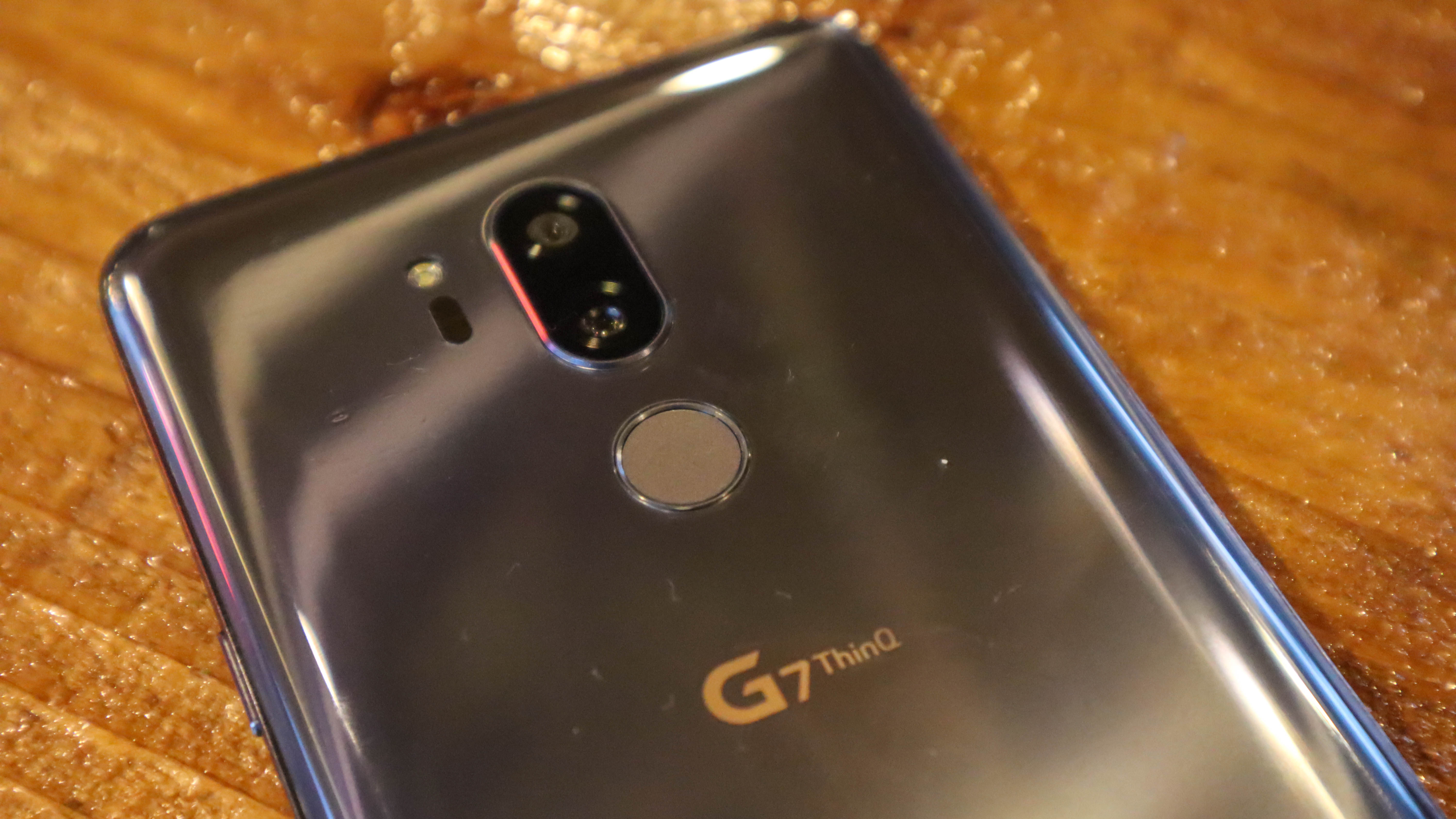






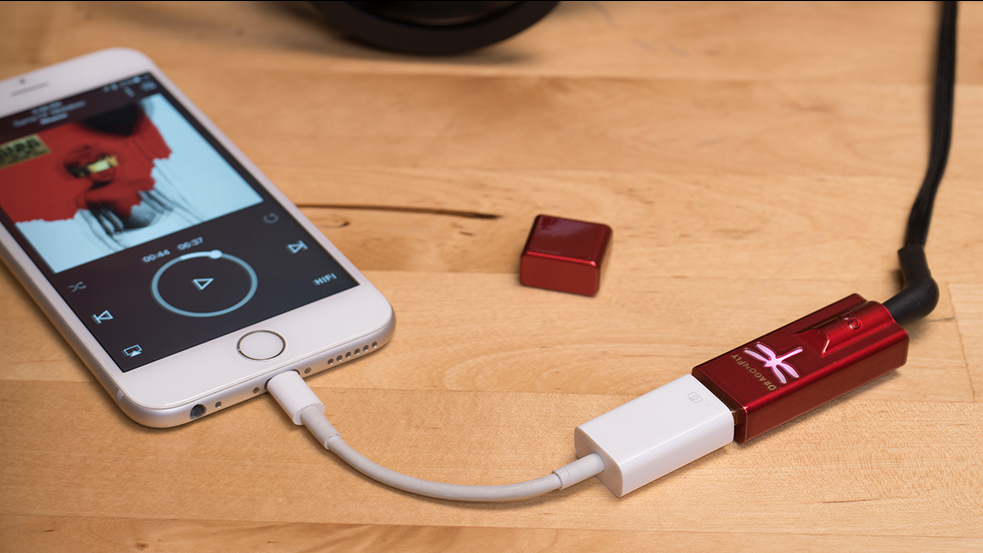













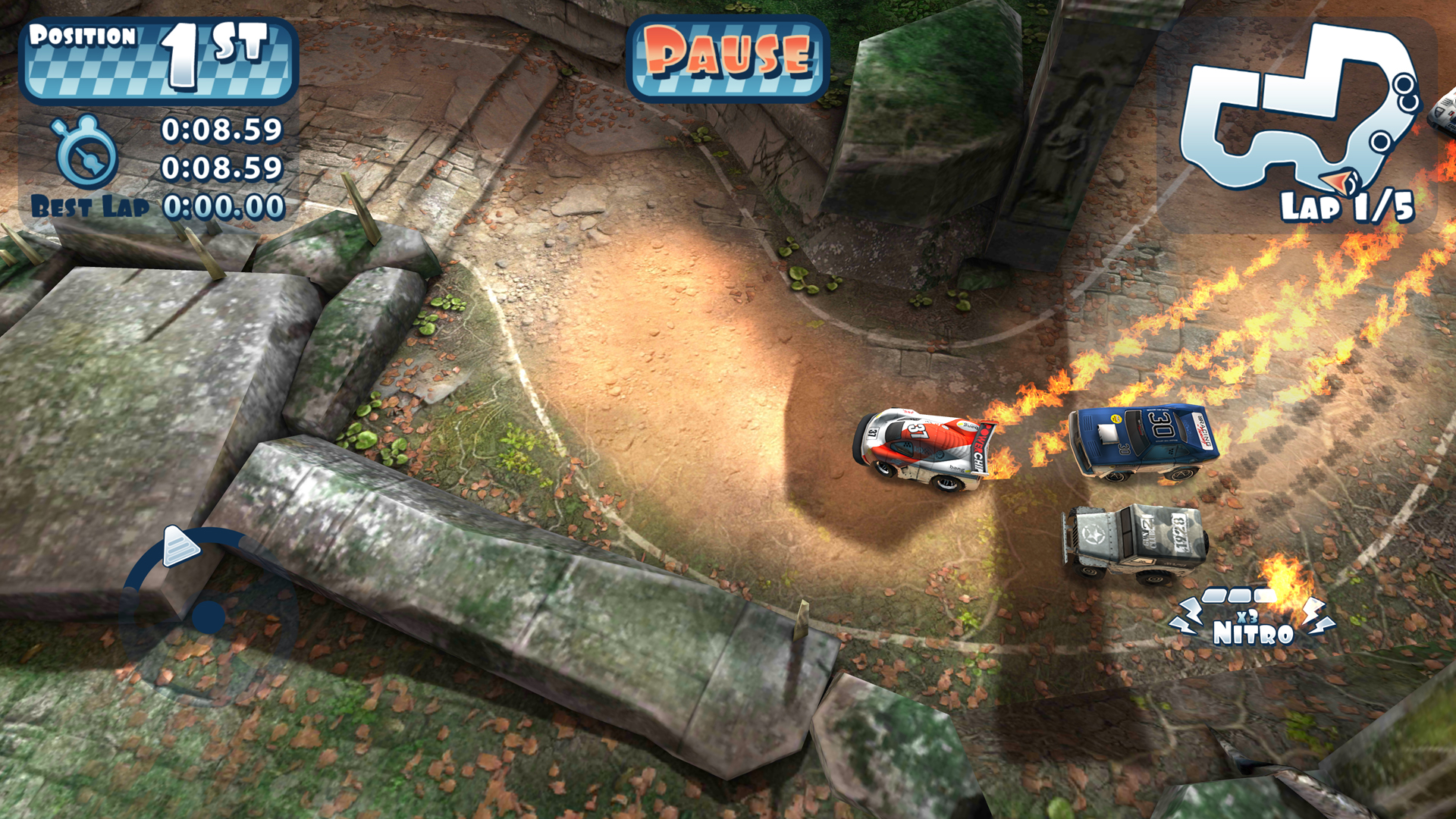





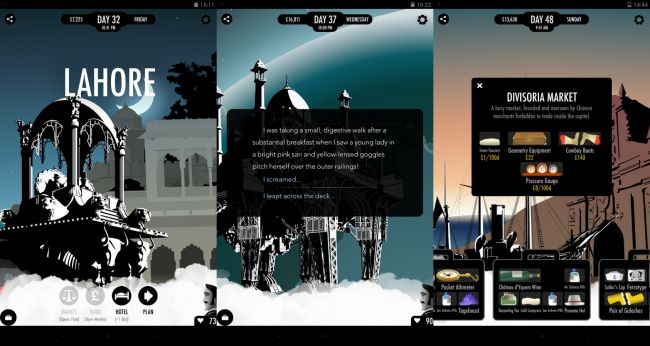

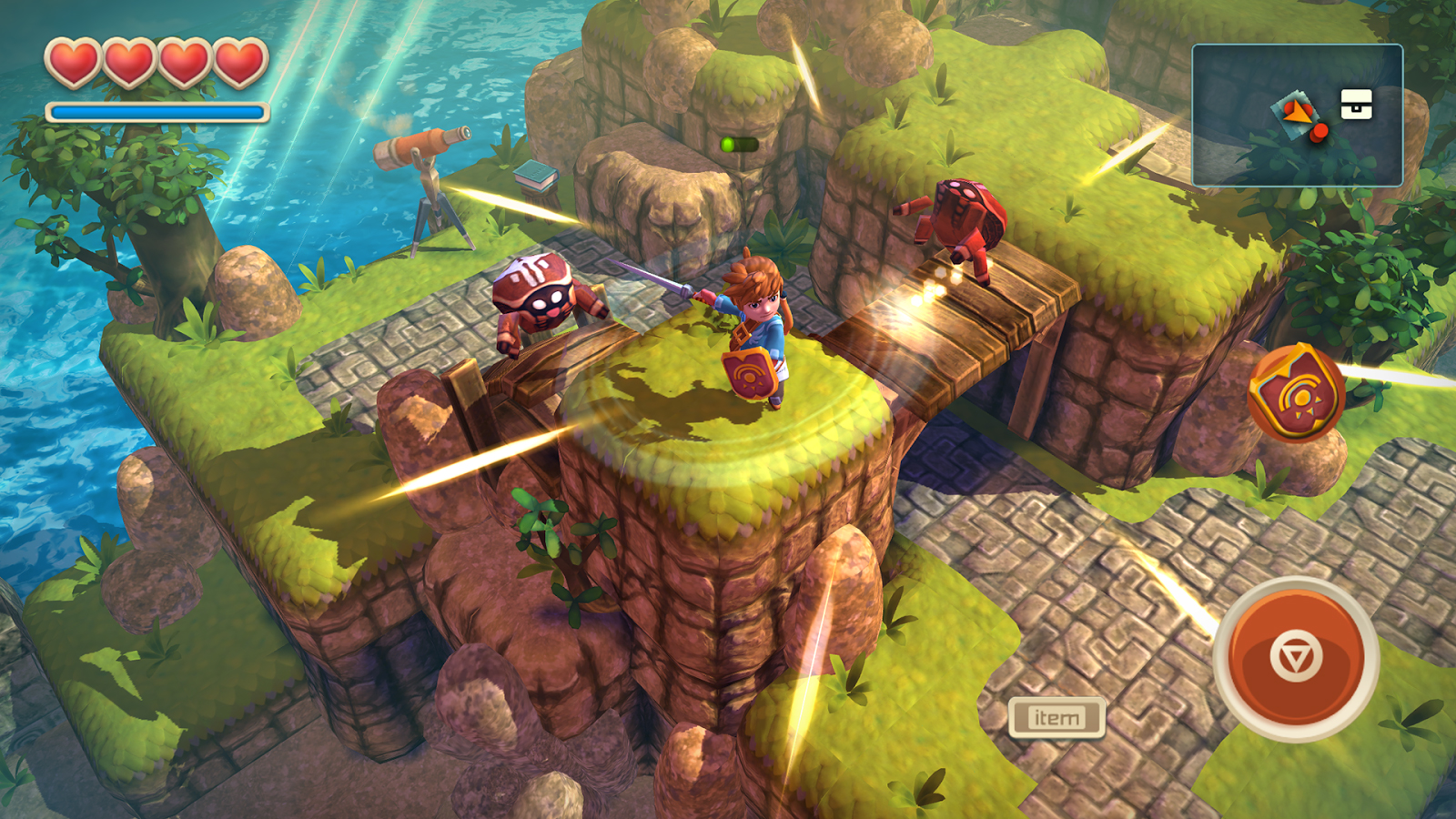



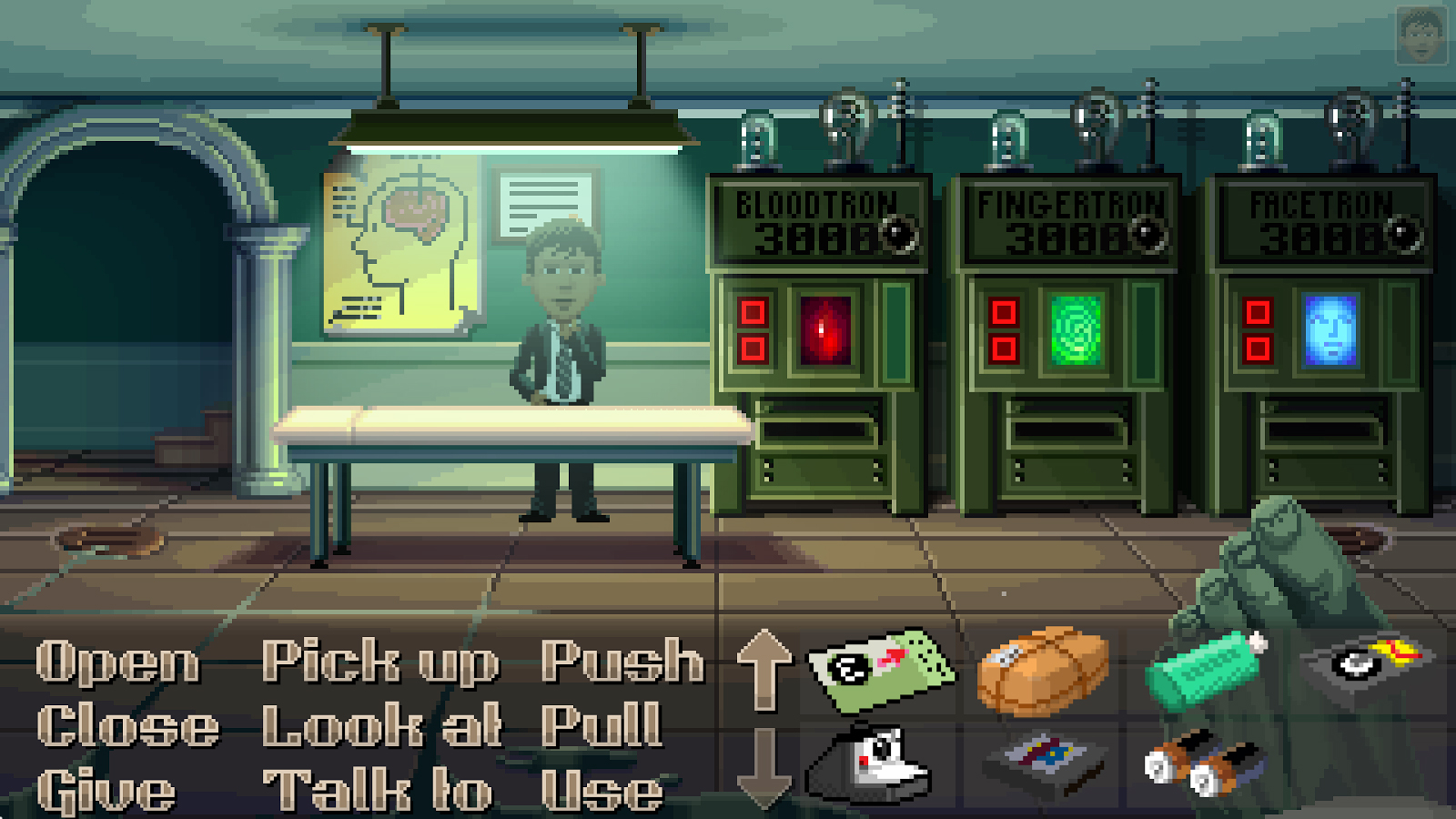
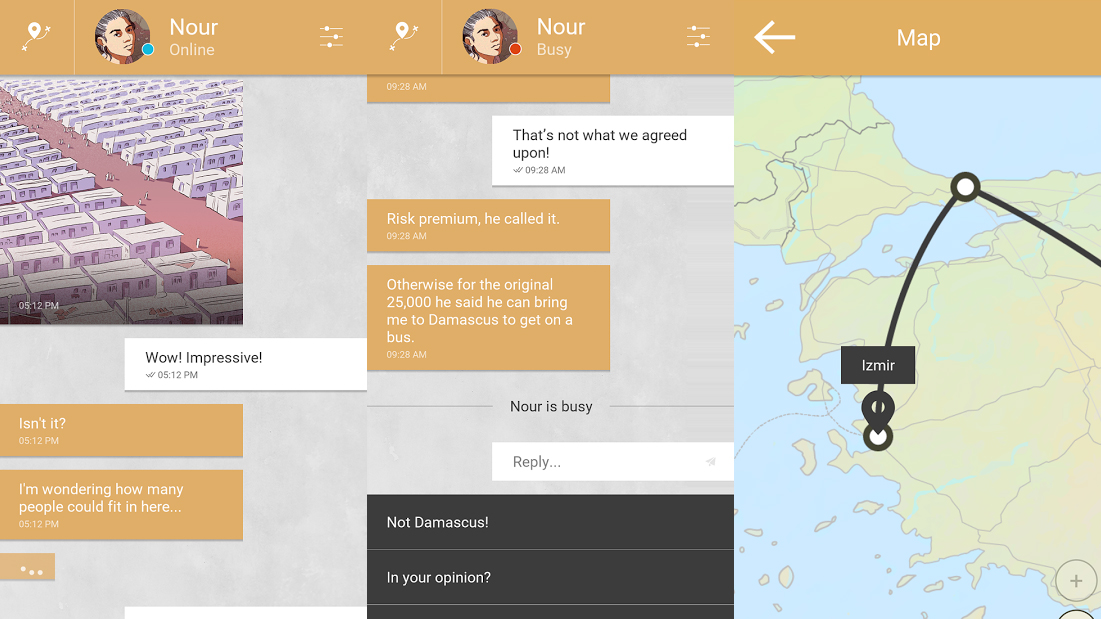

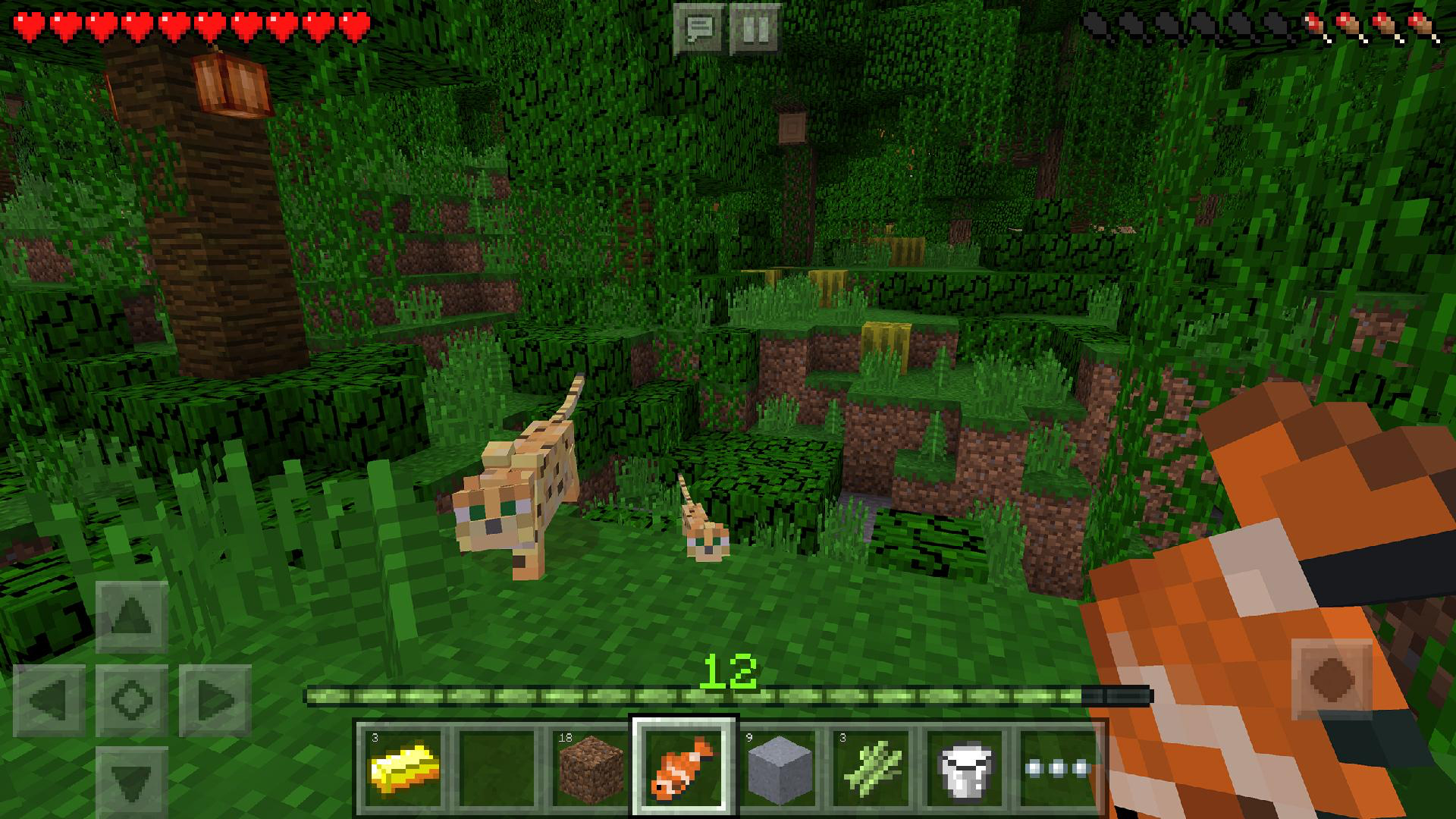
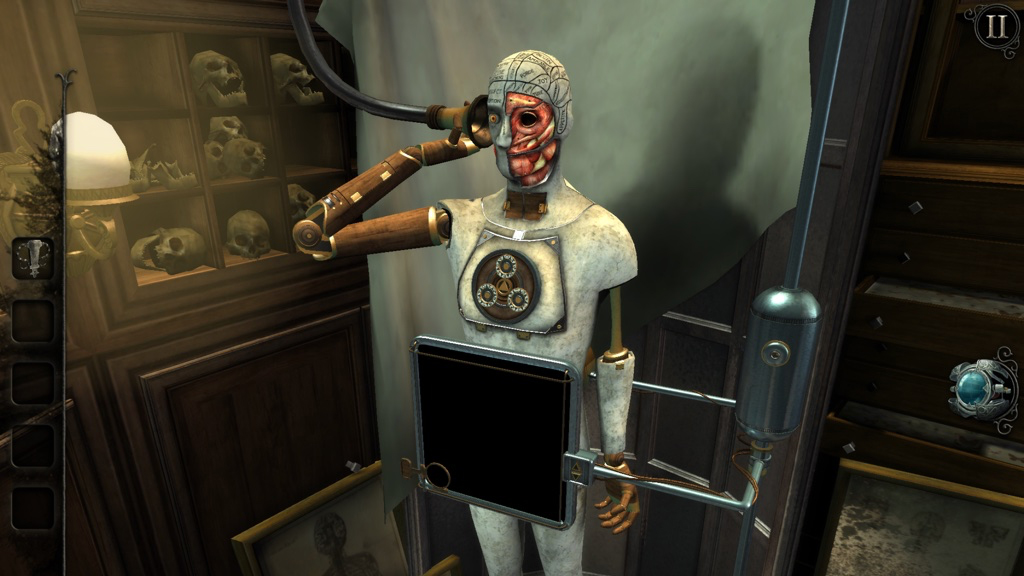






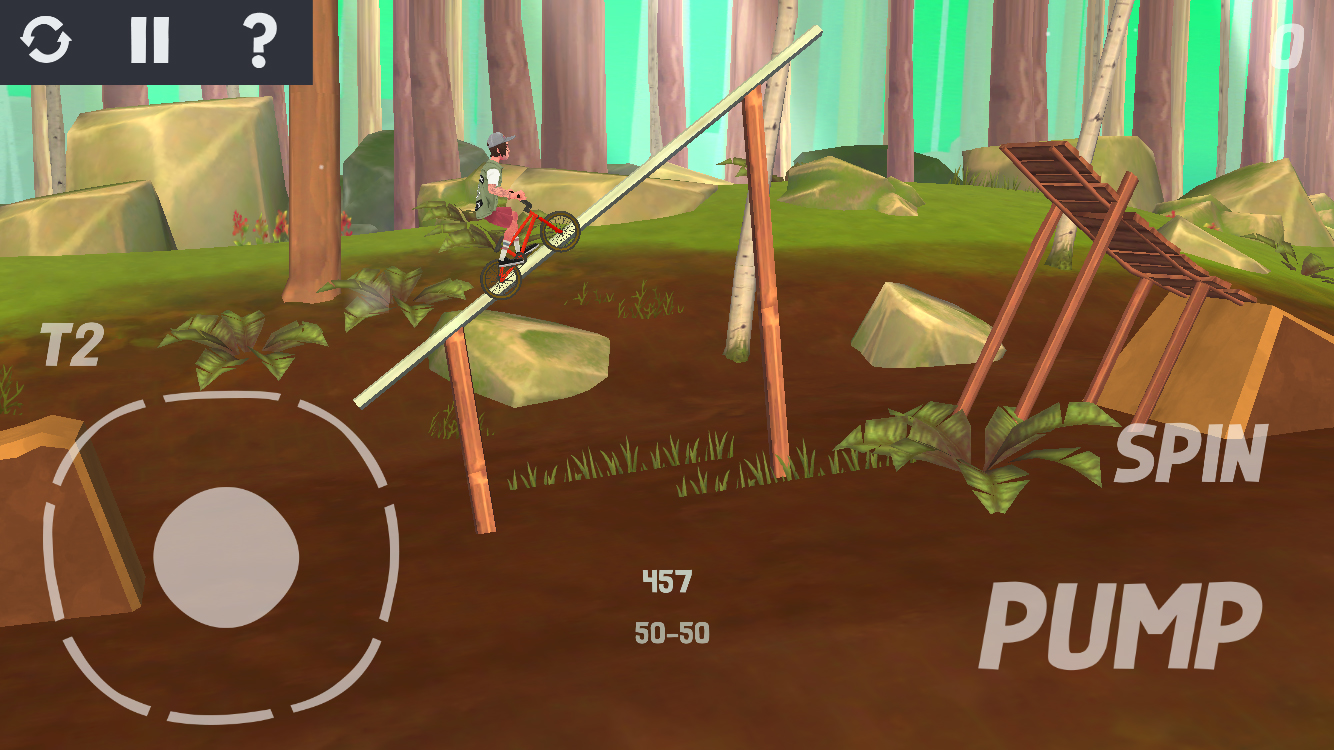


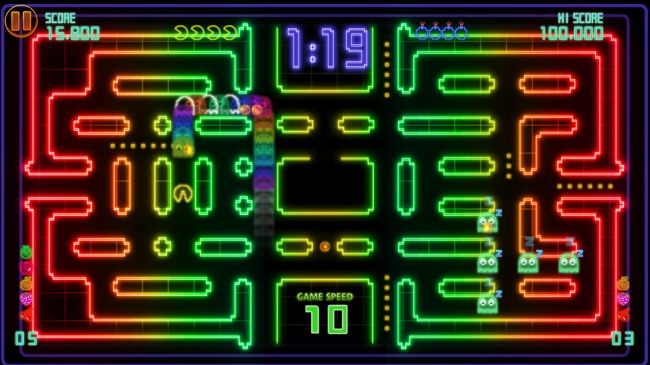

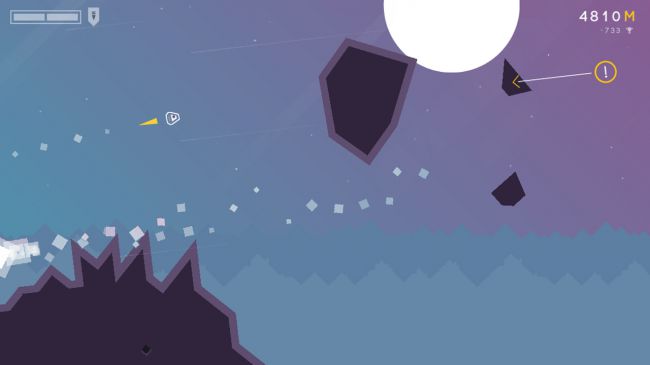
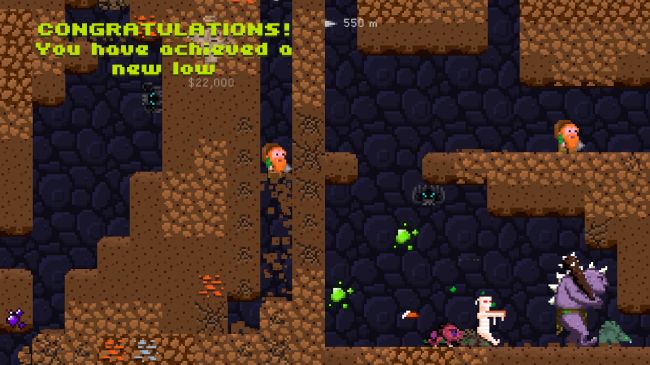



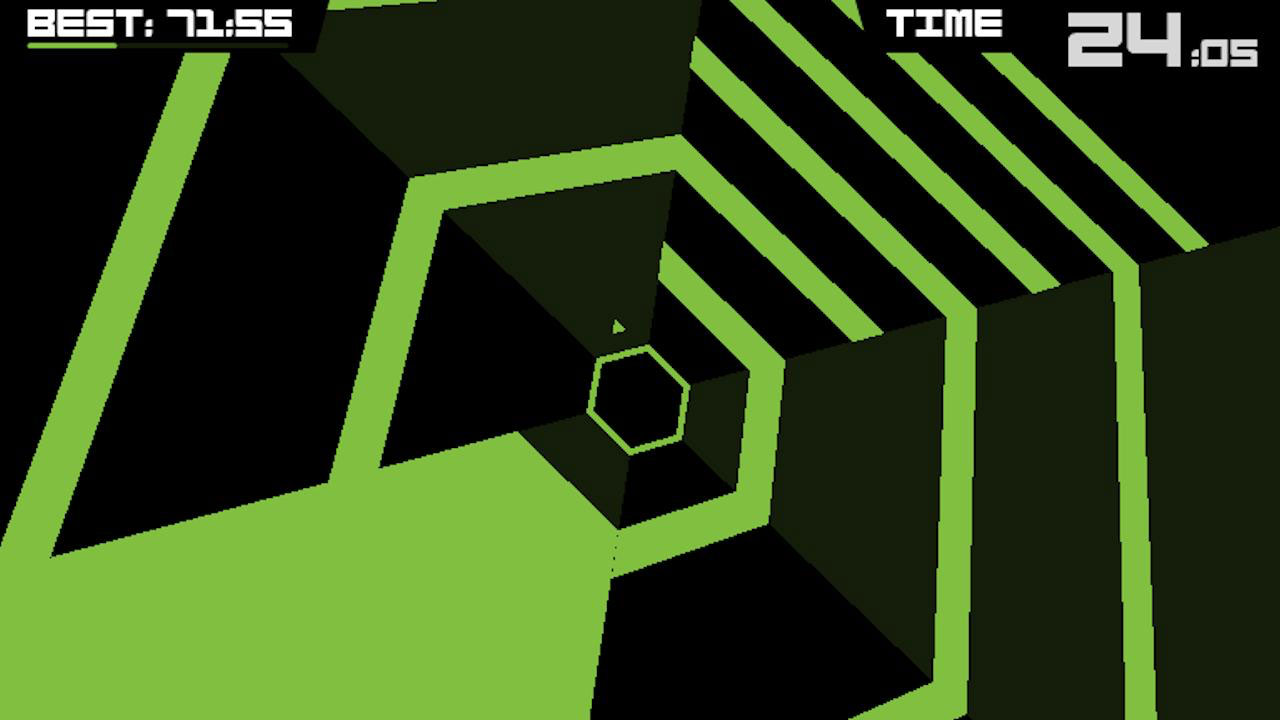
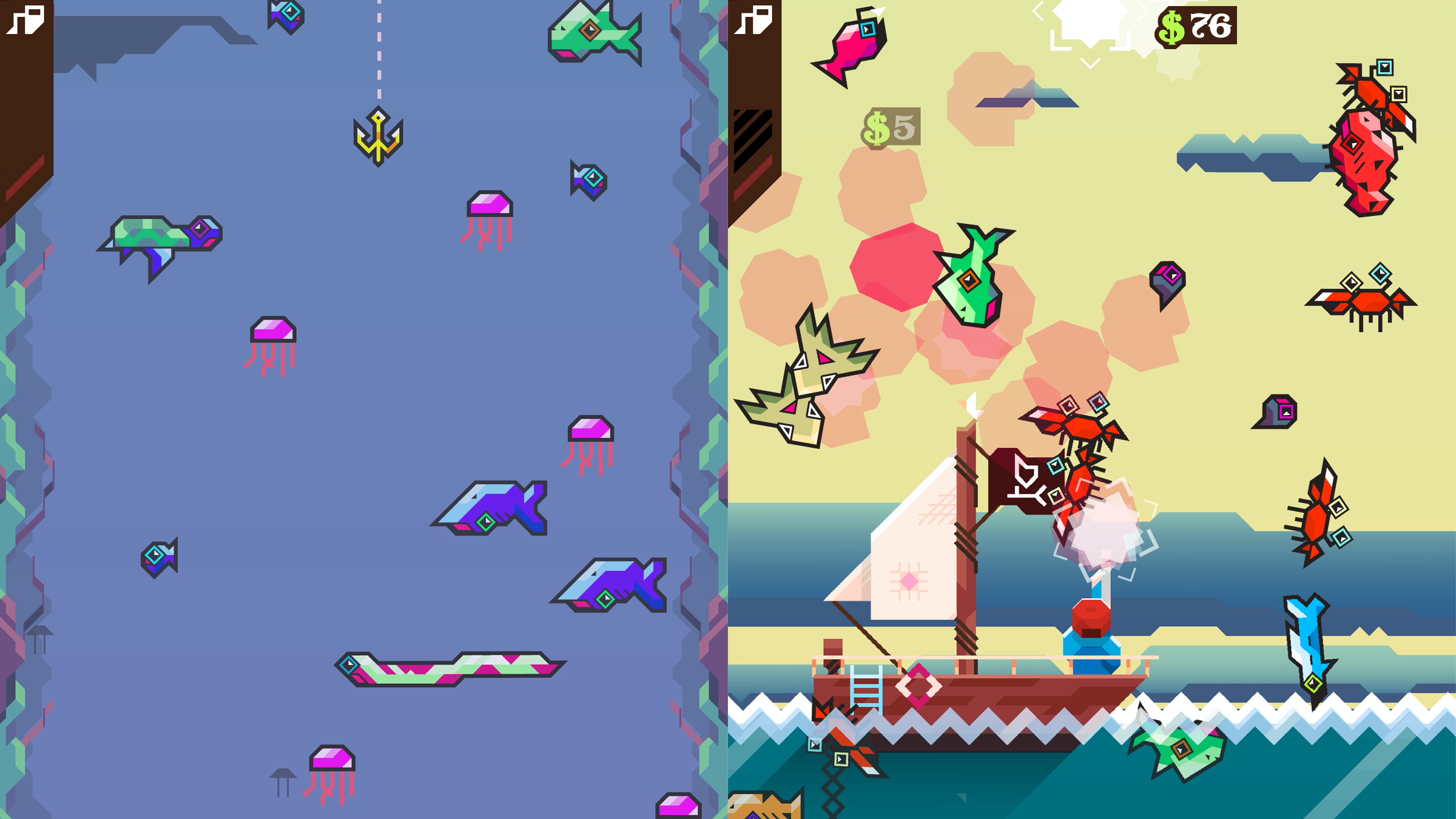









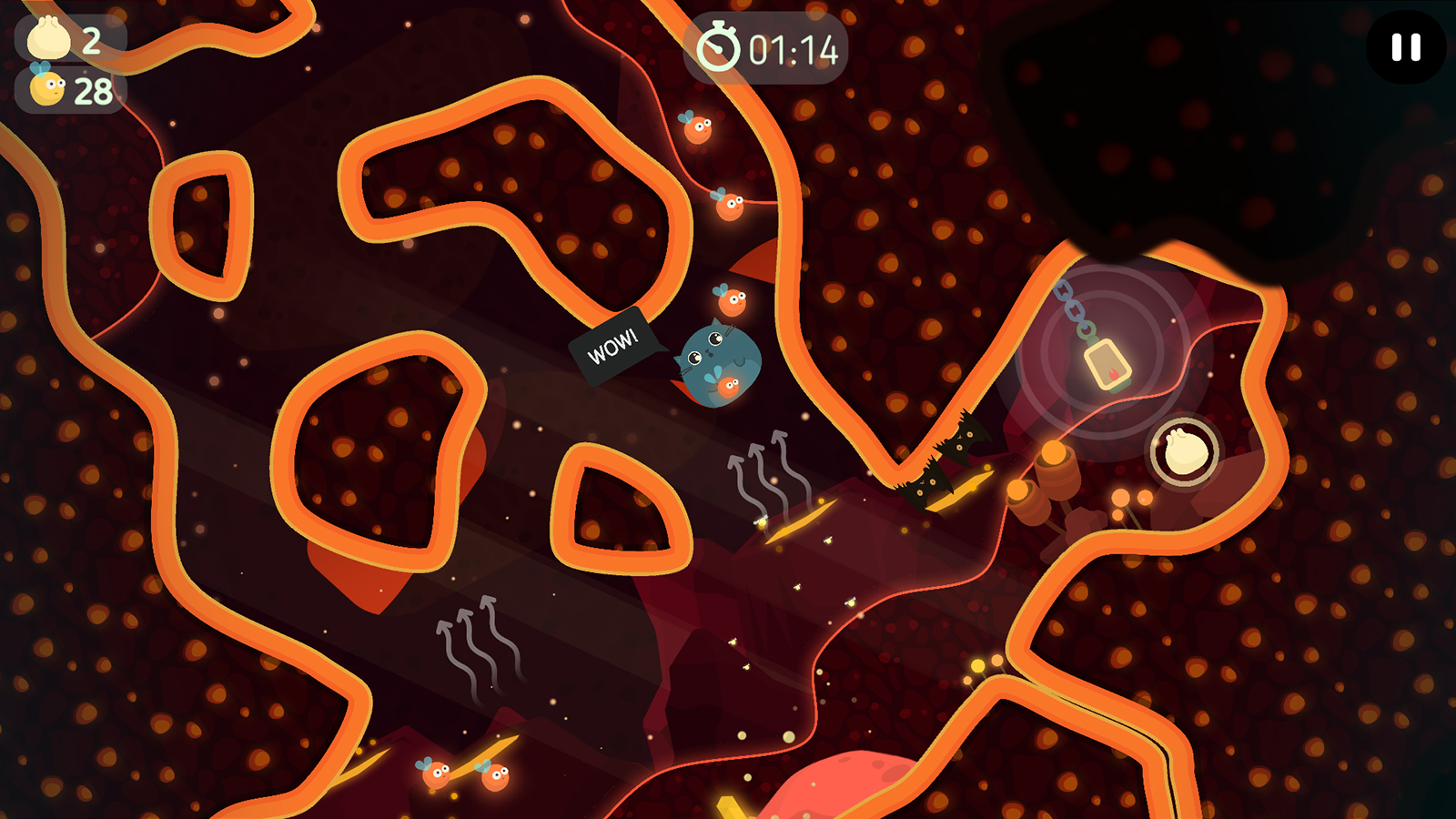
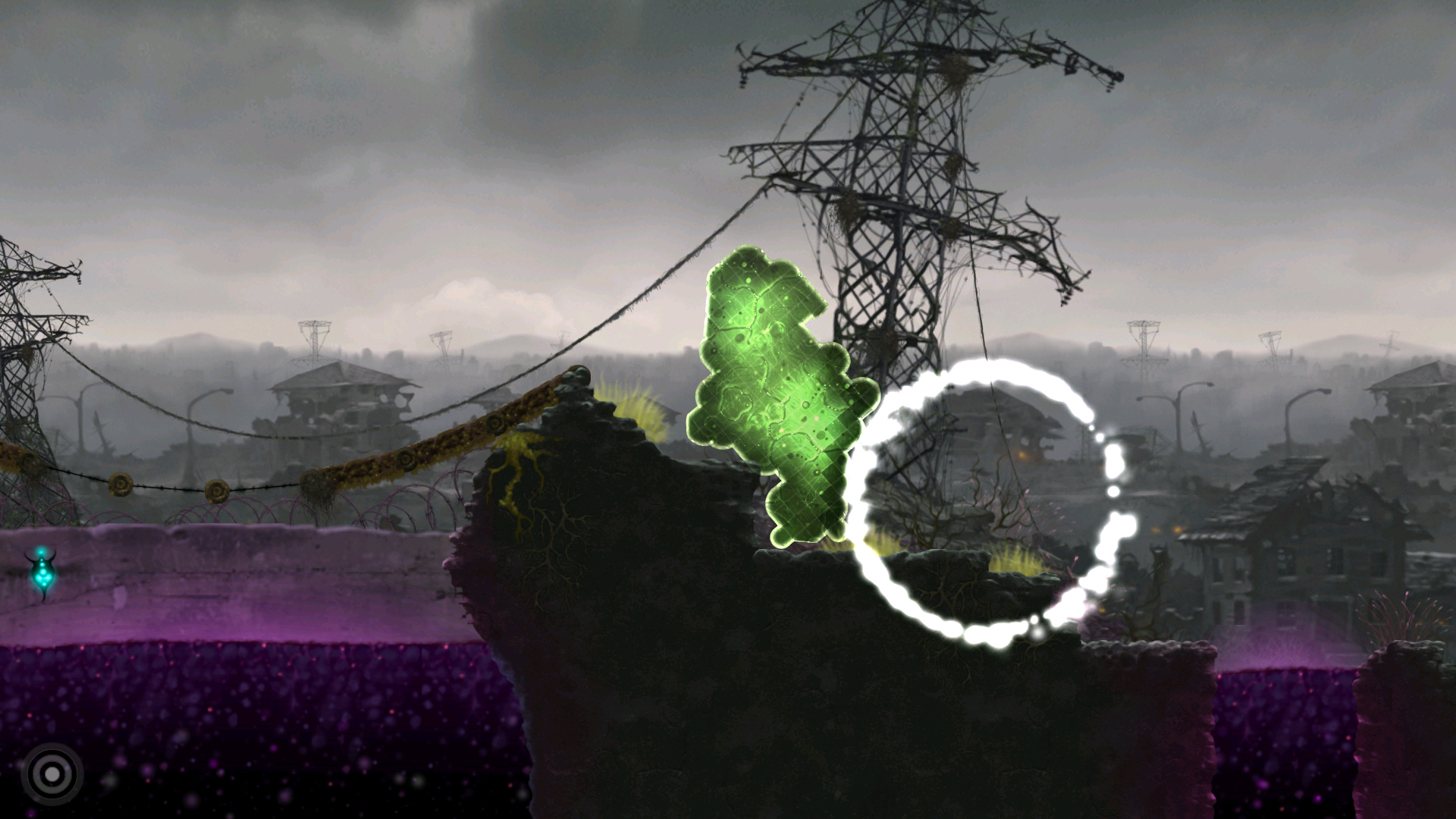
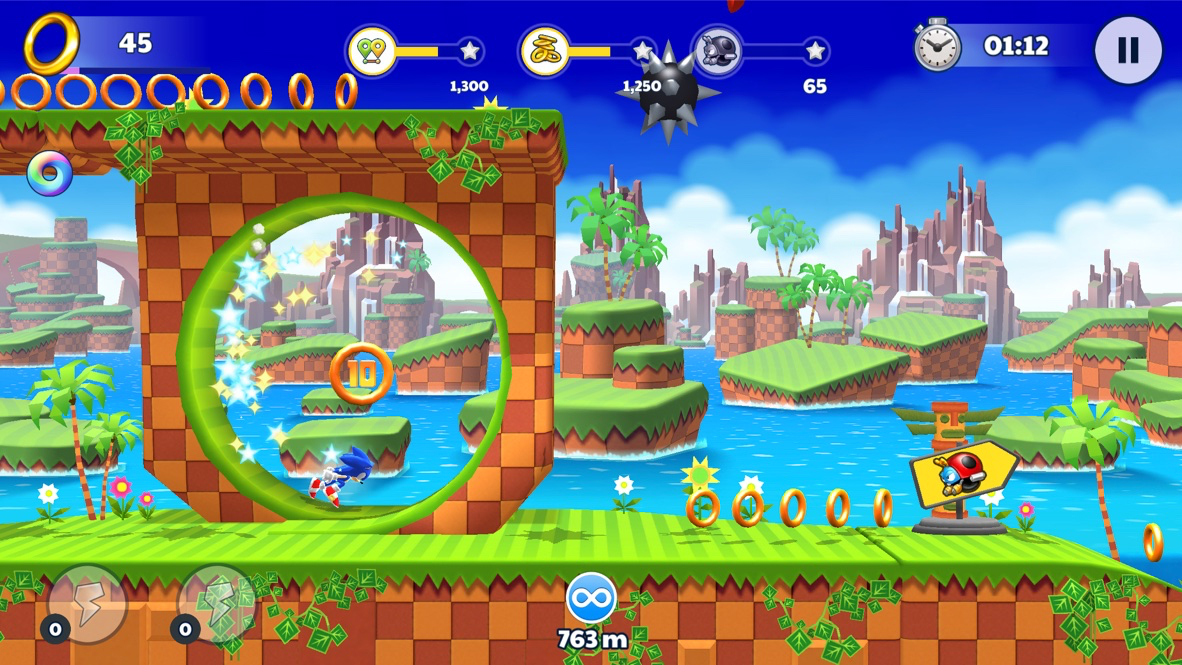

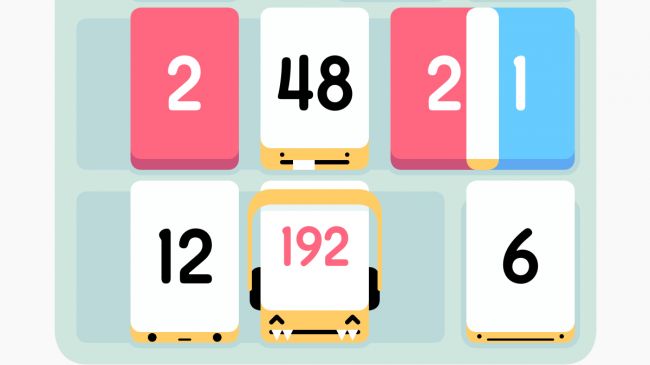




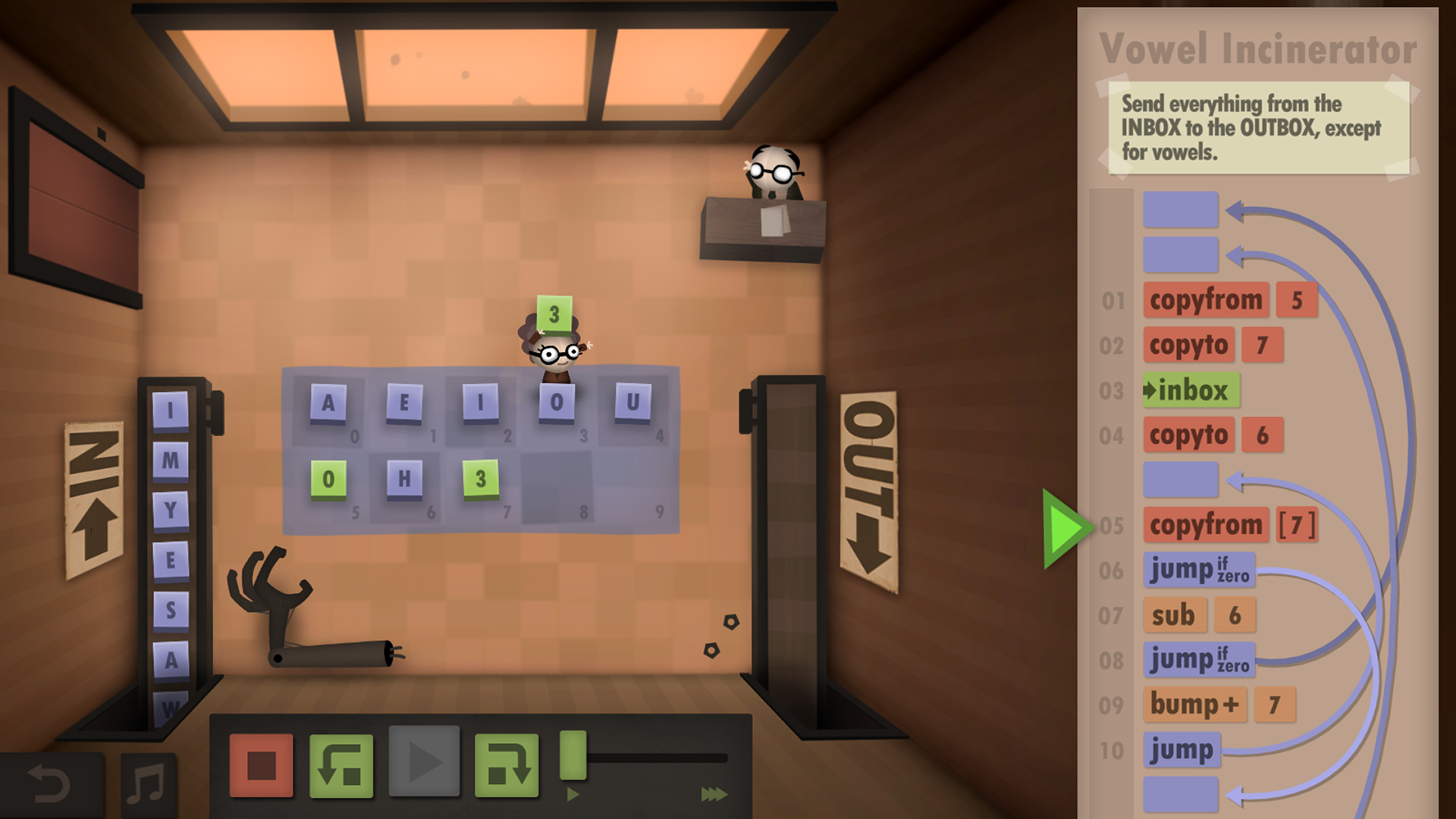



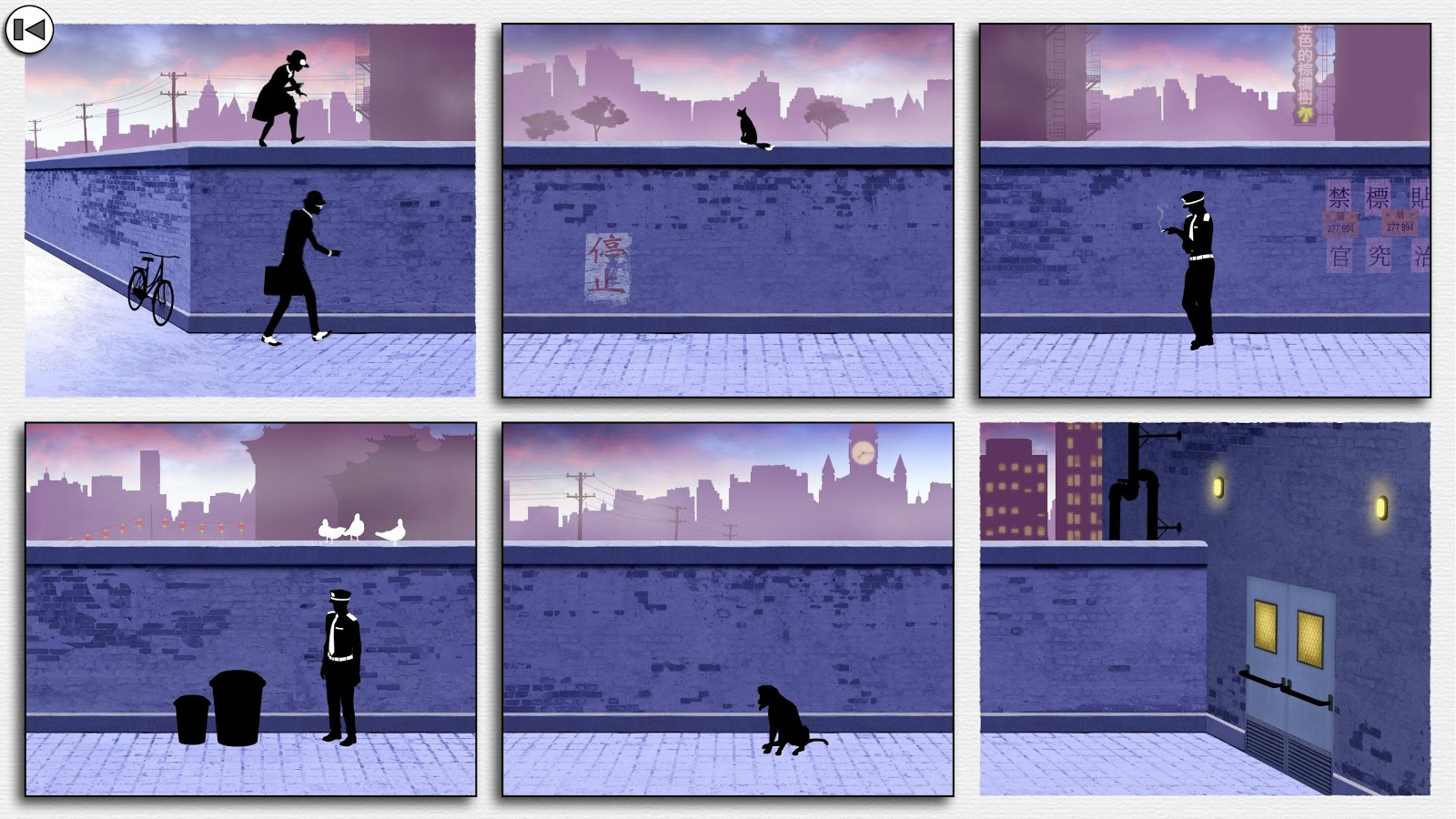
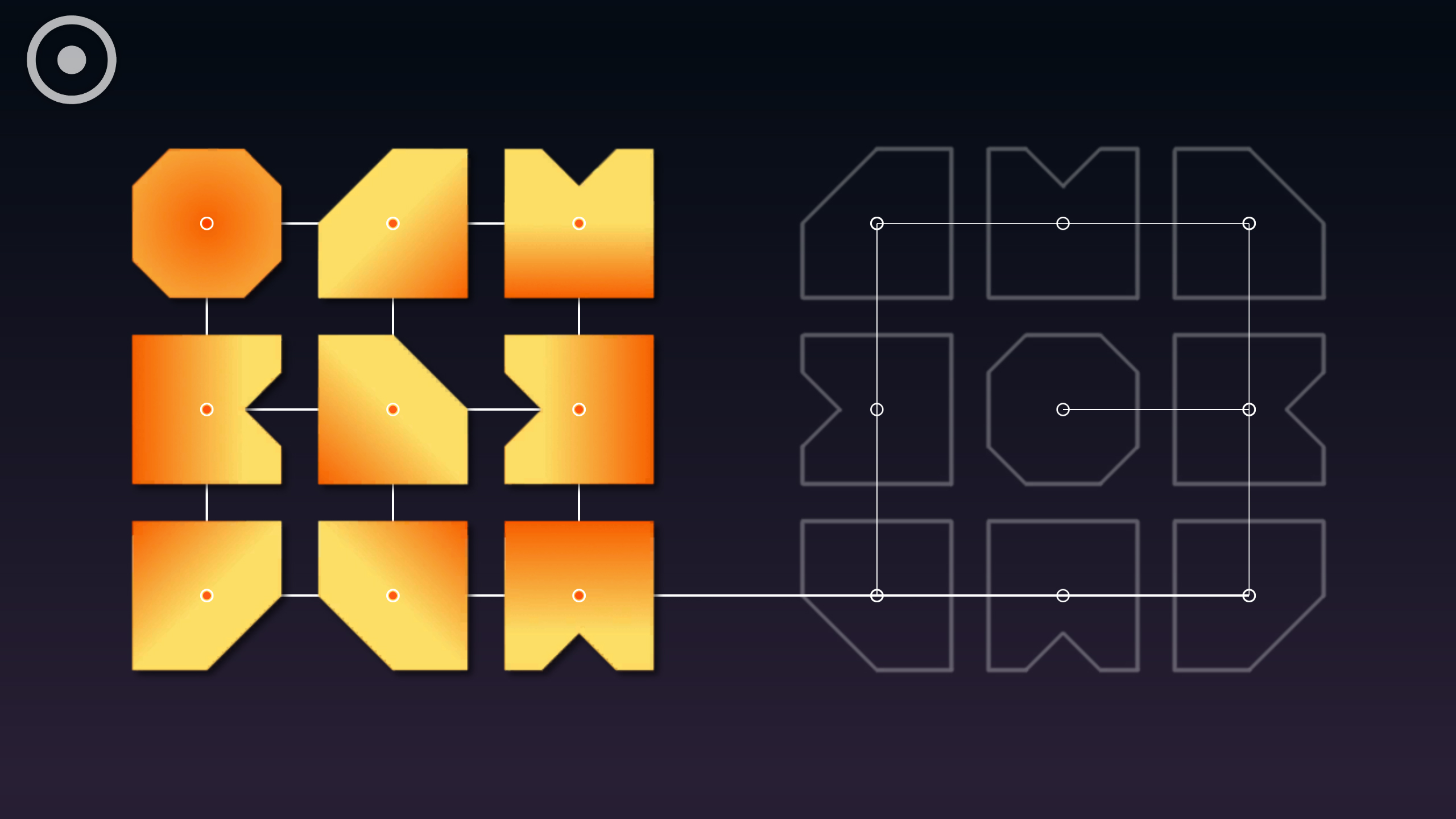



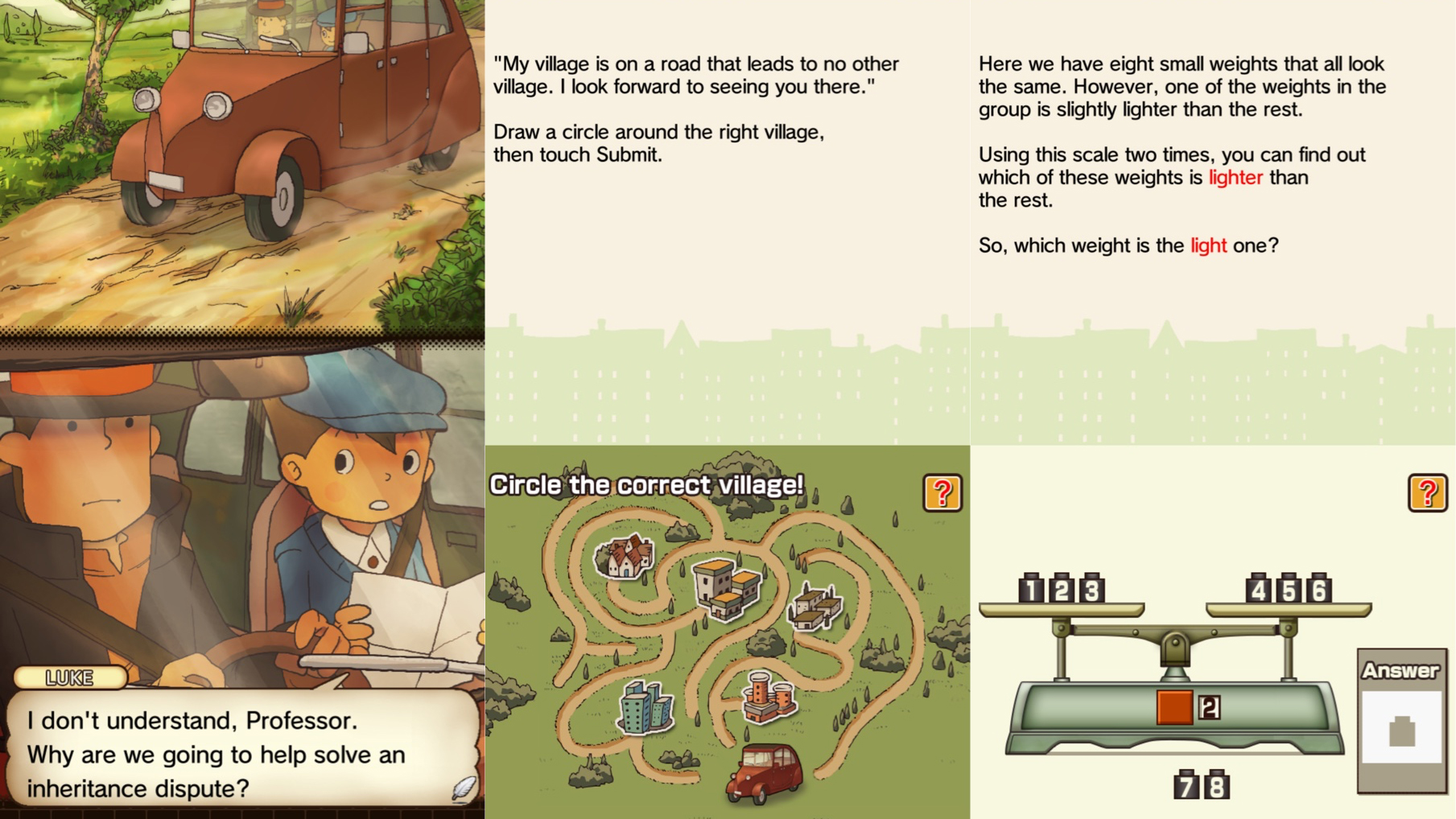





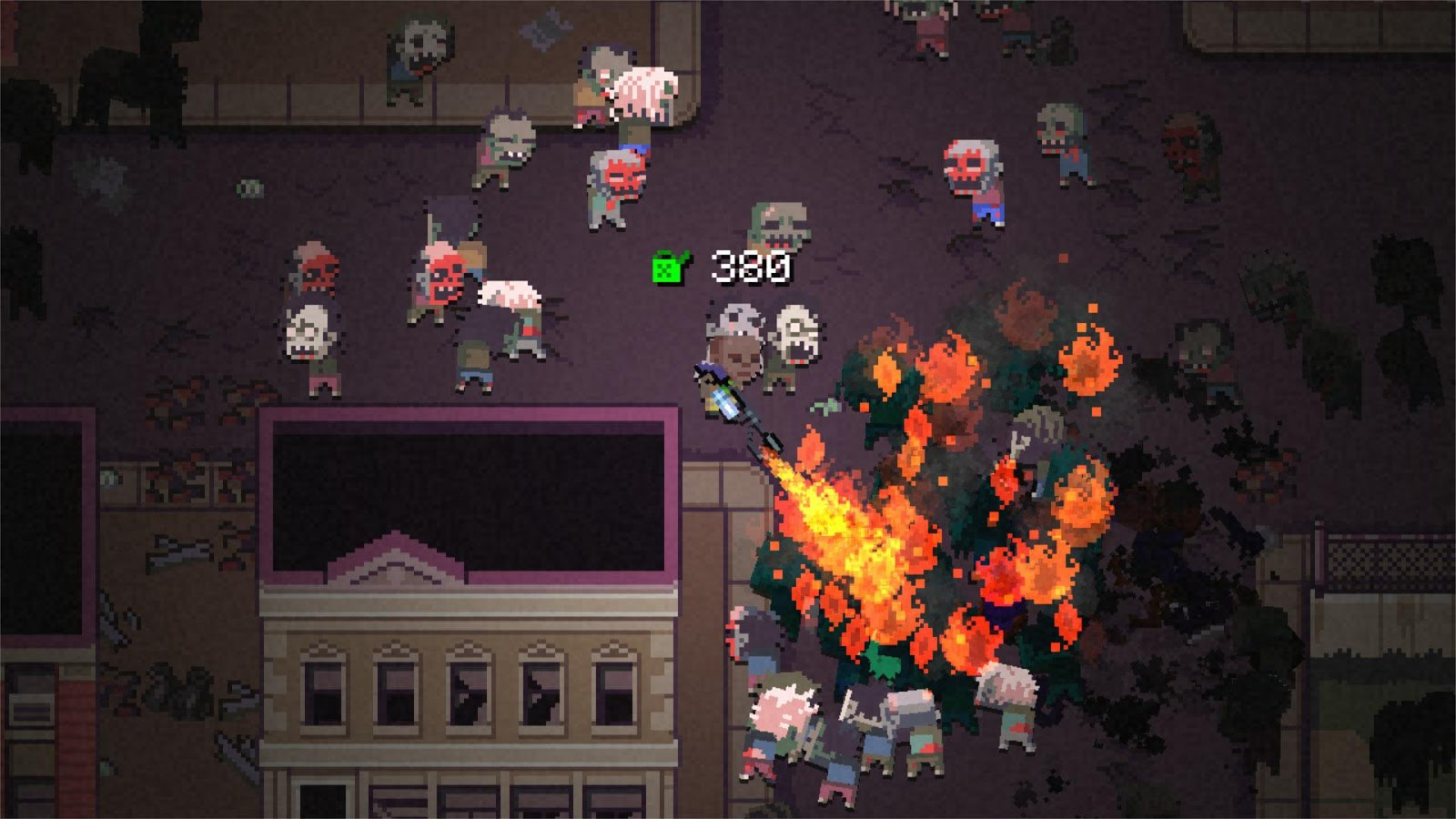
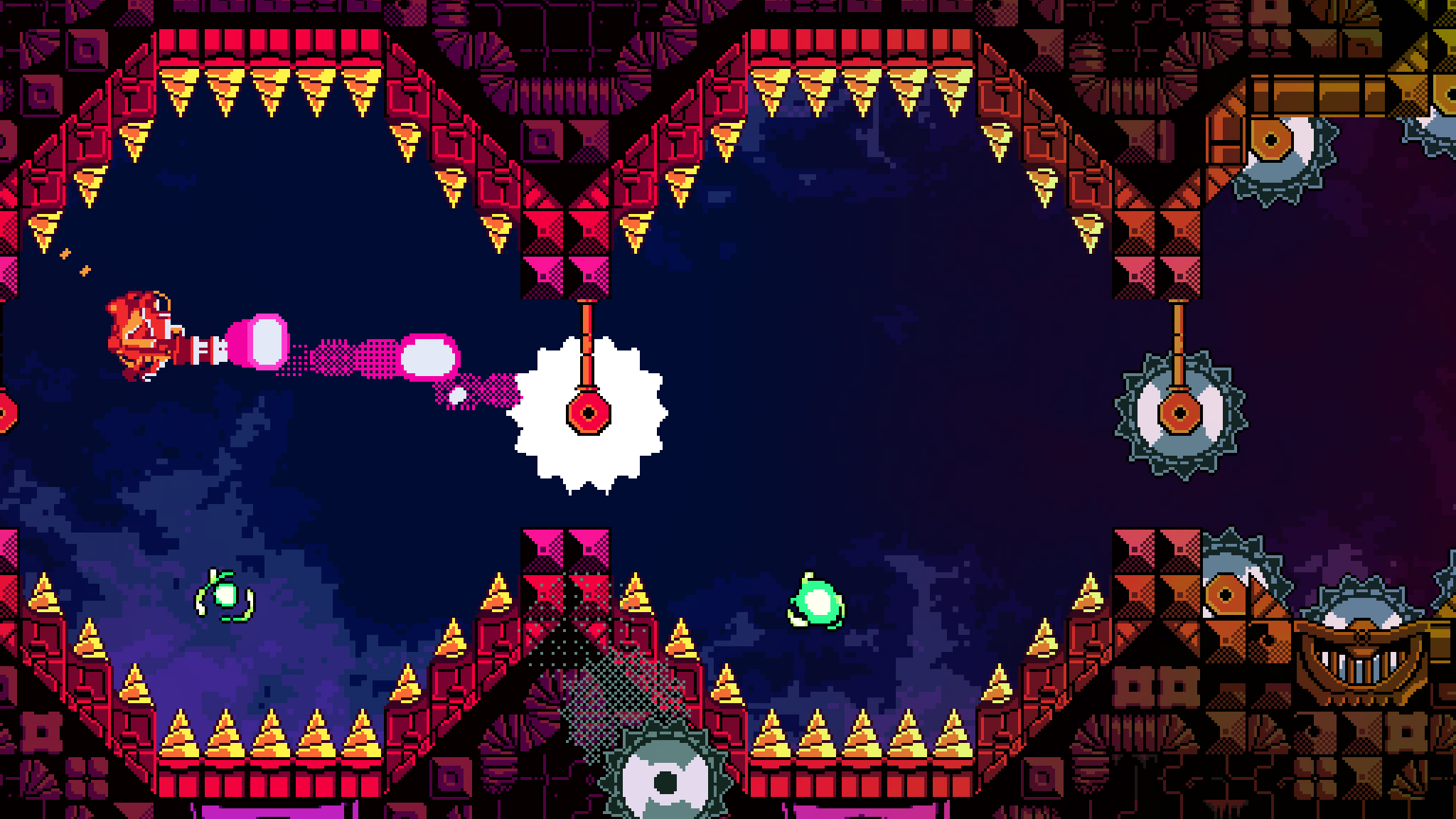




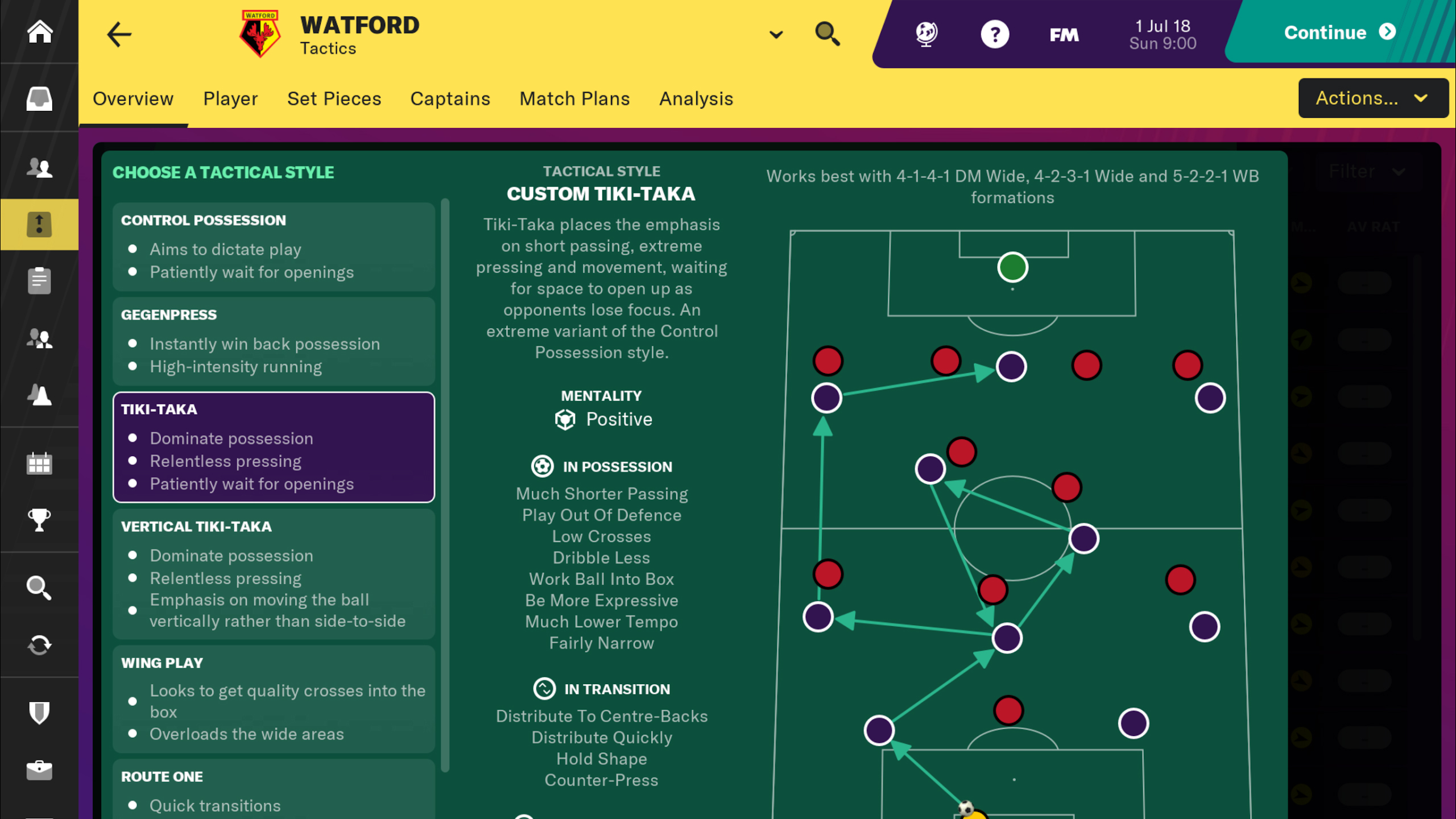



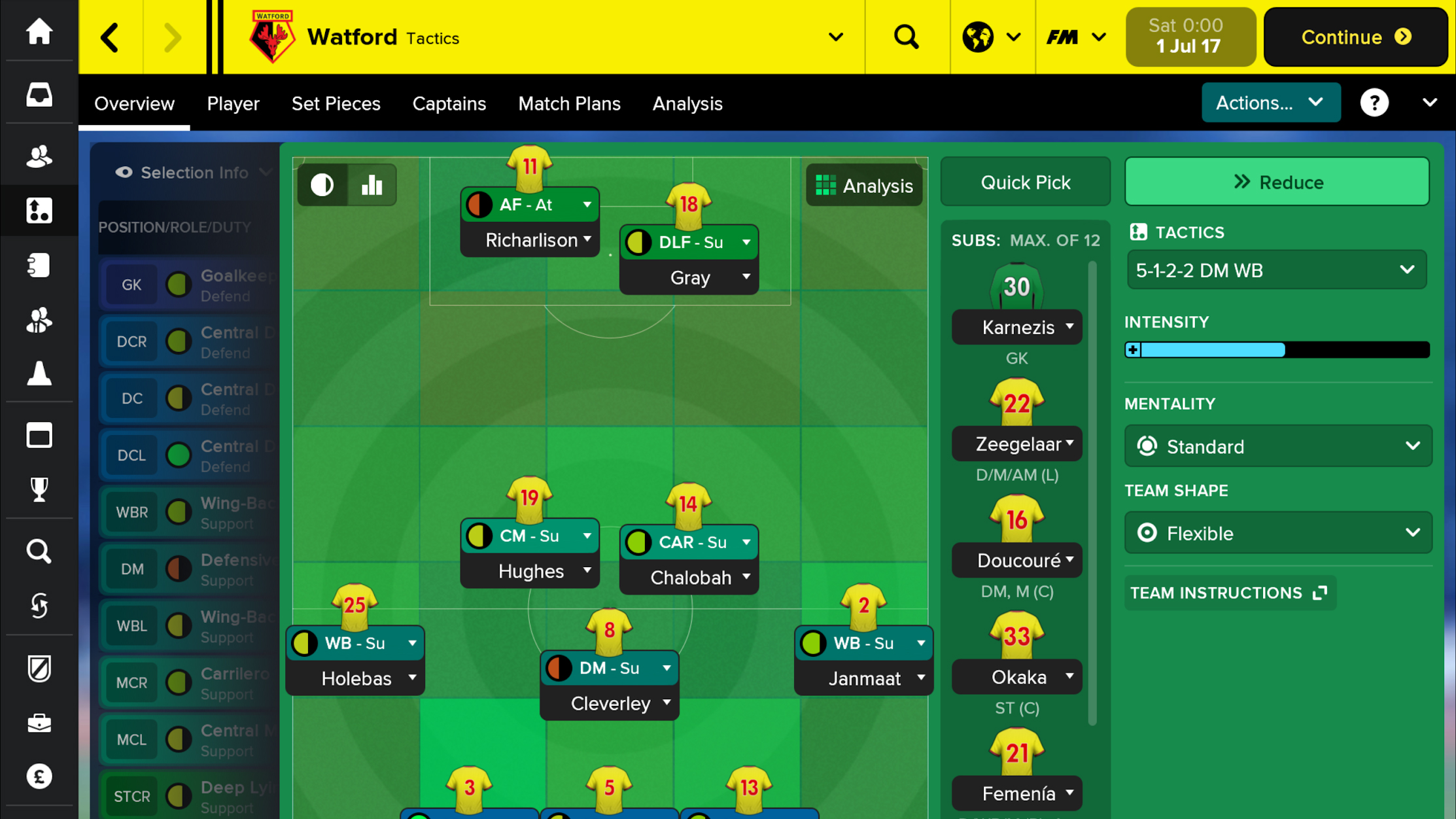
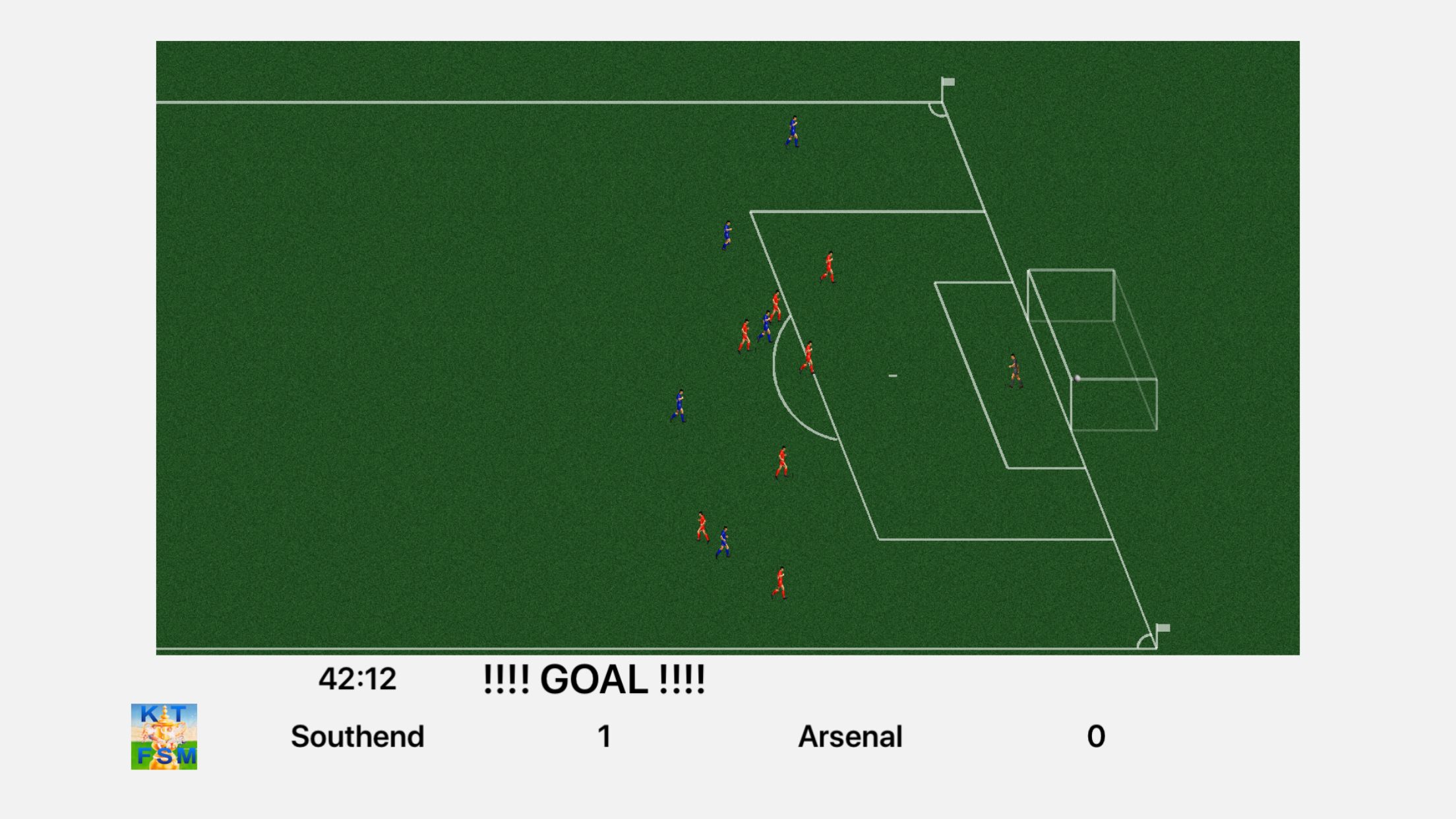
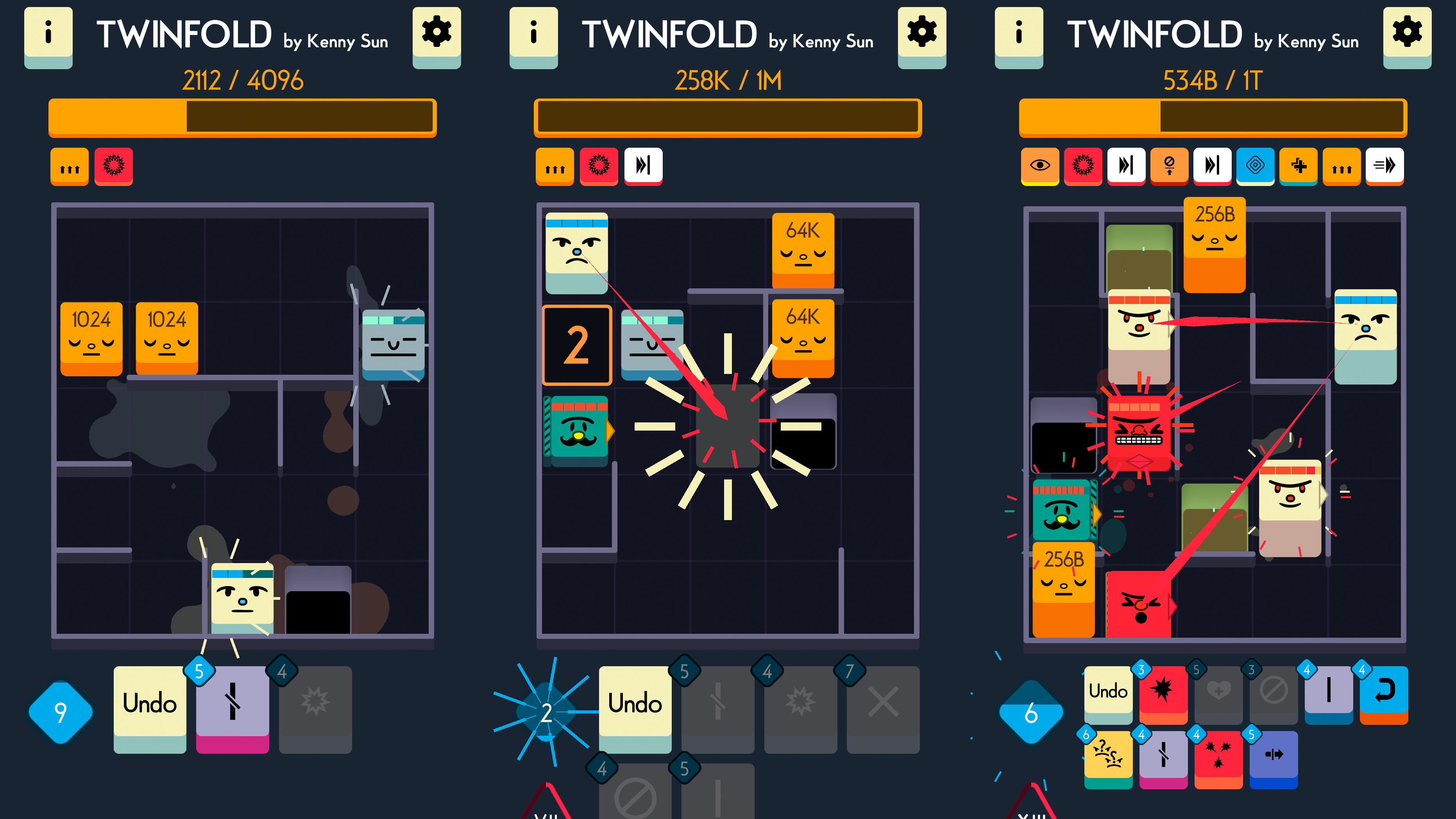


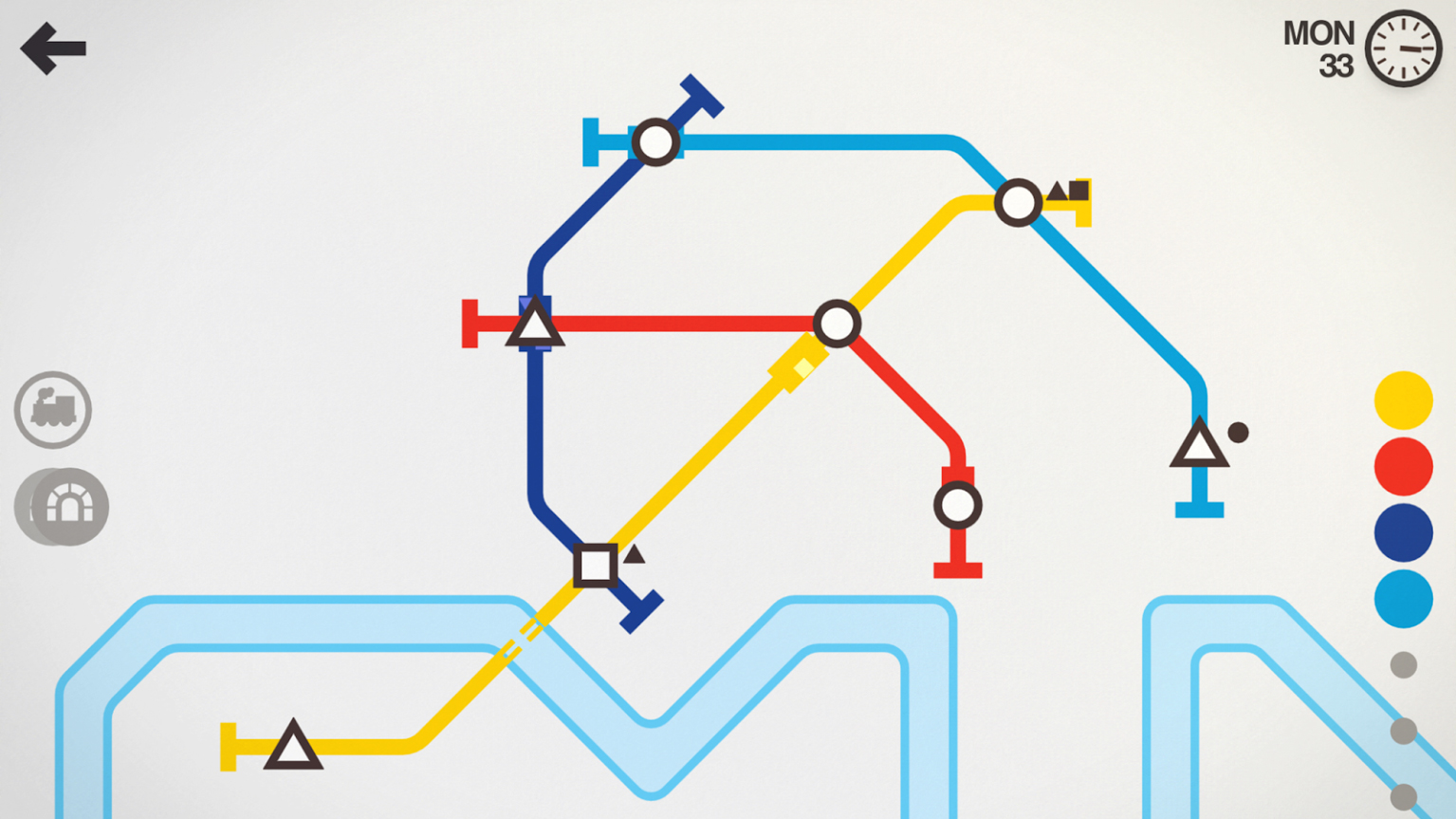

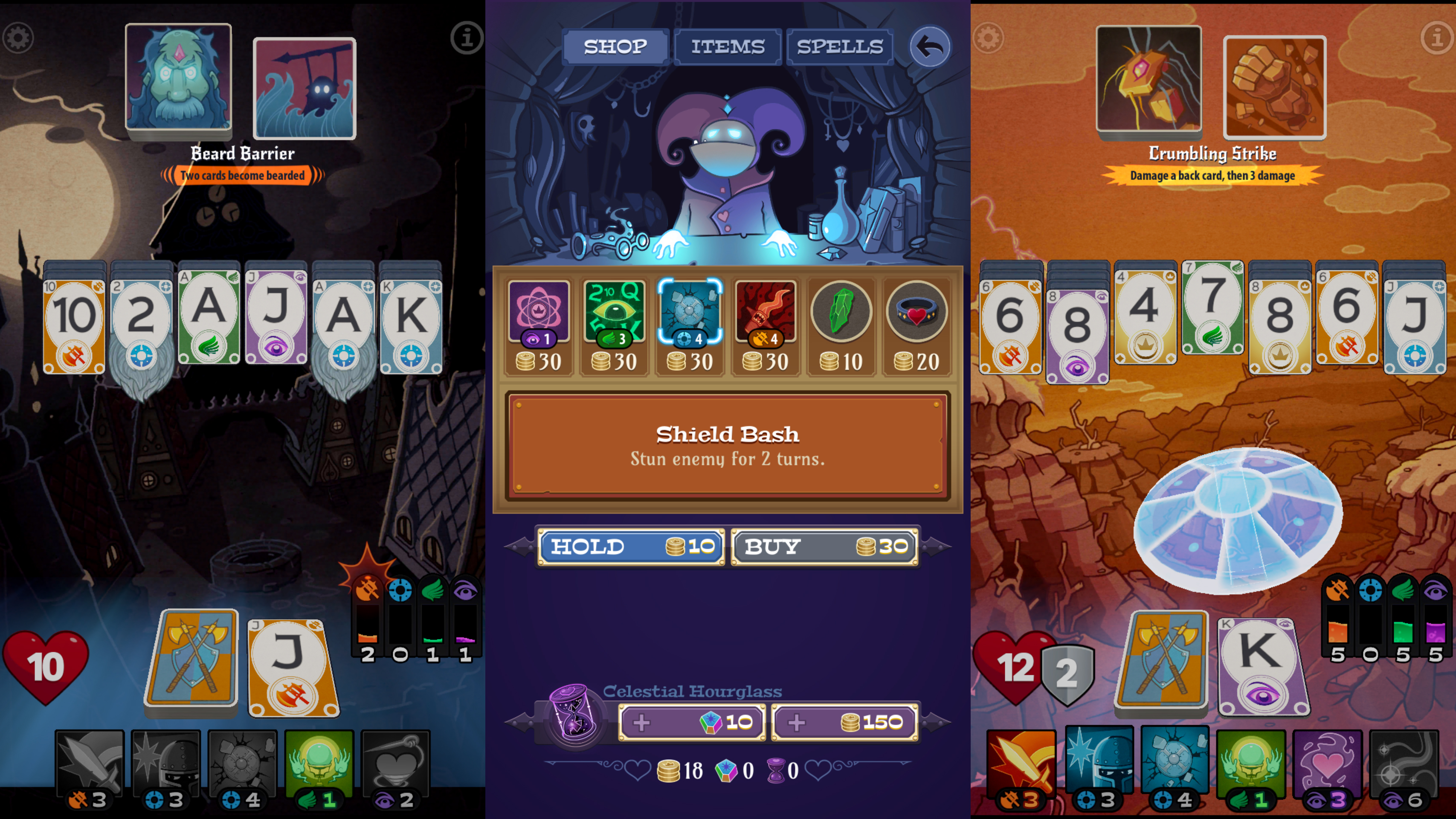


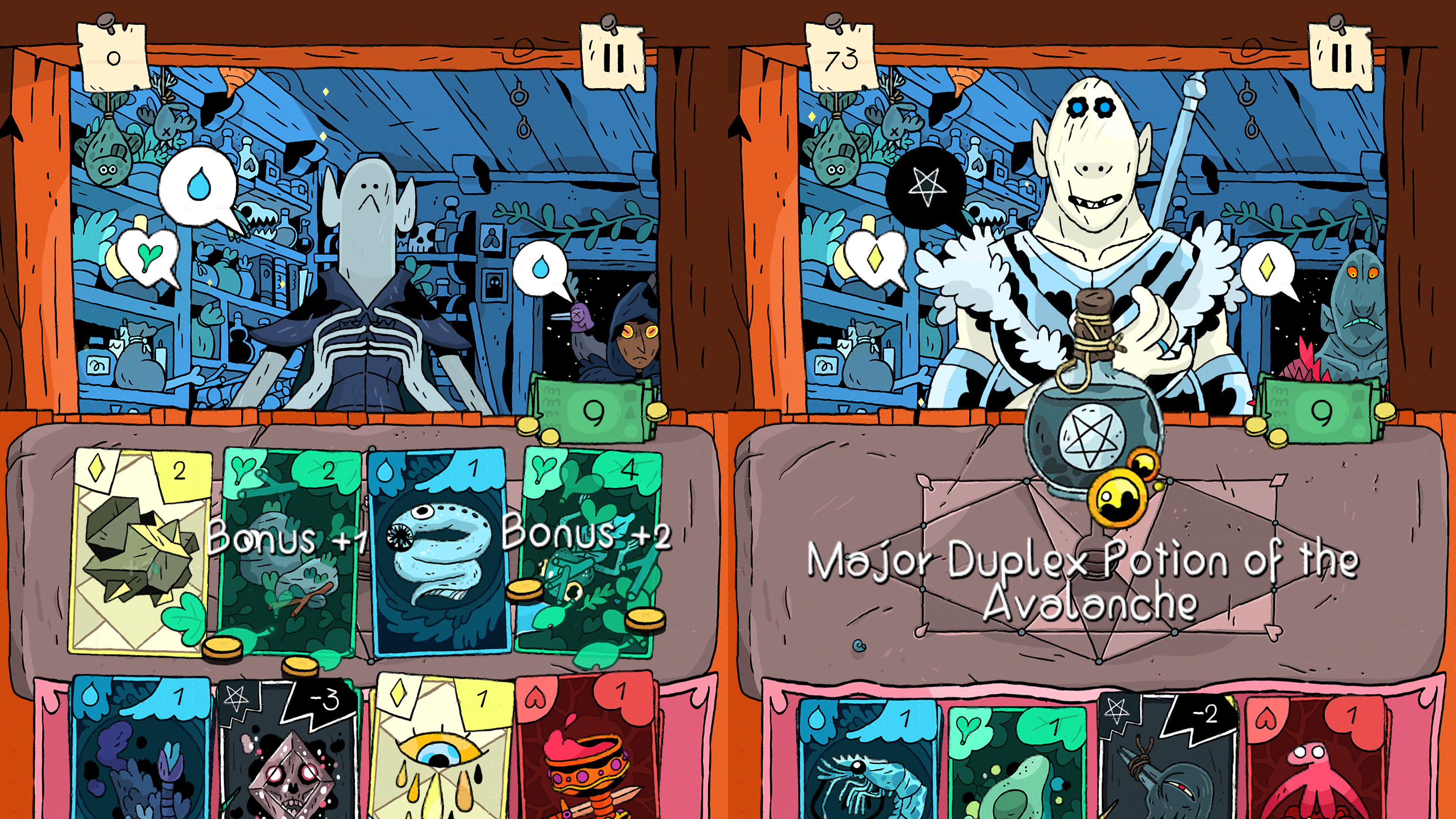





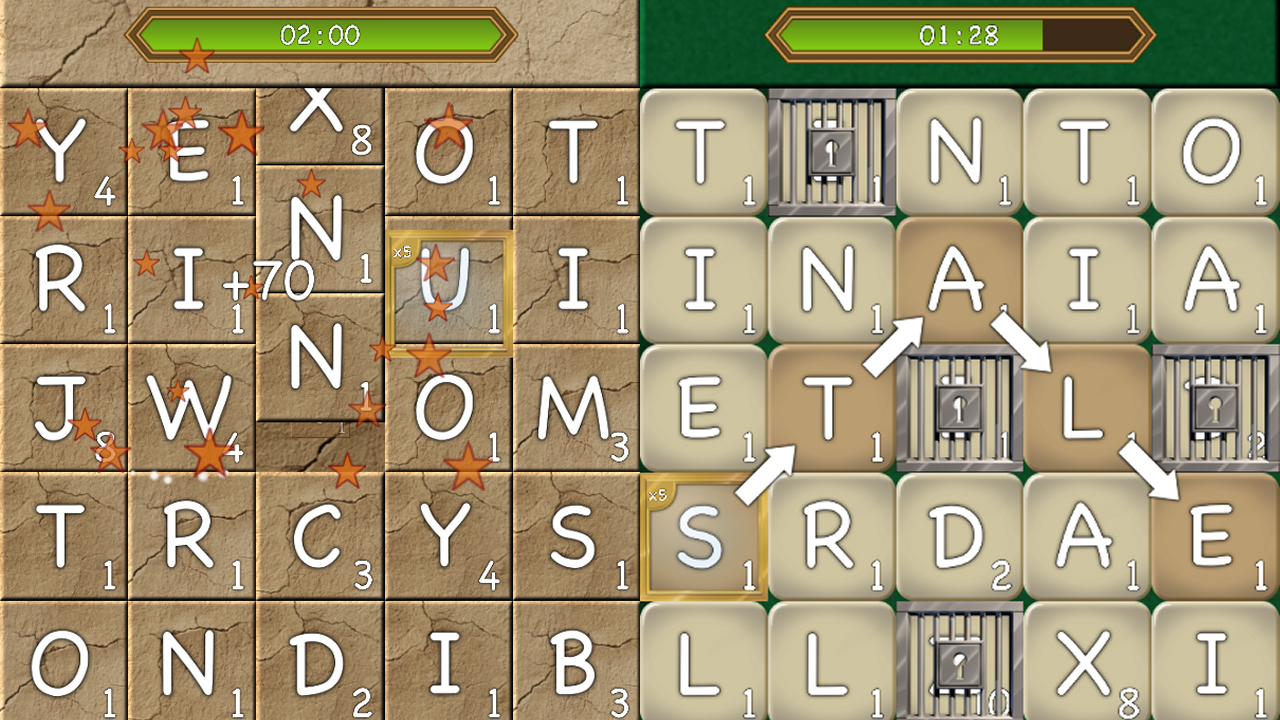
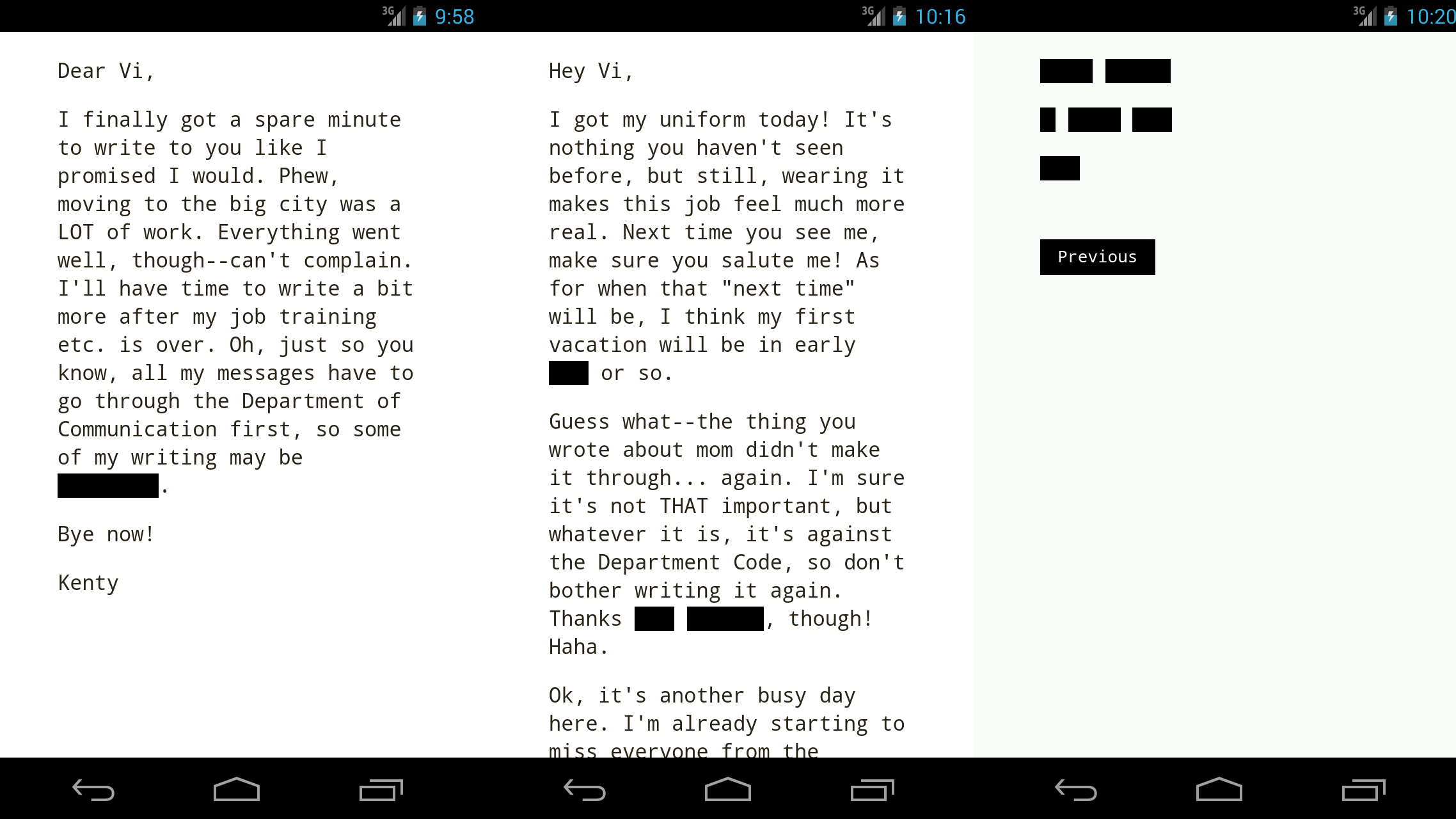


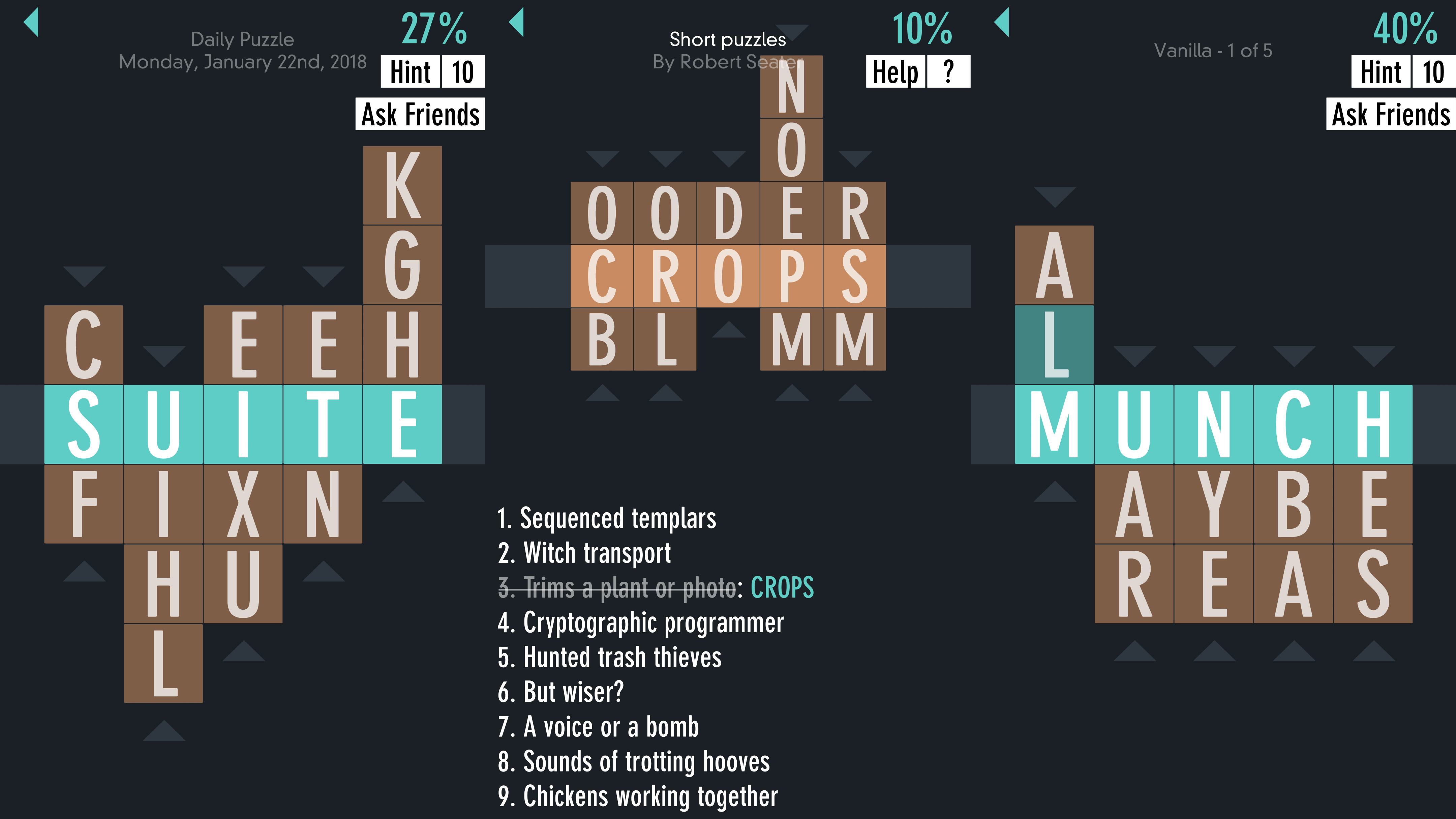
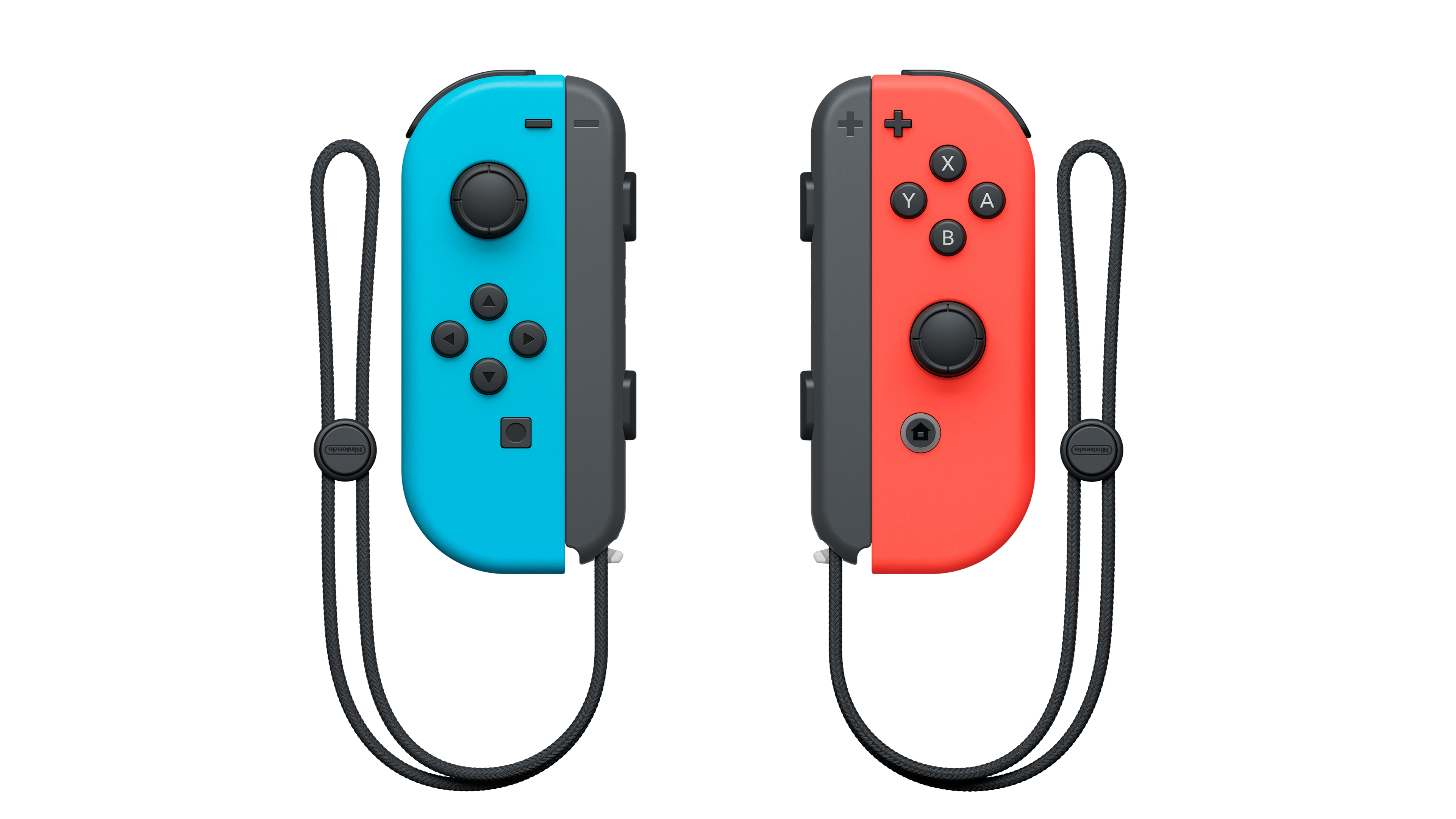

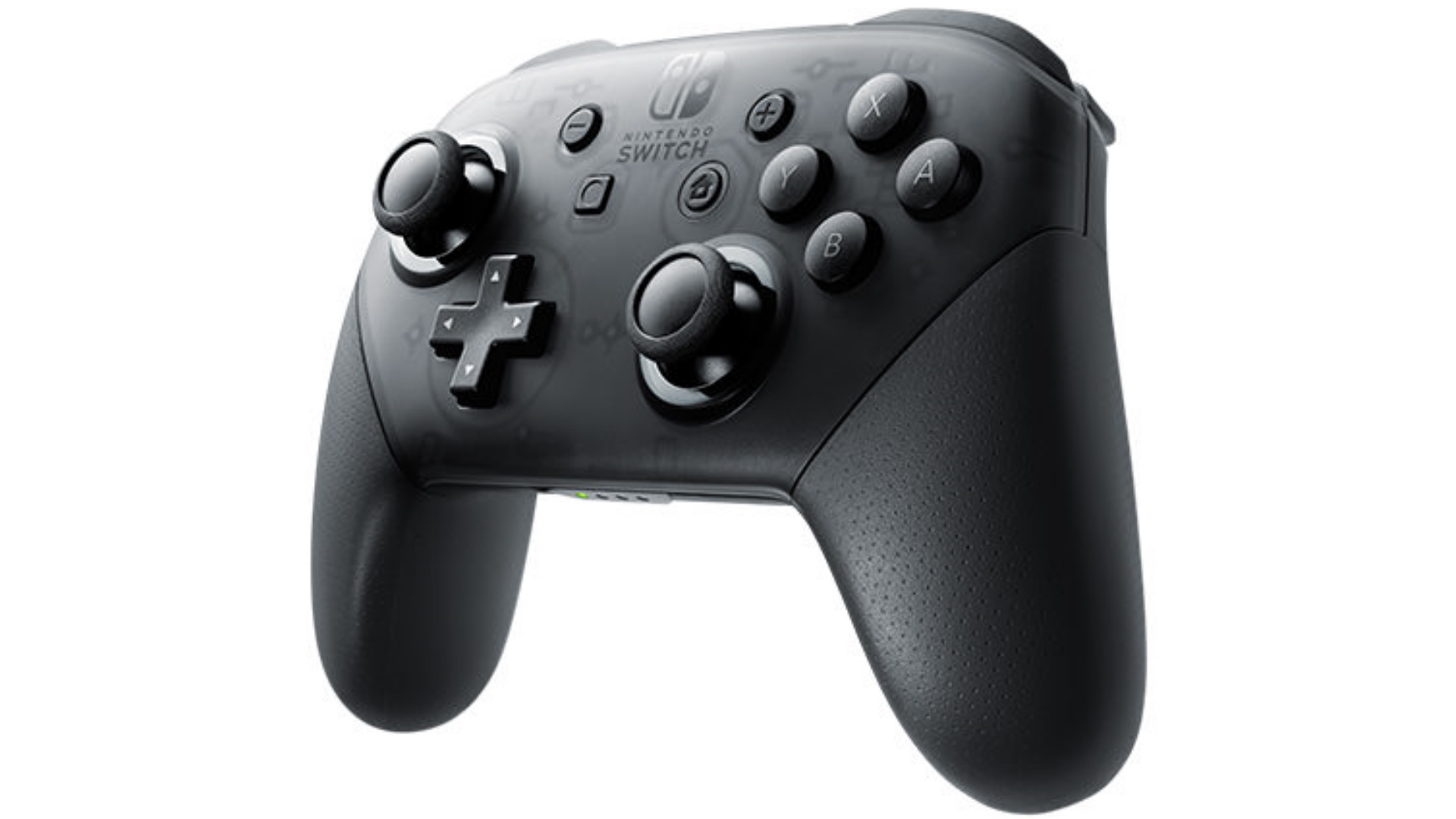














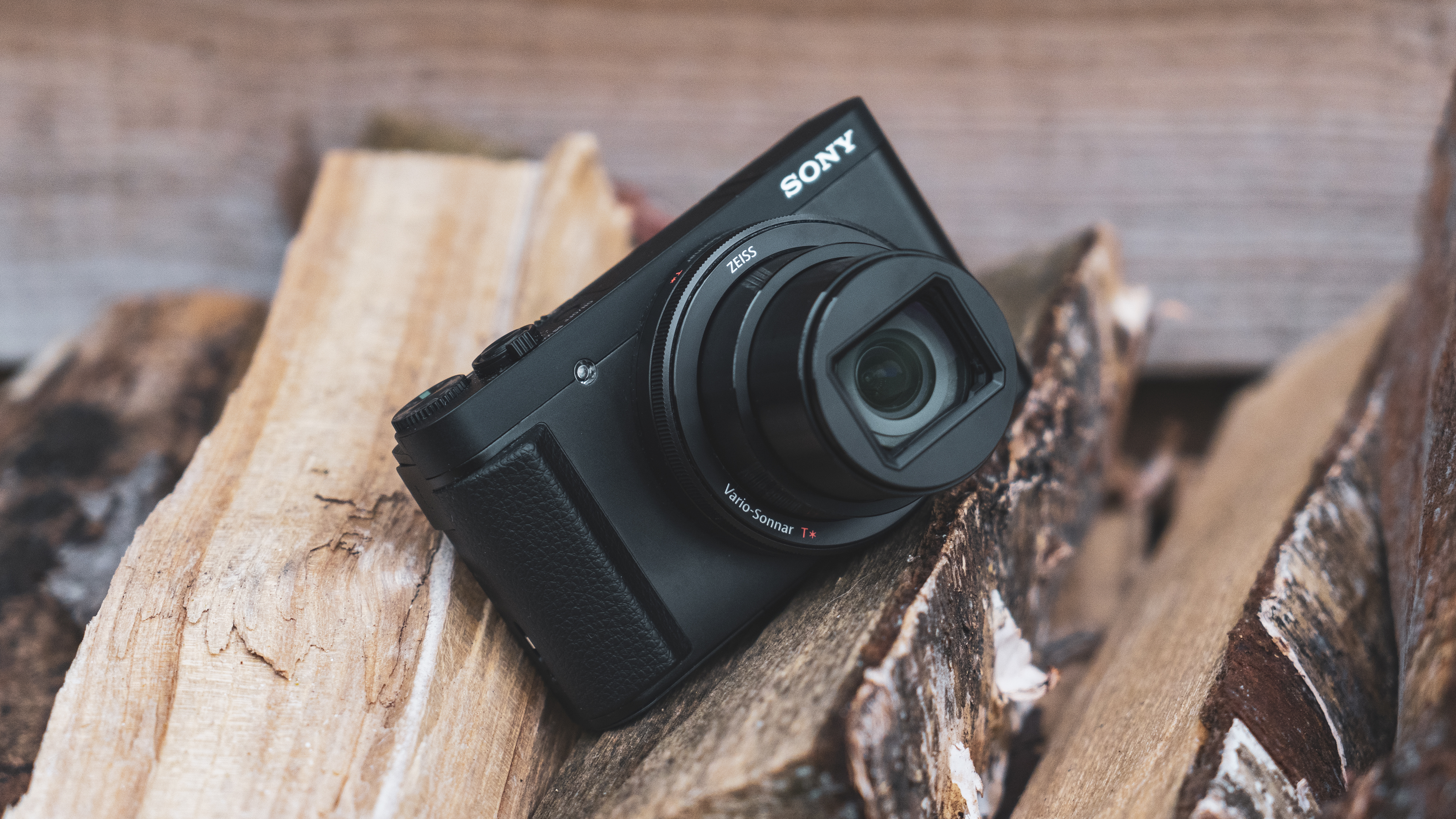
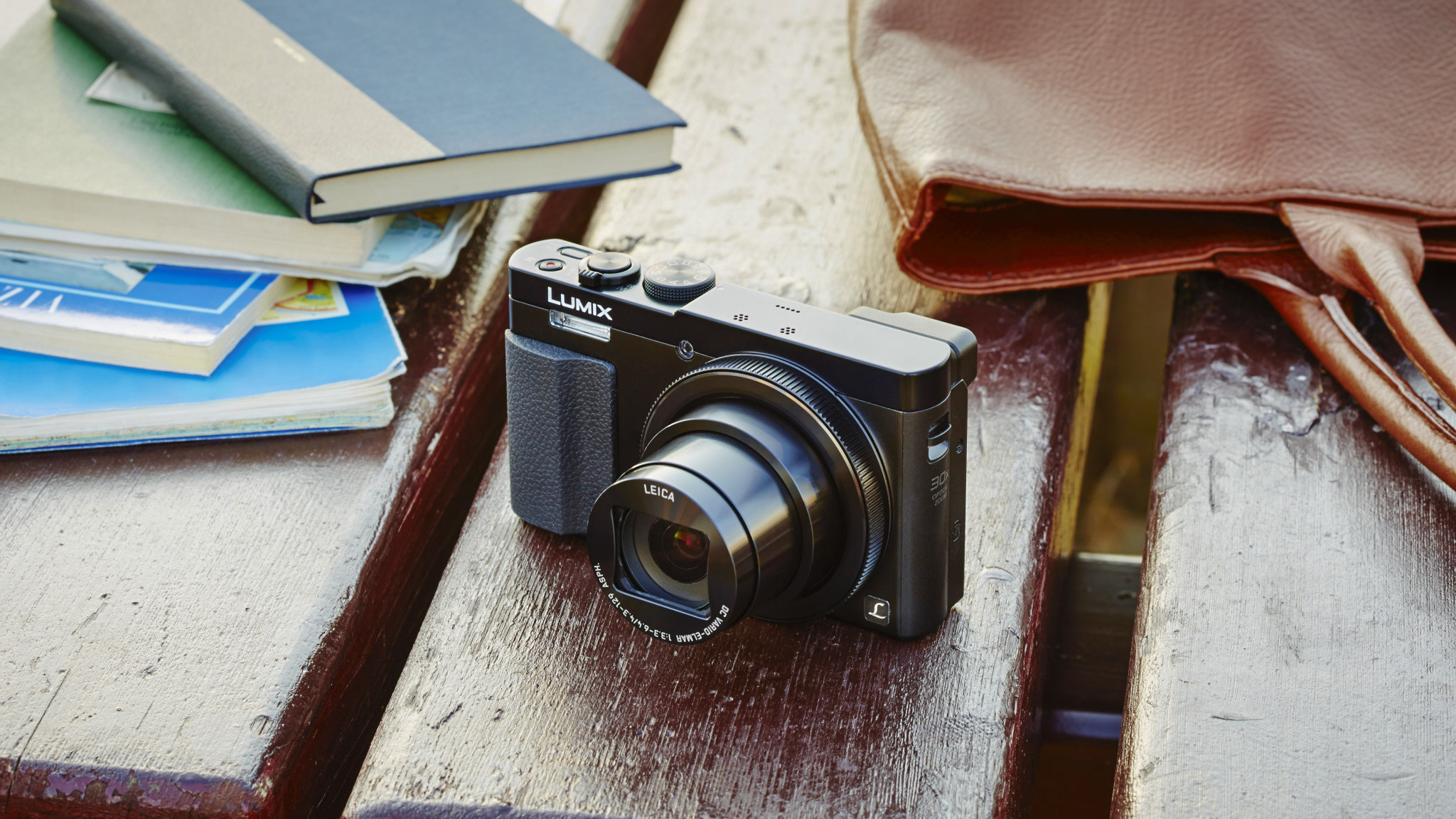



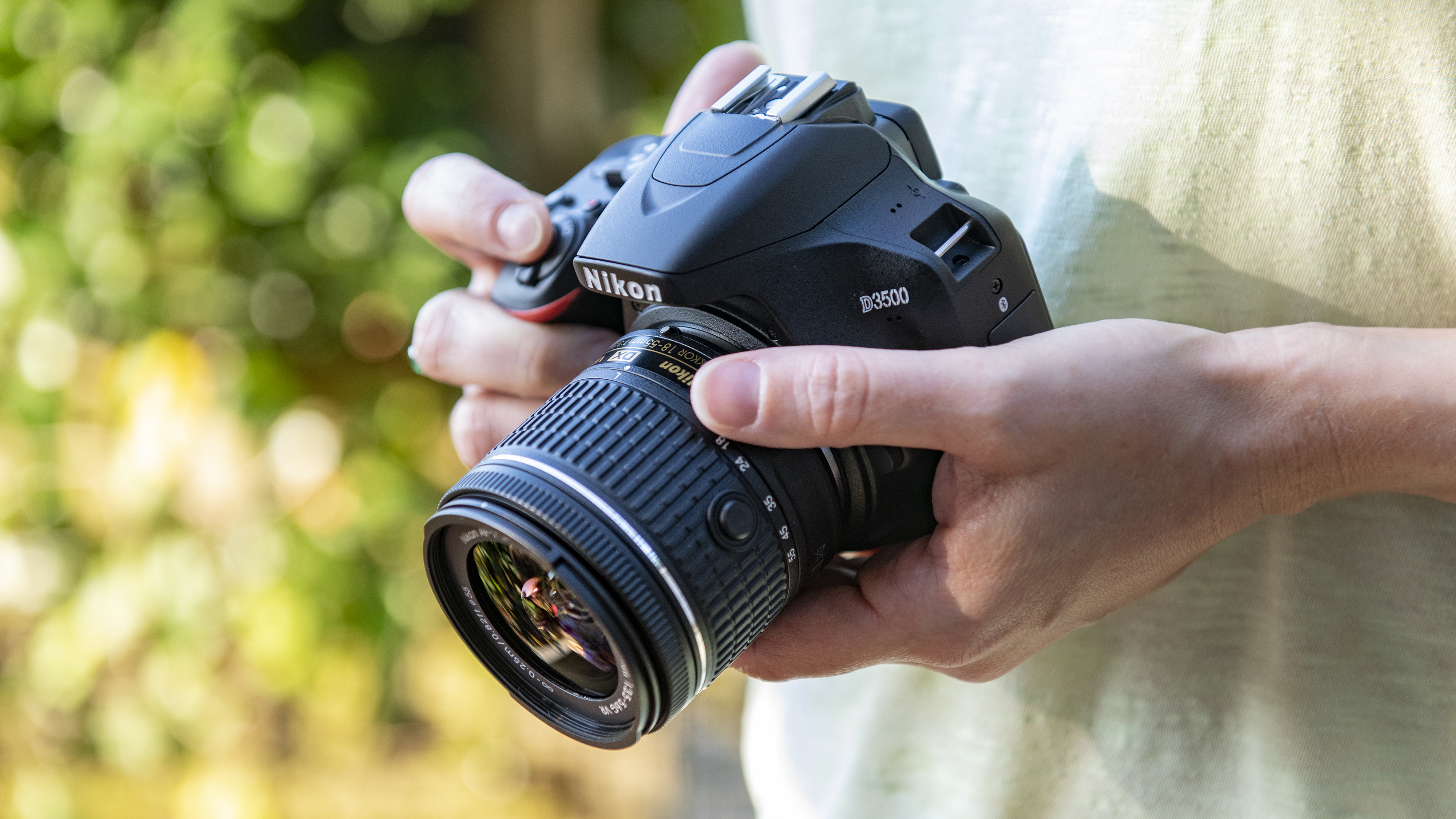


No comments:
Post a Comment